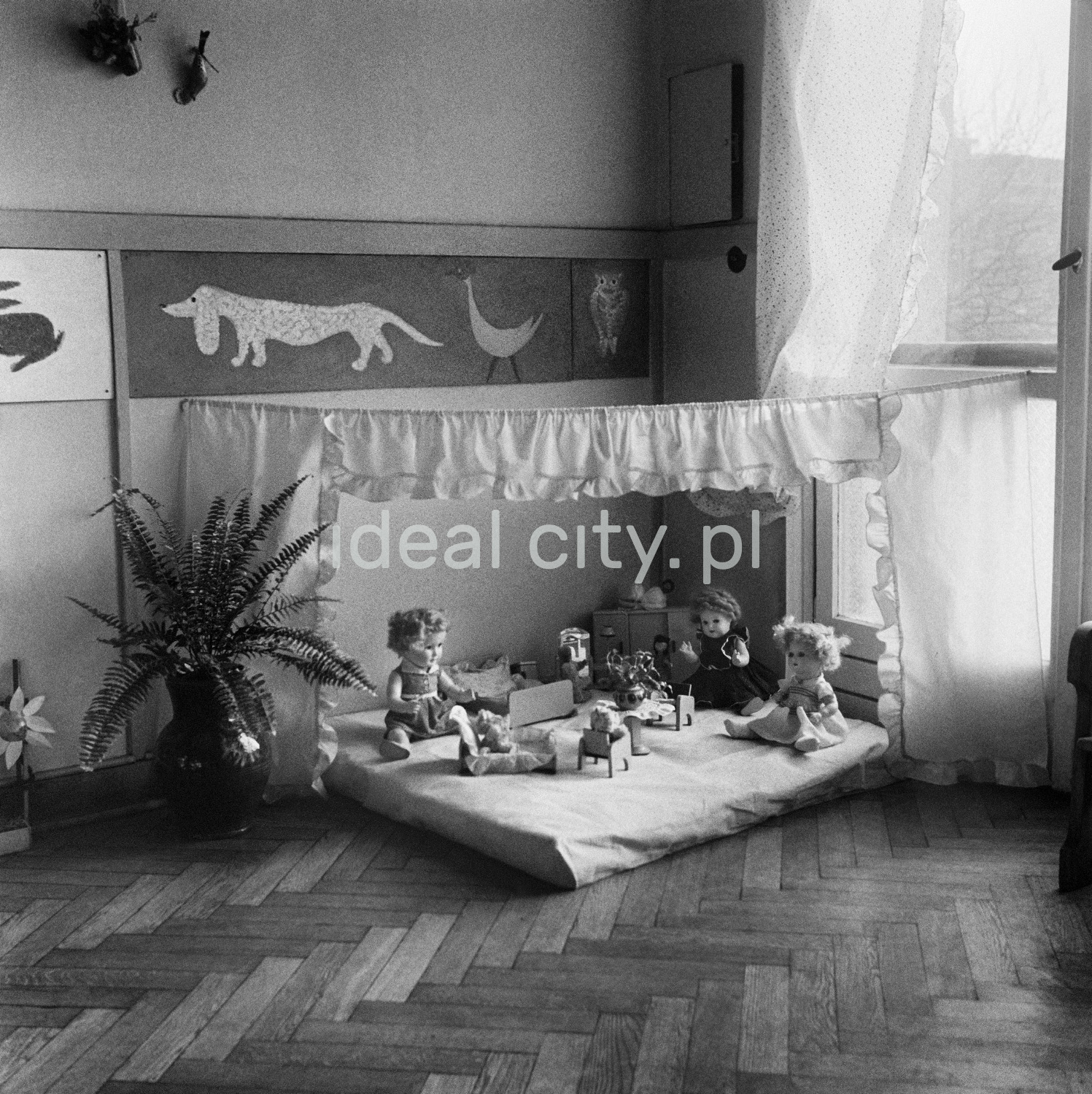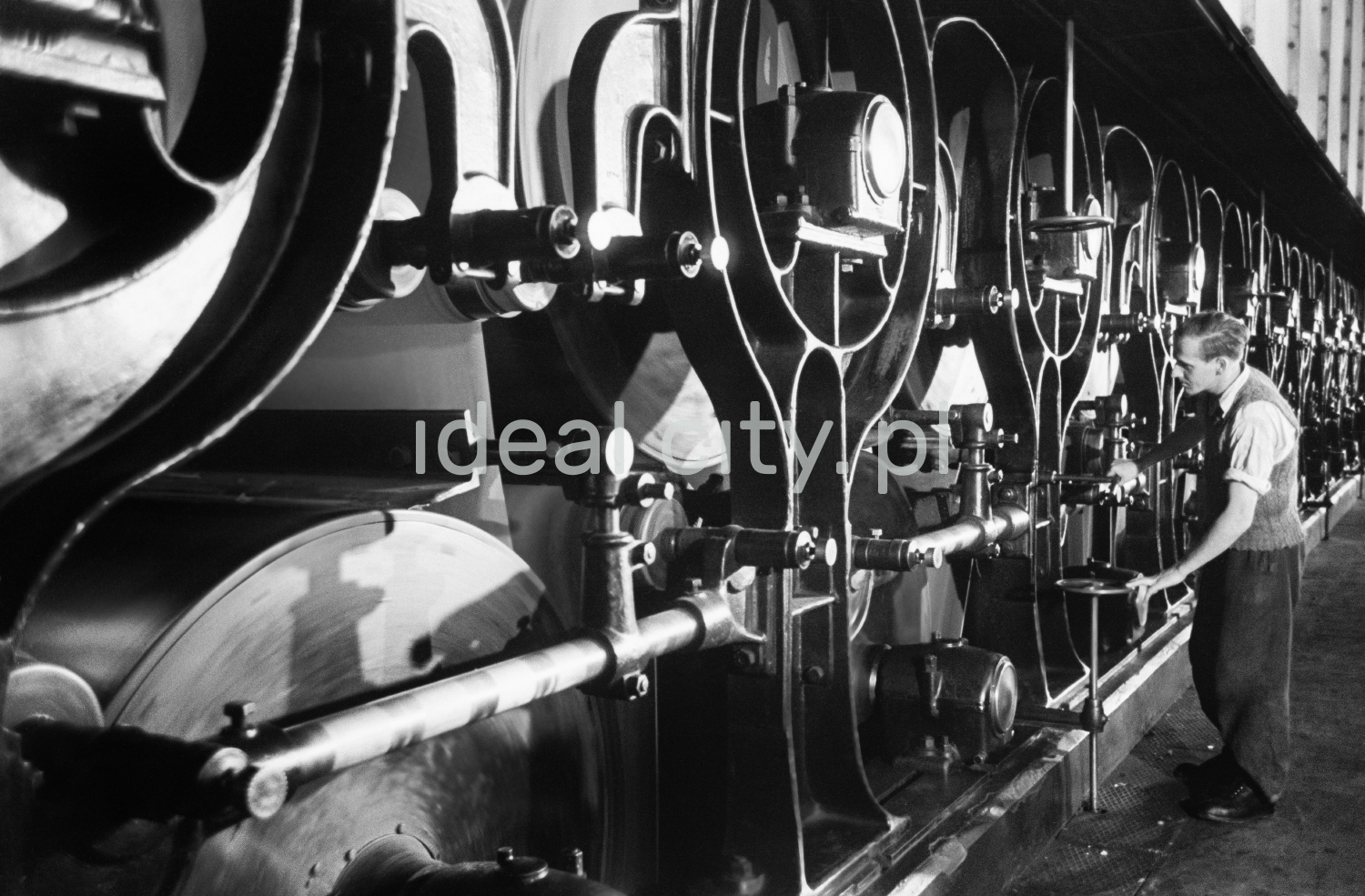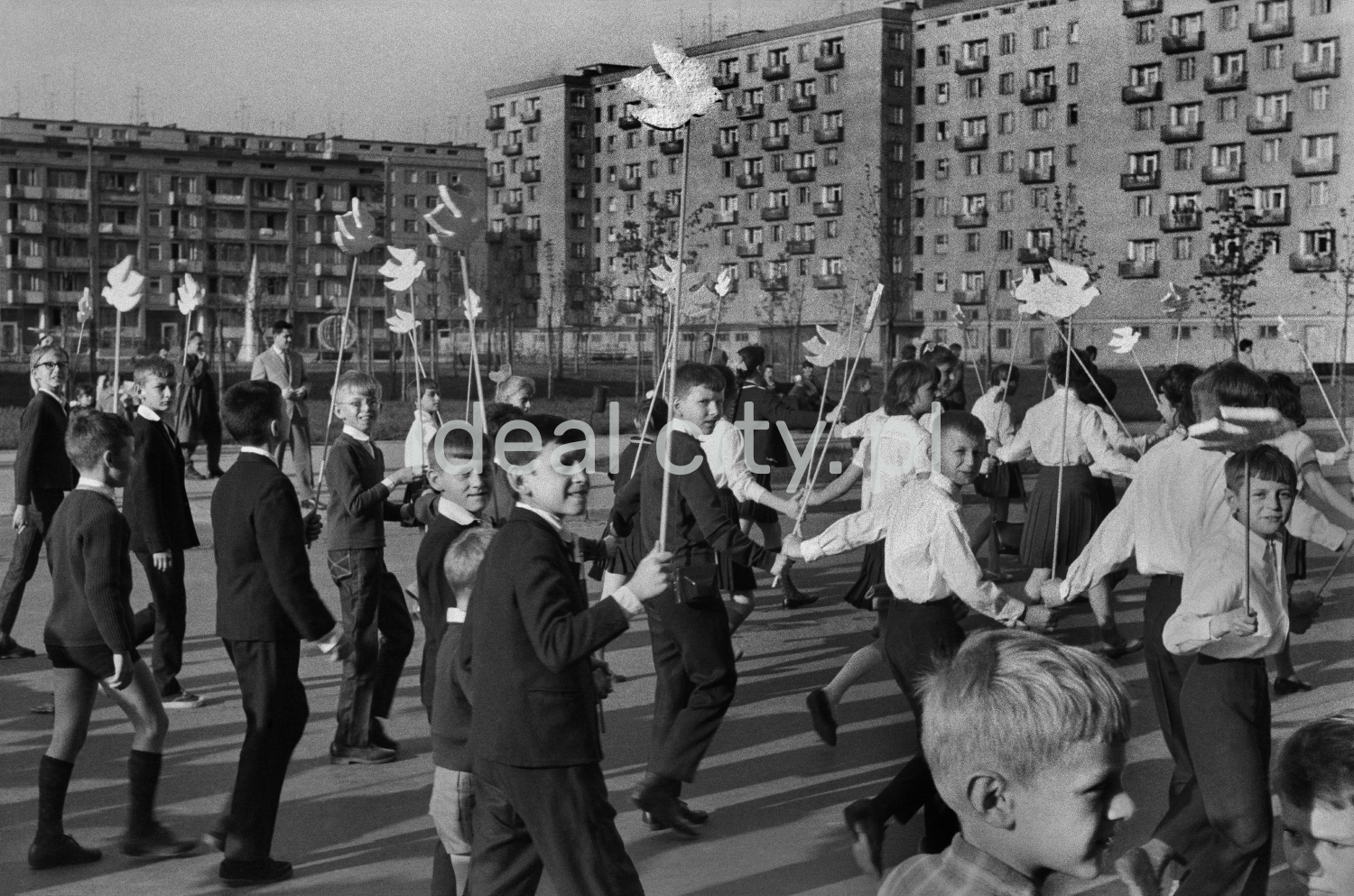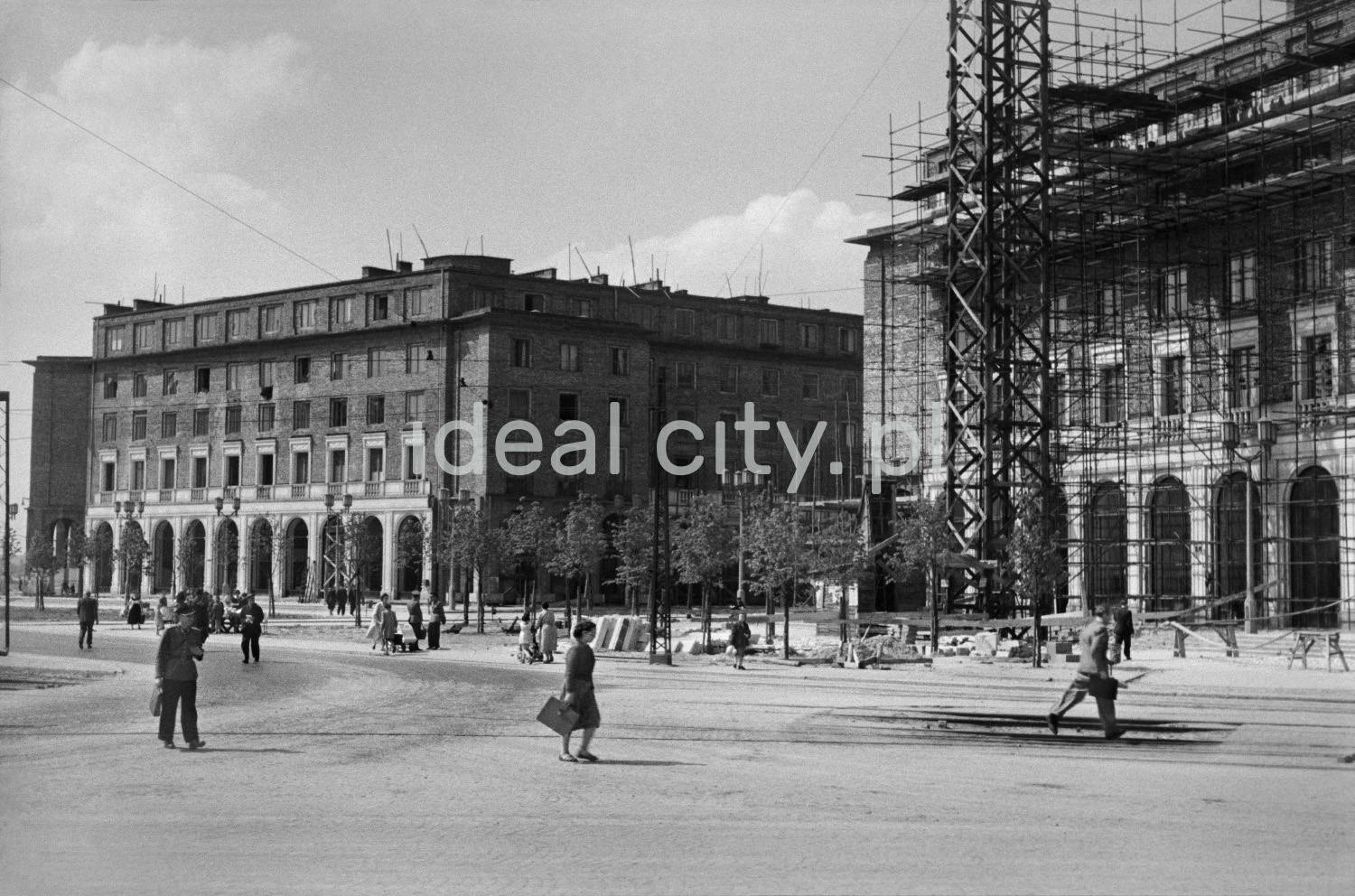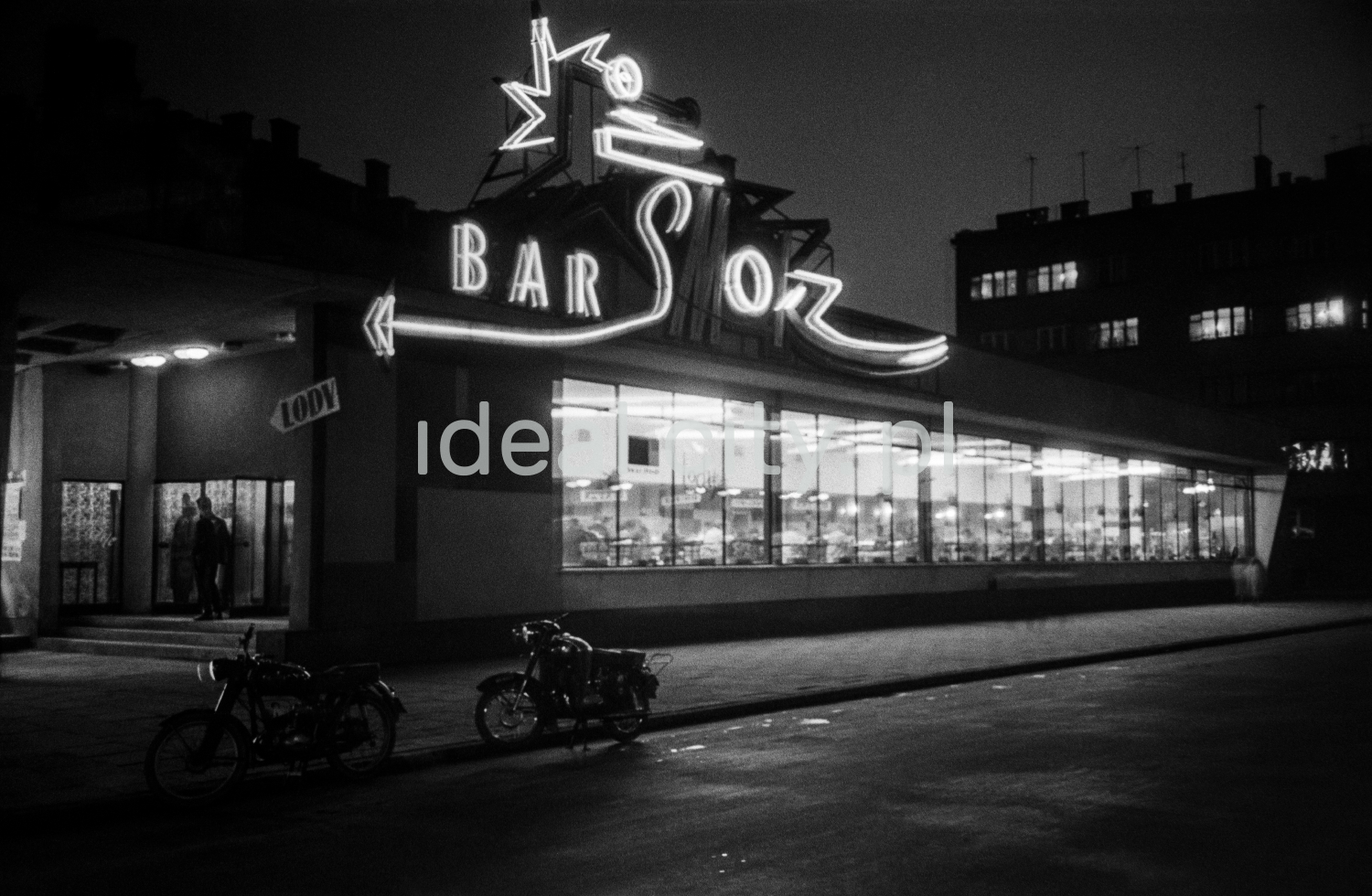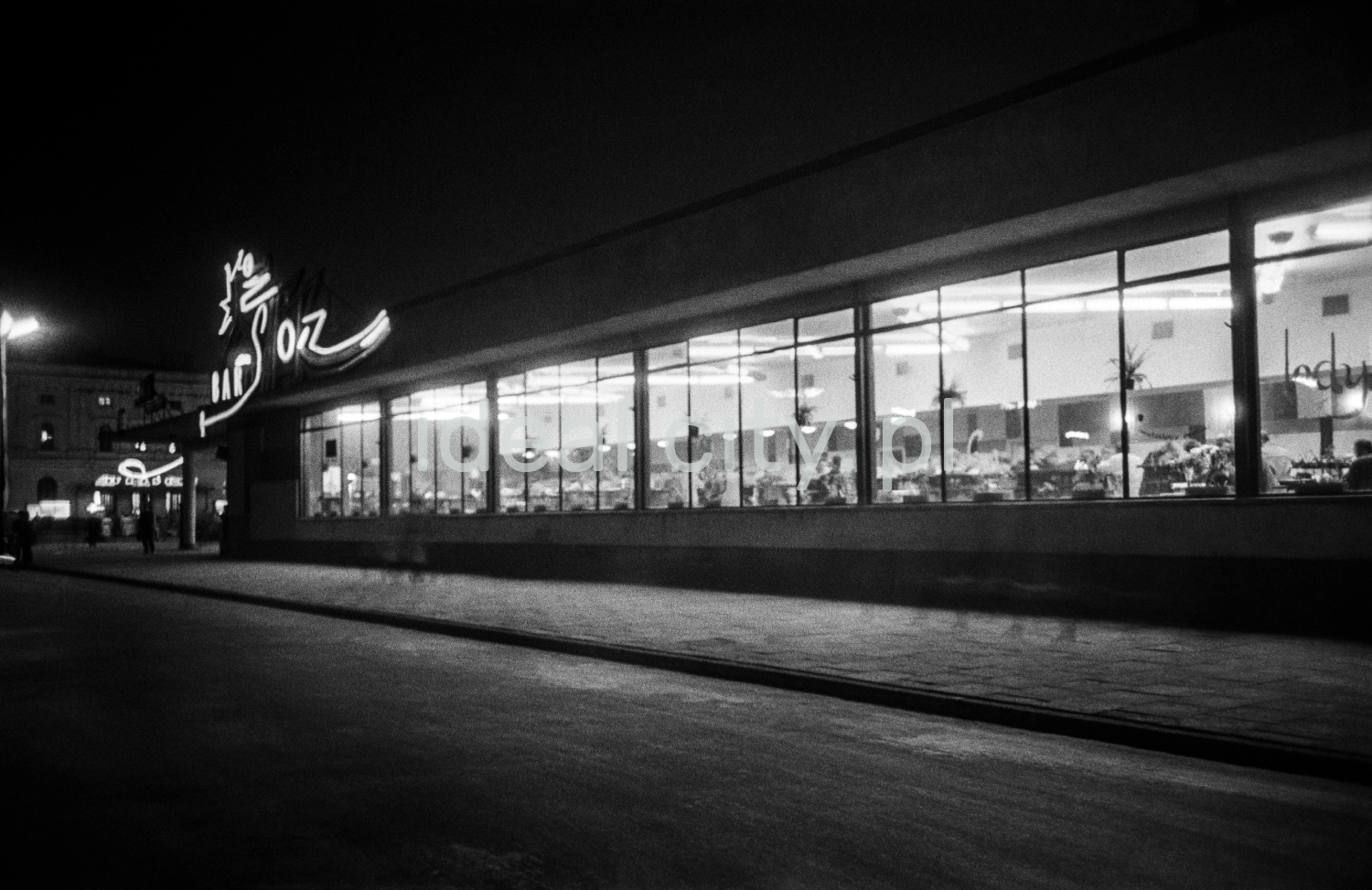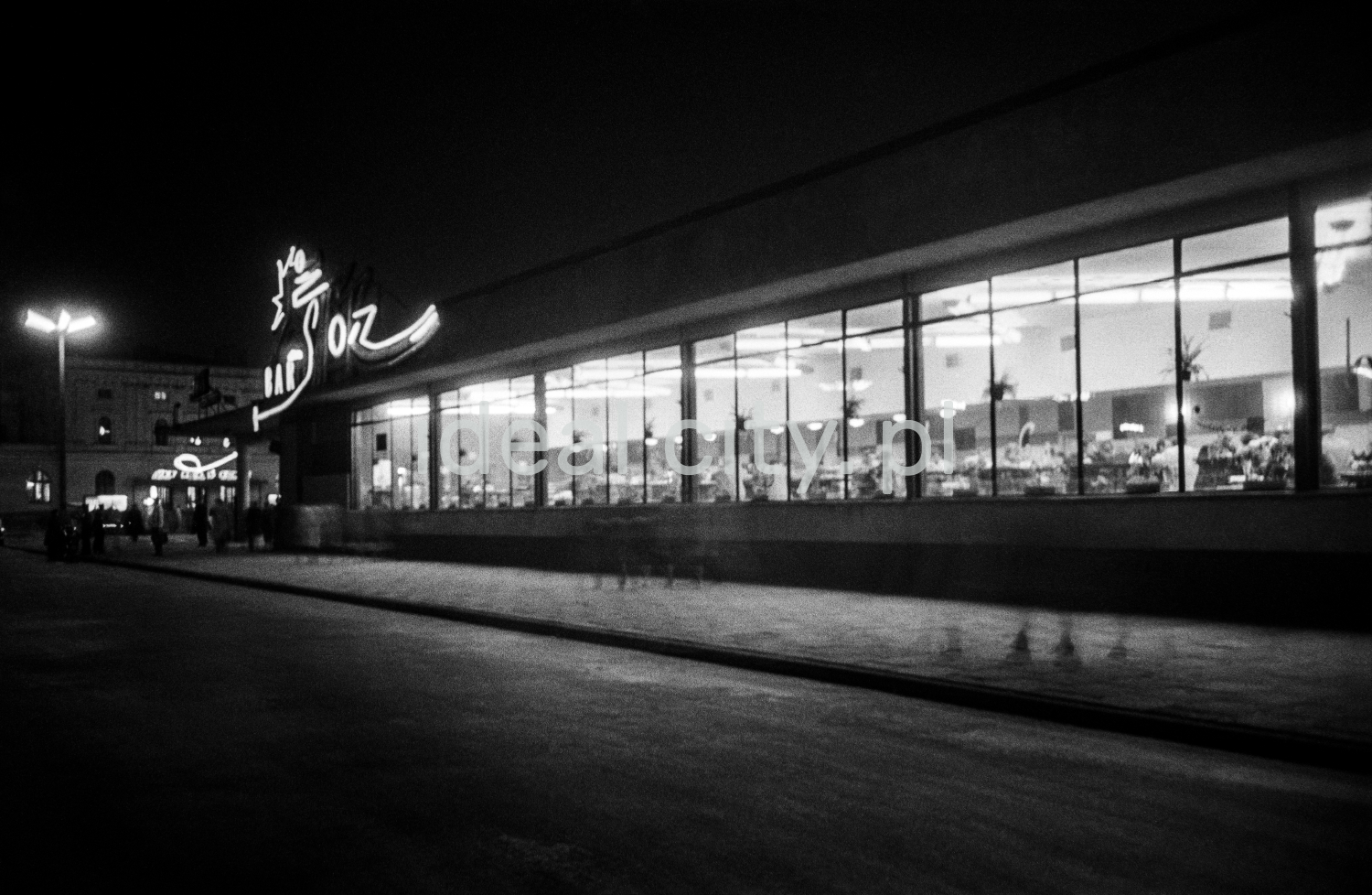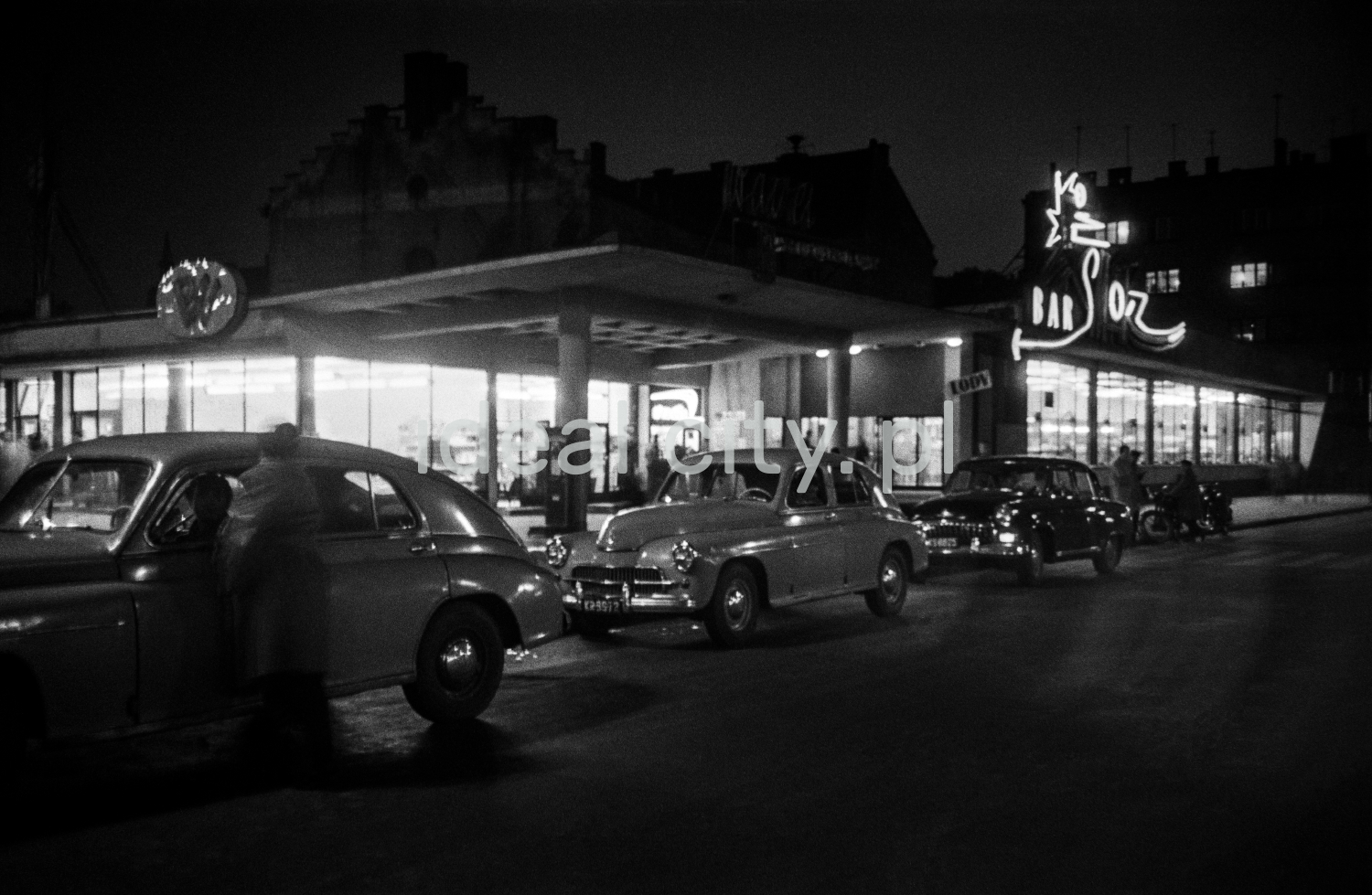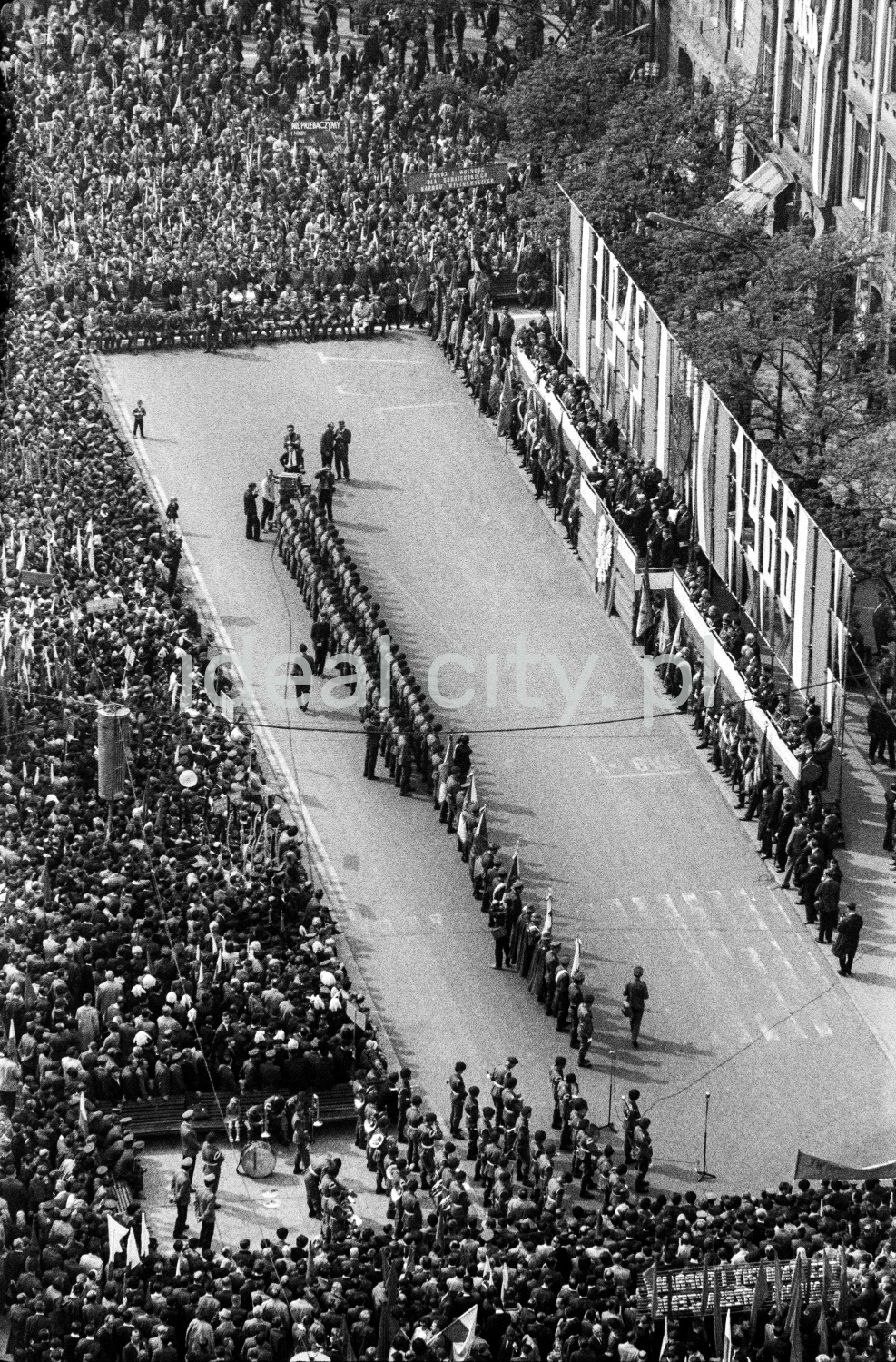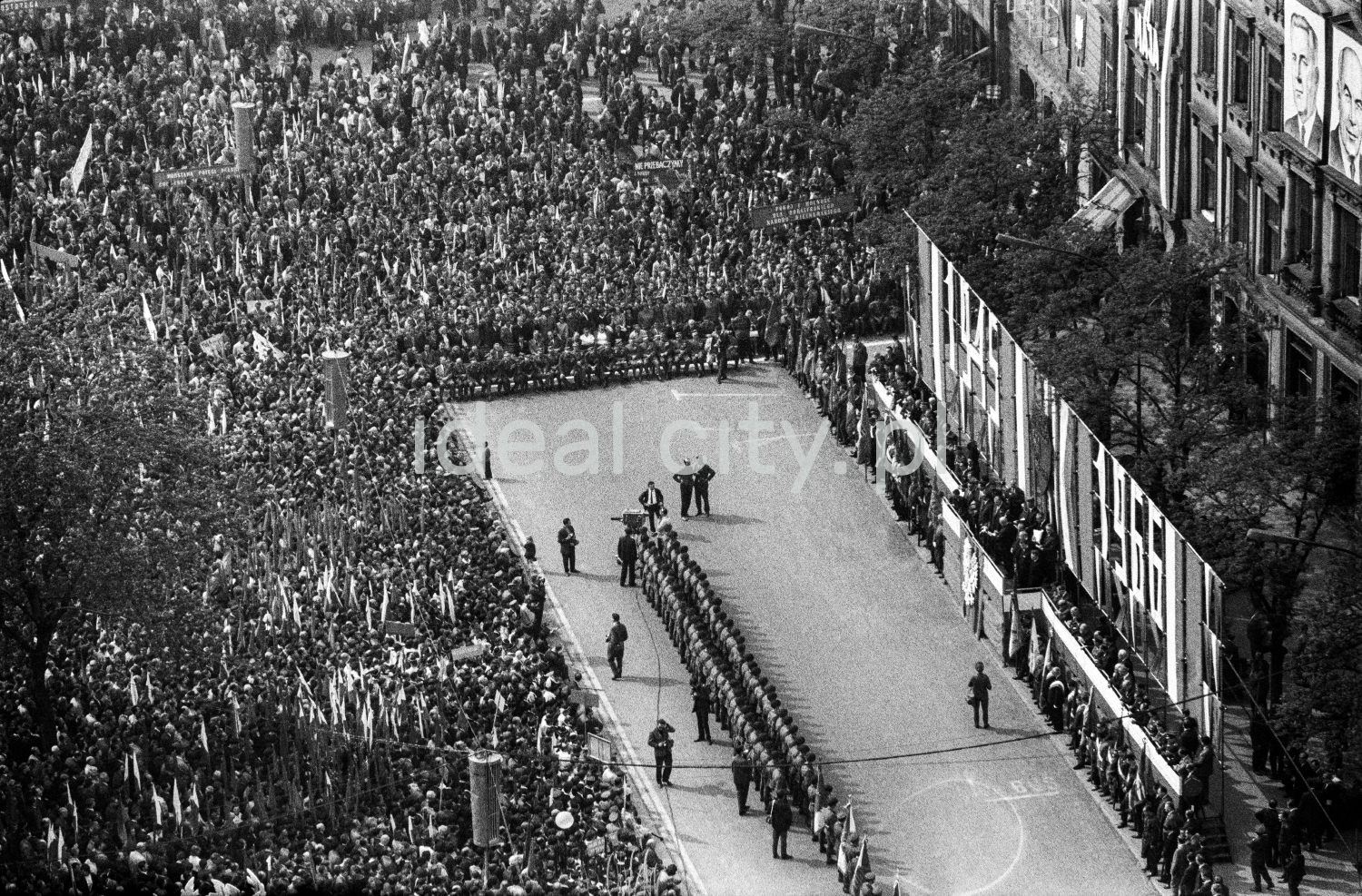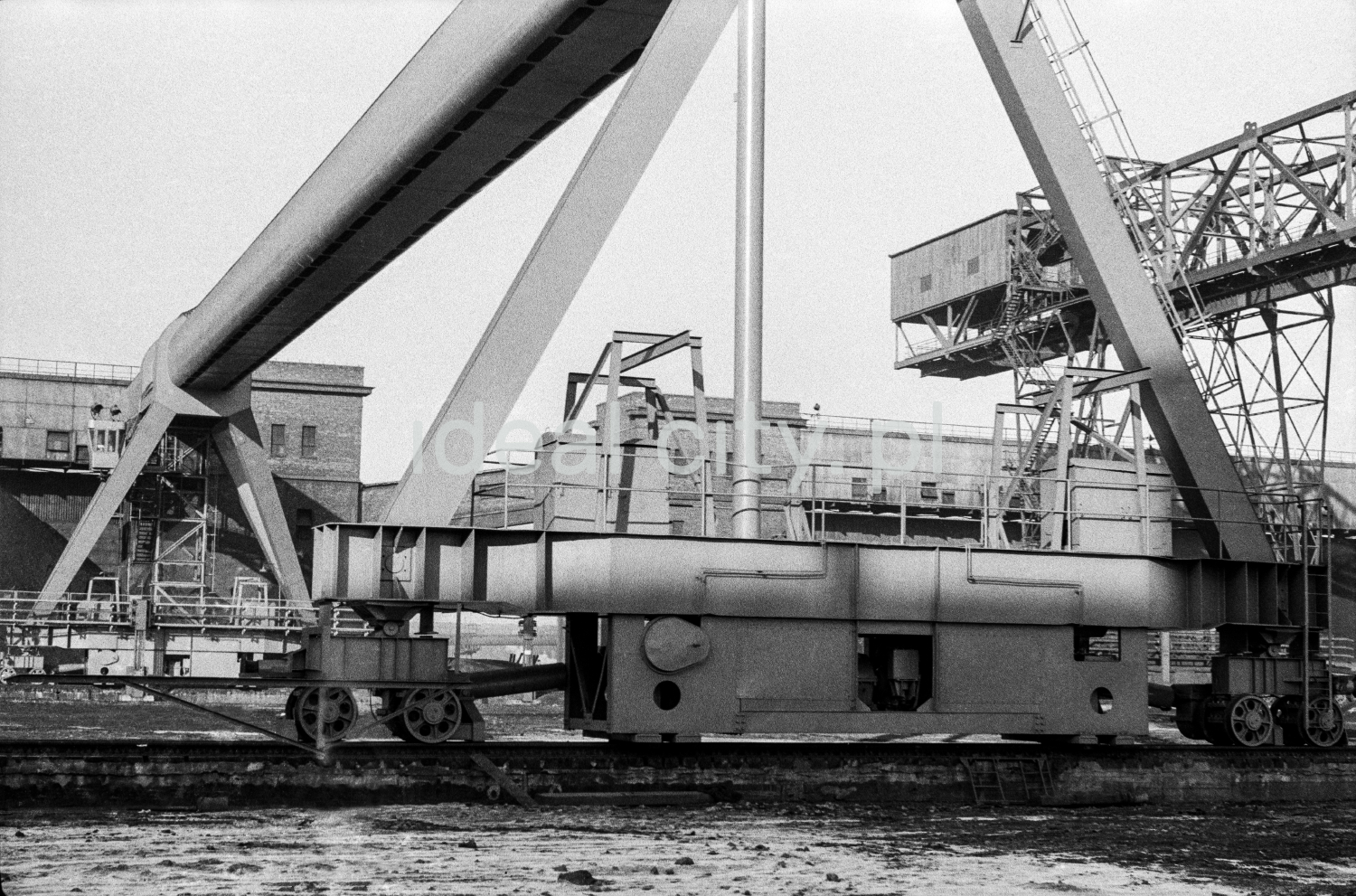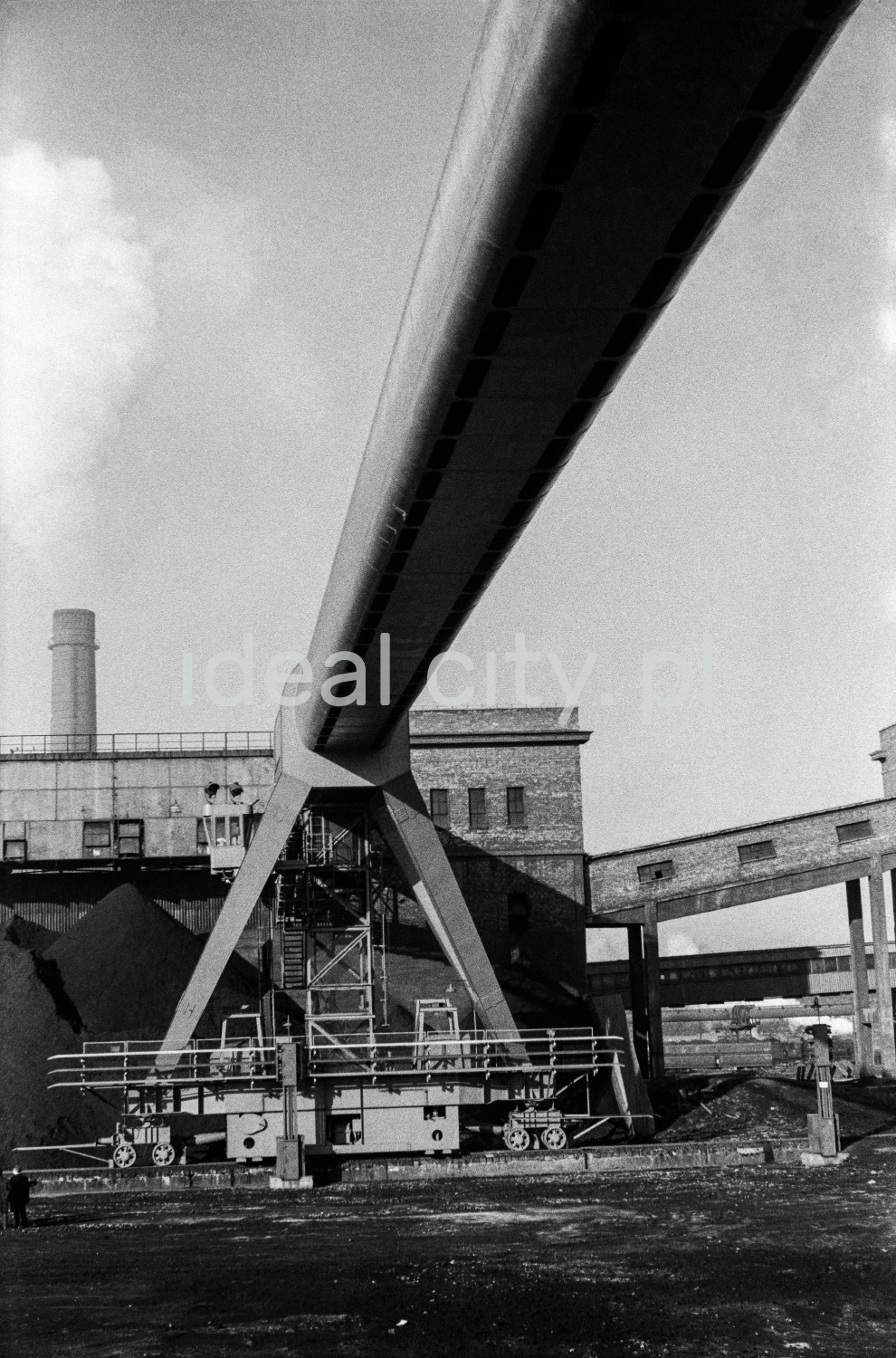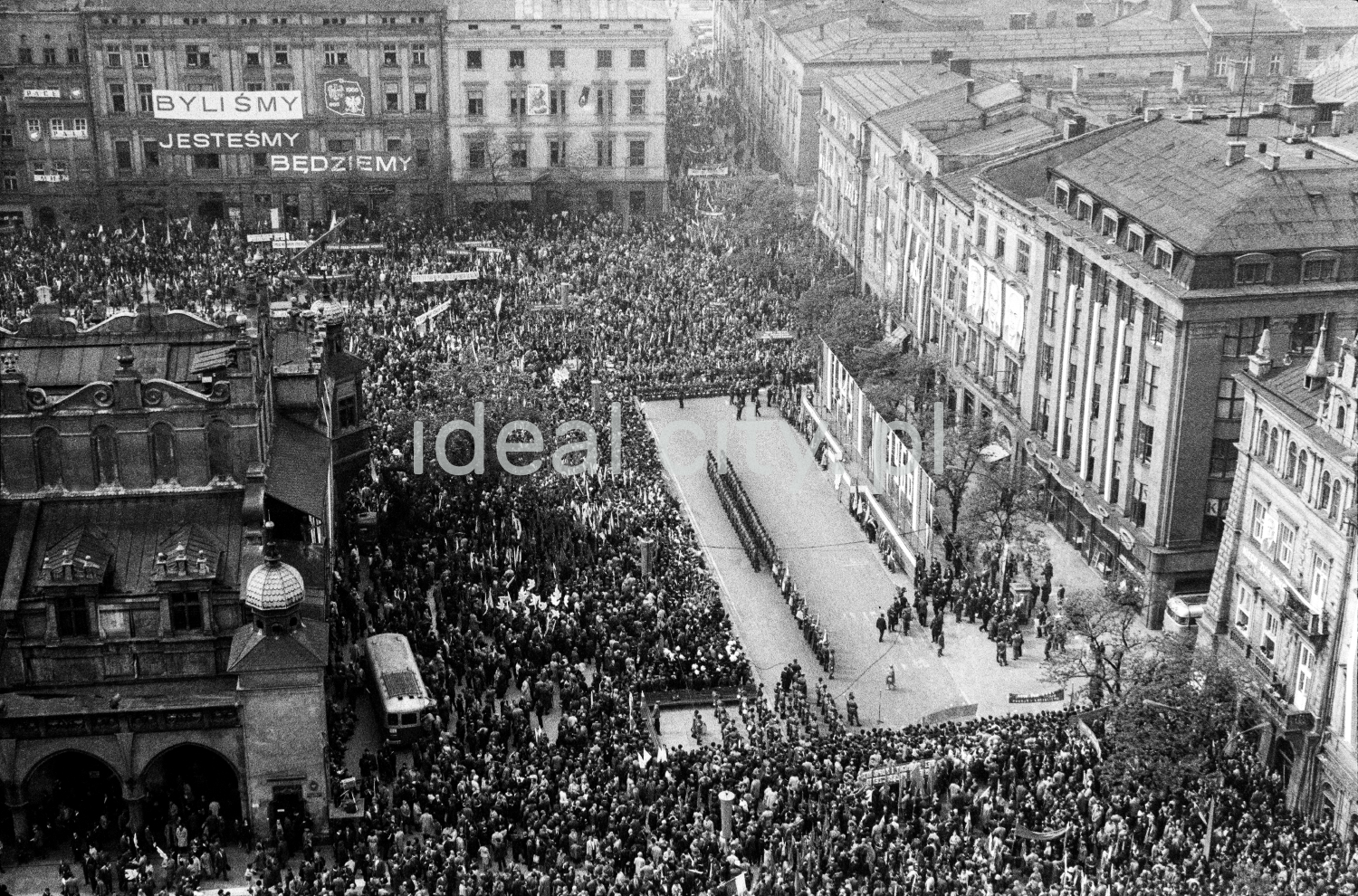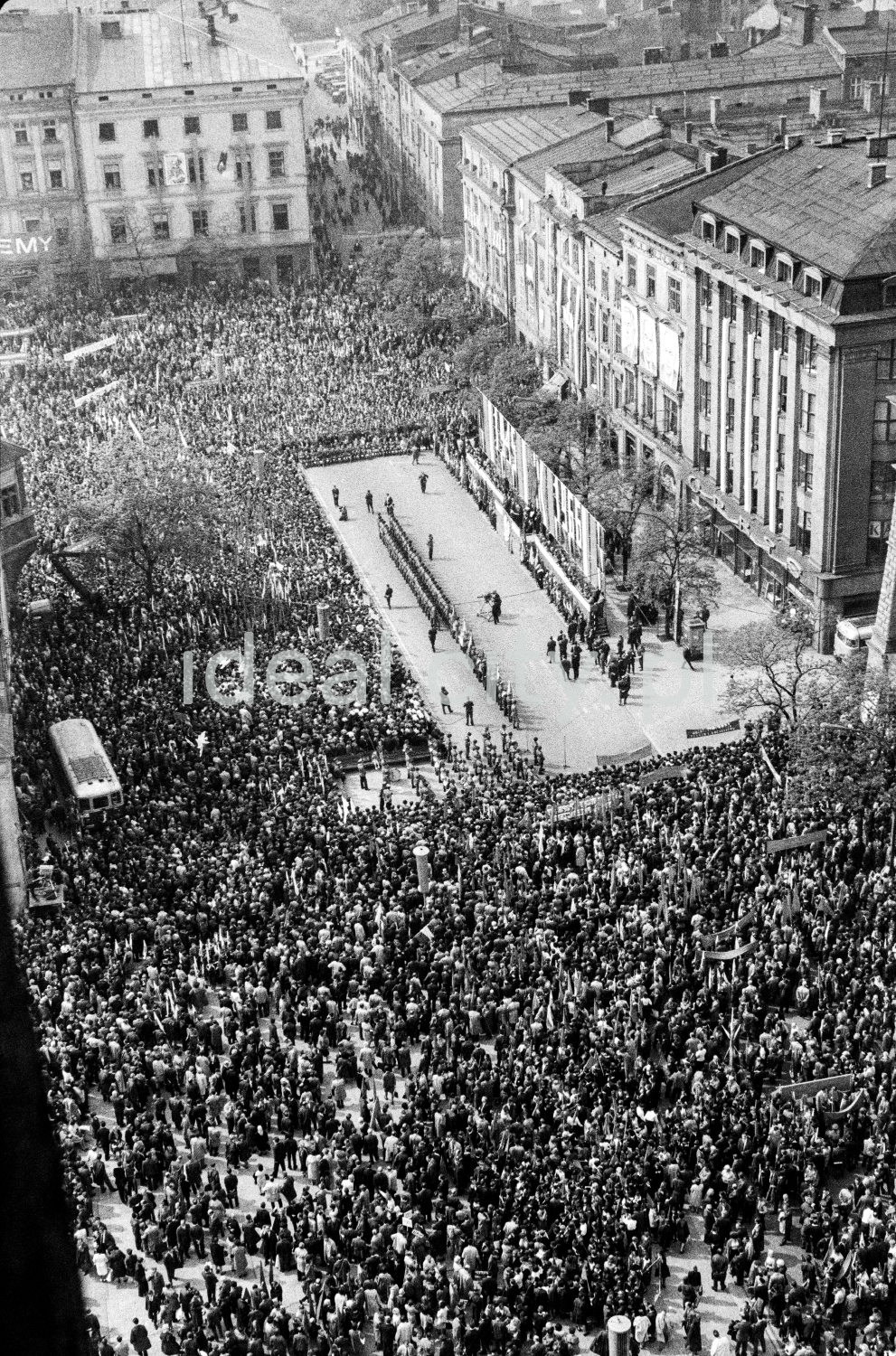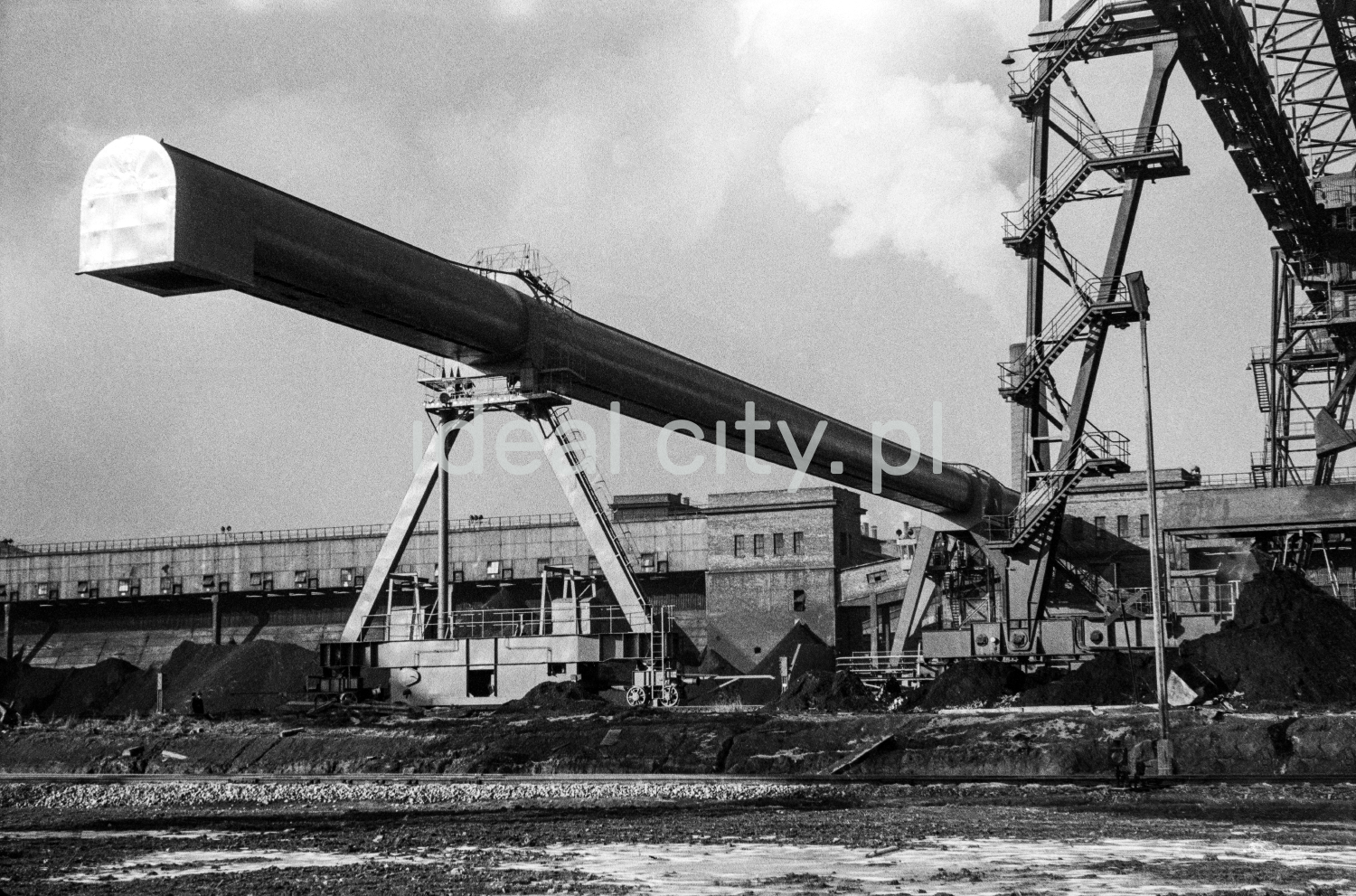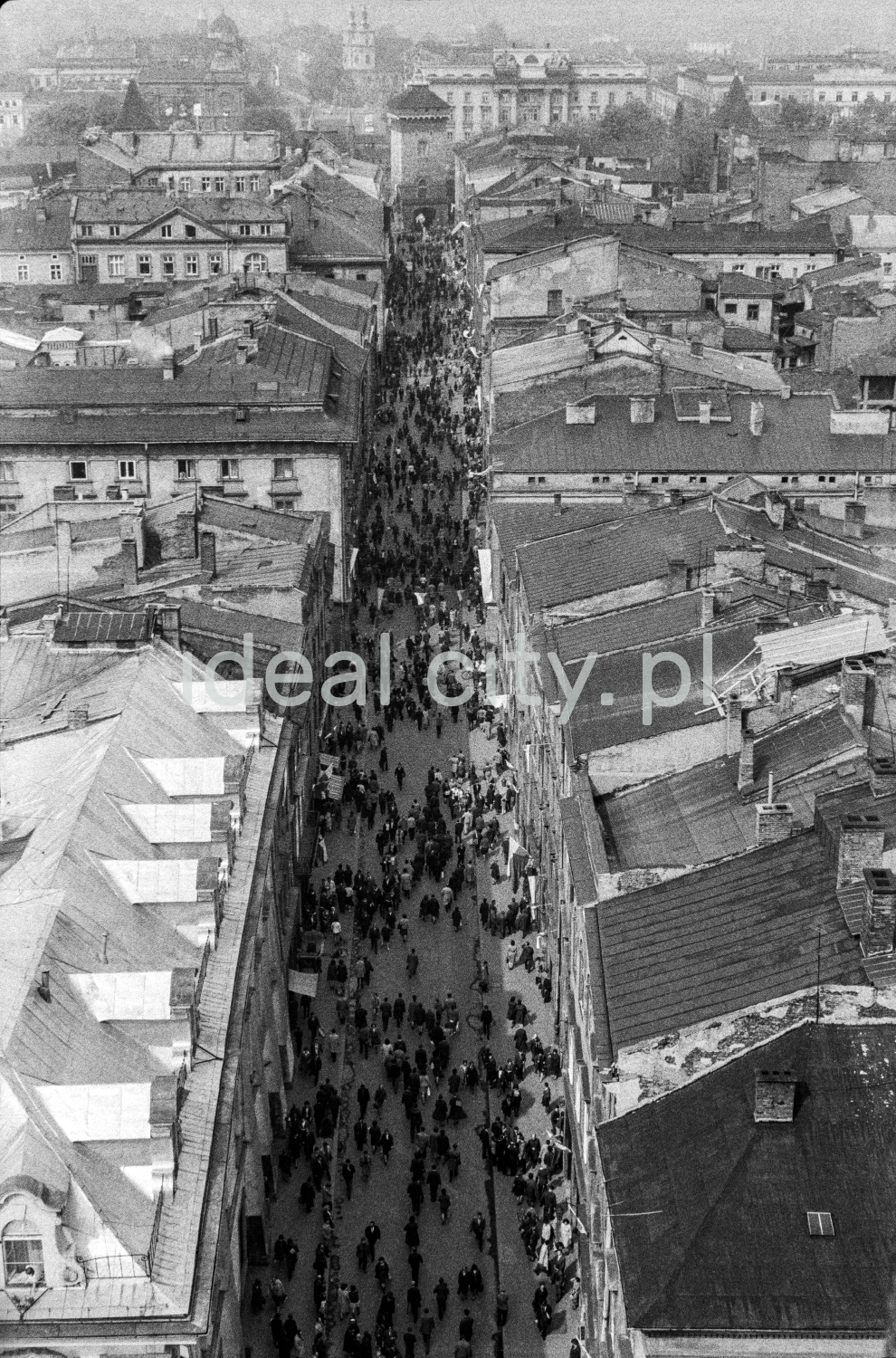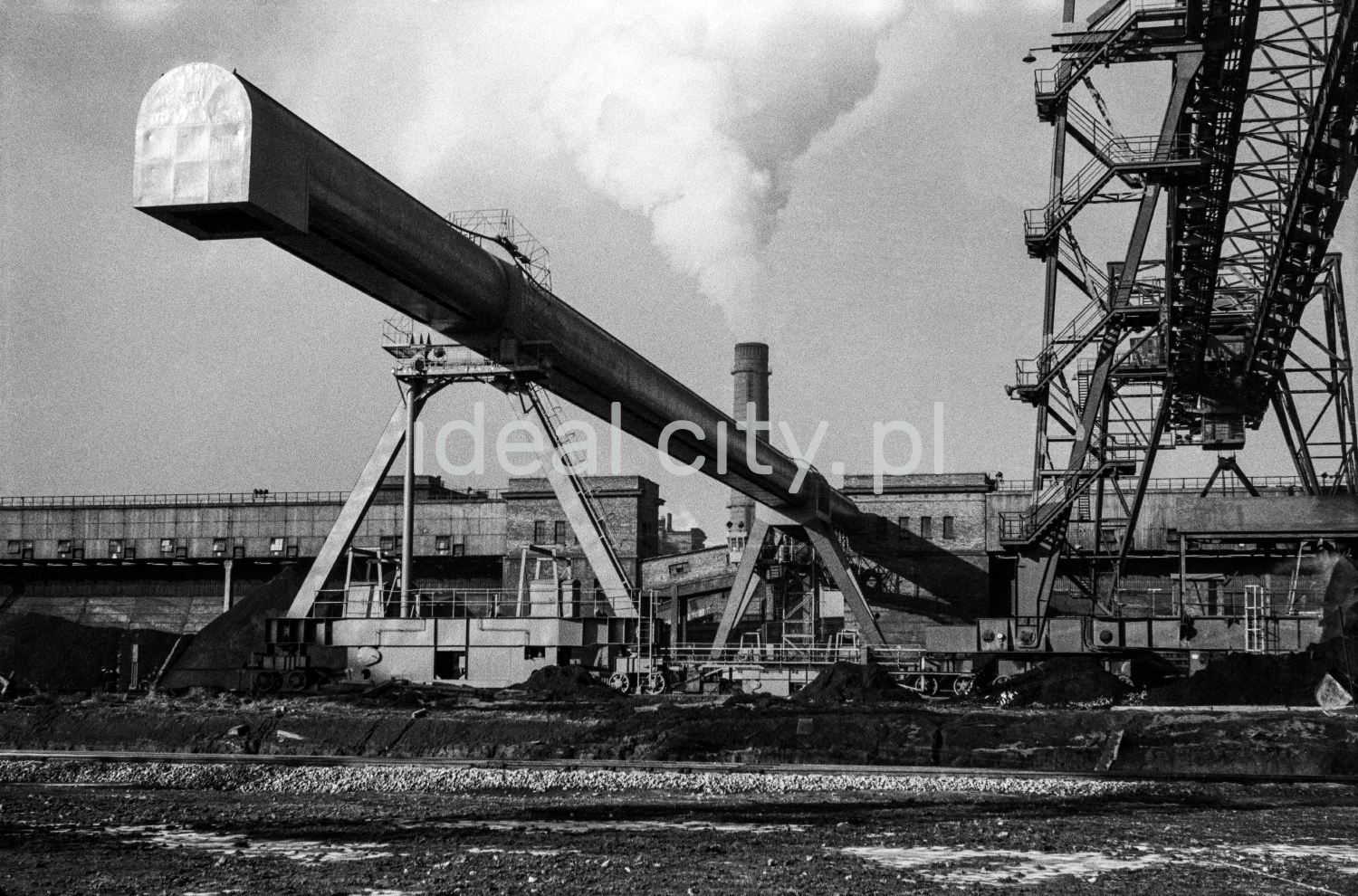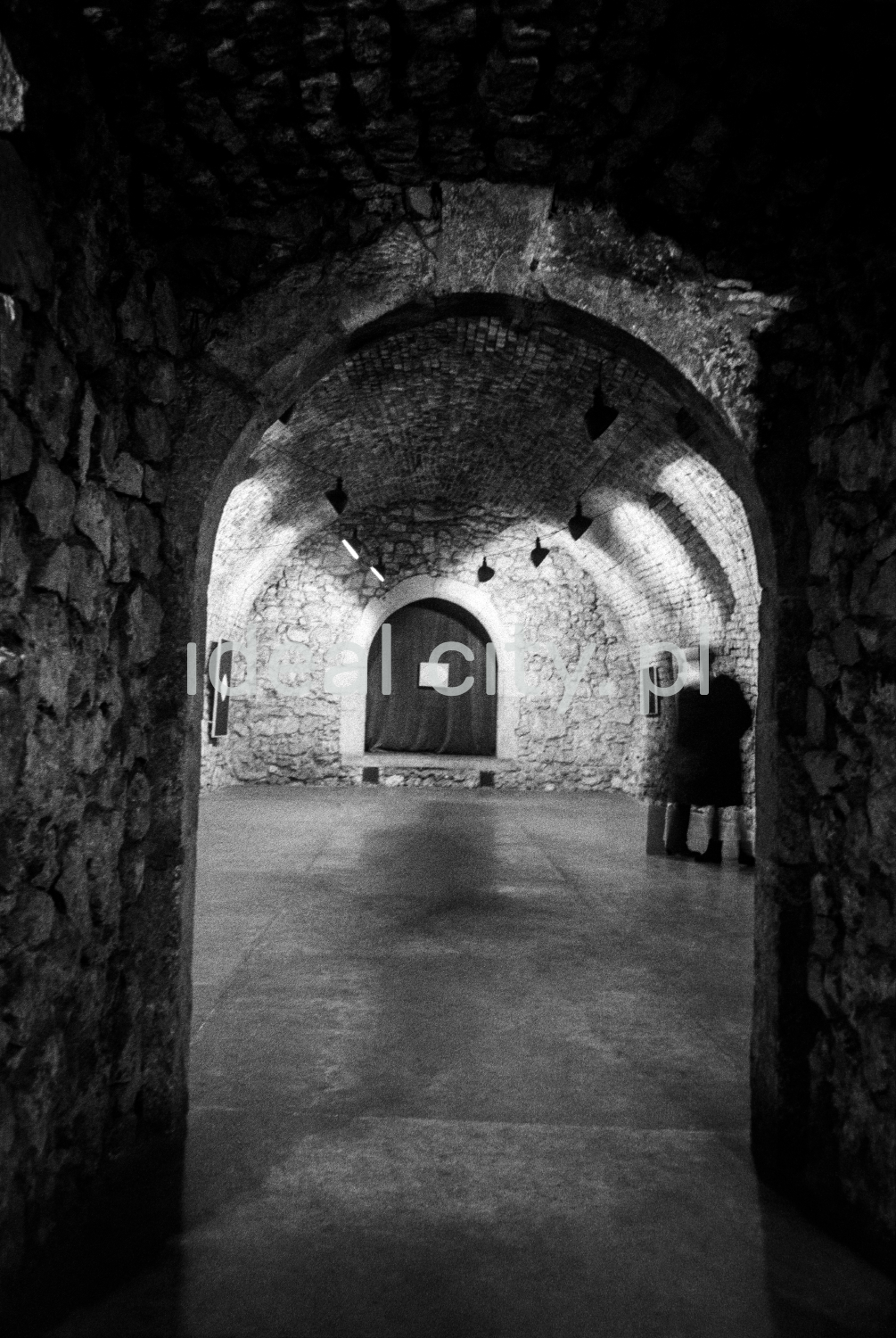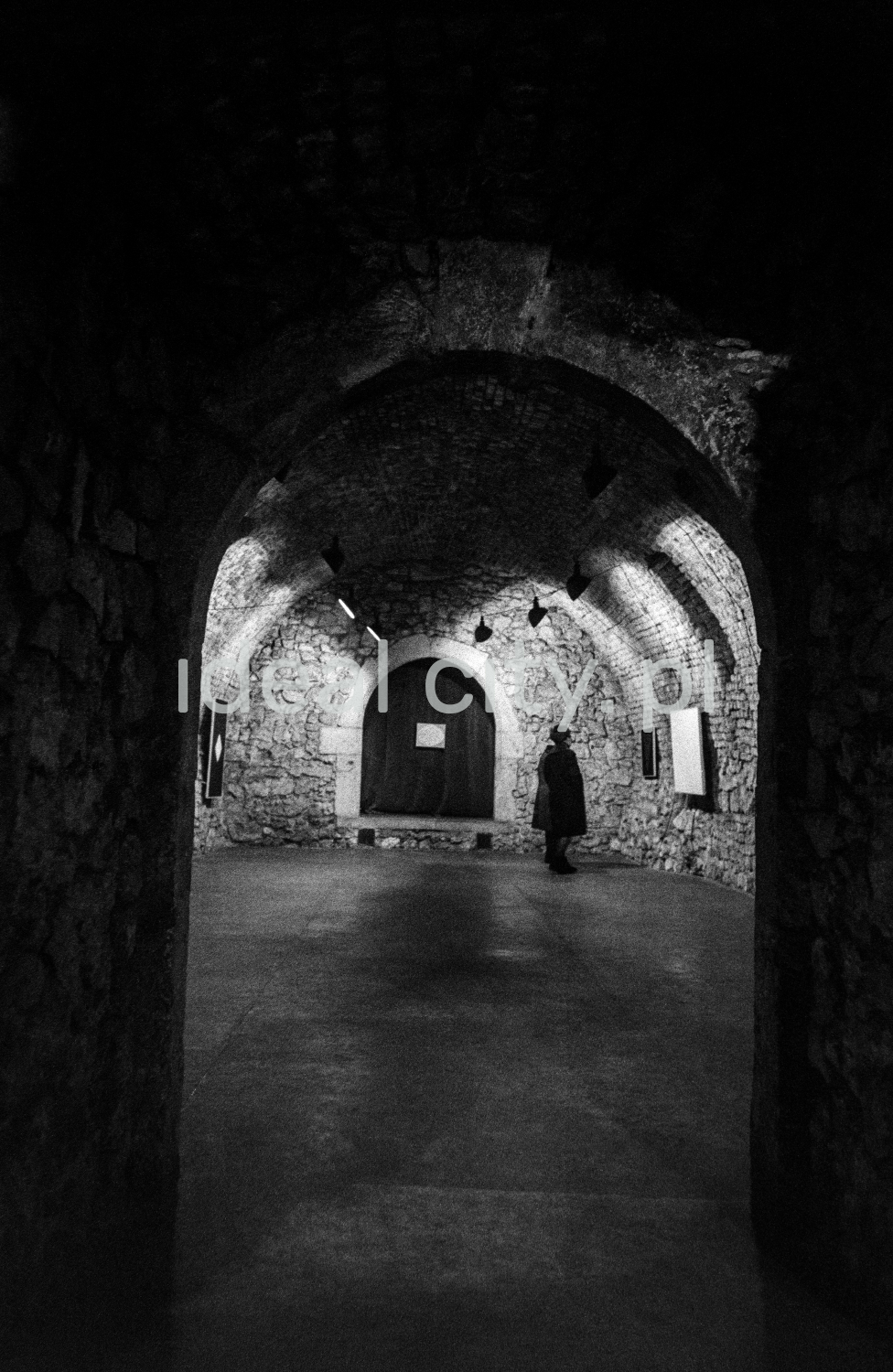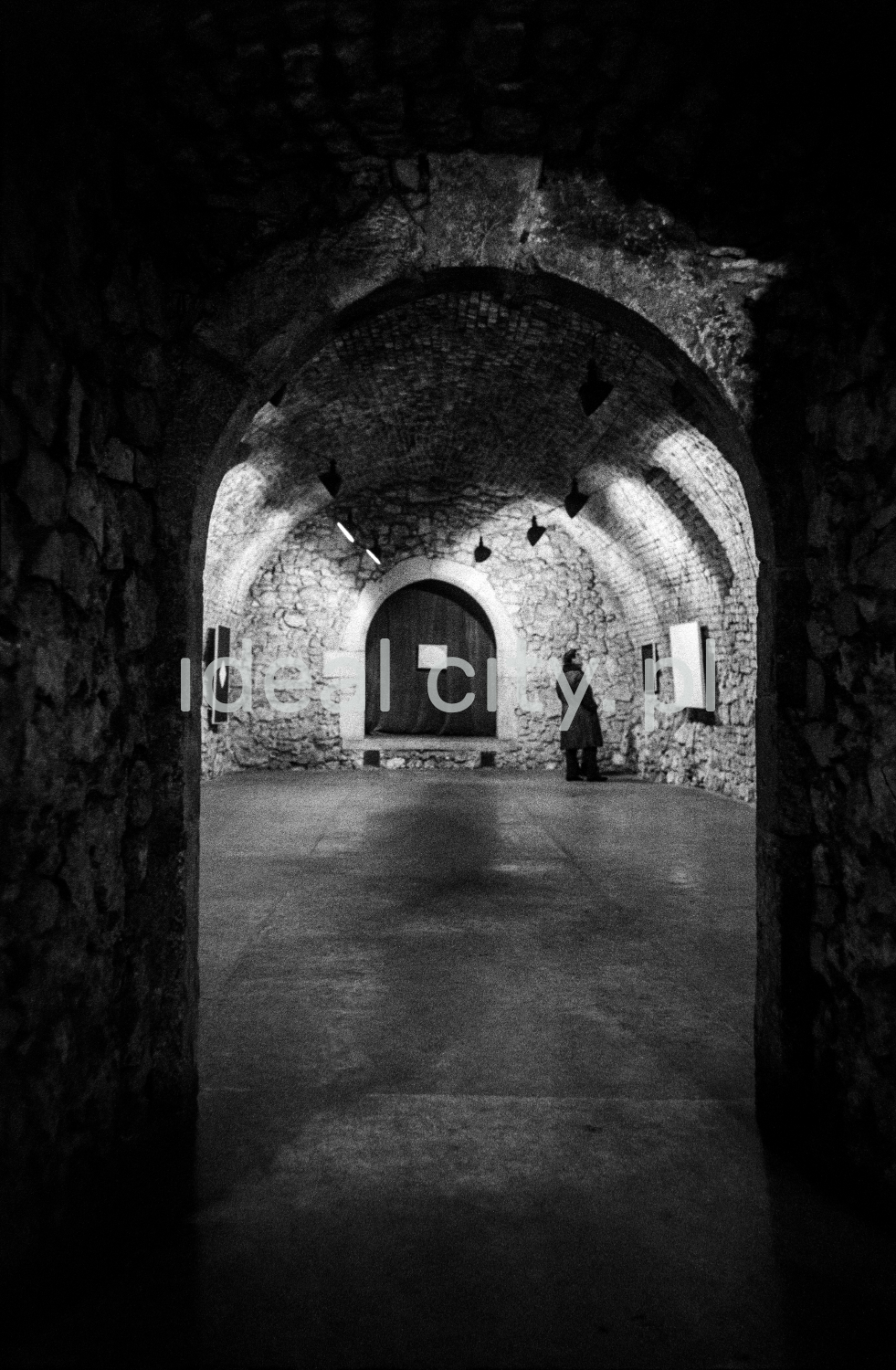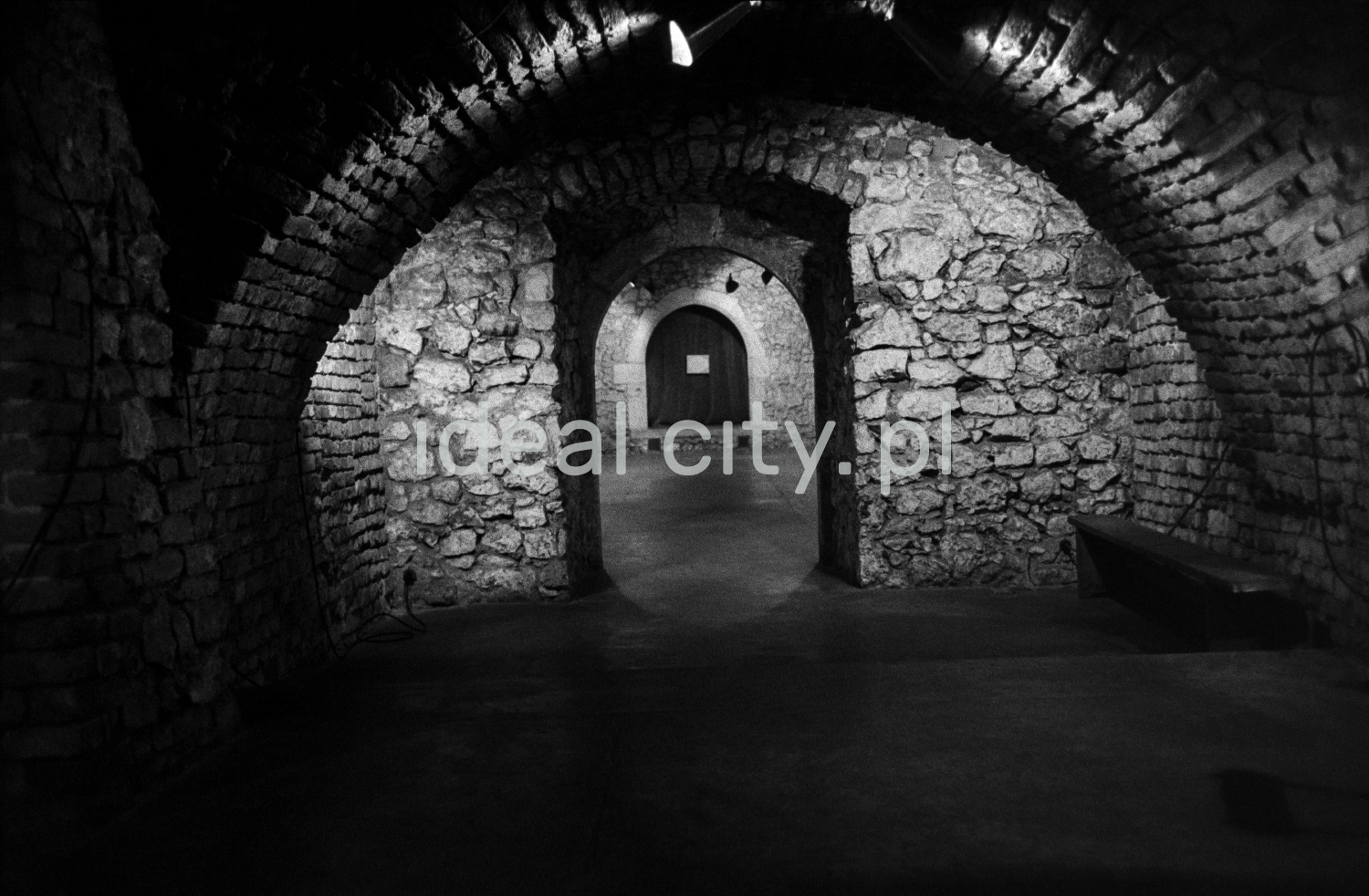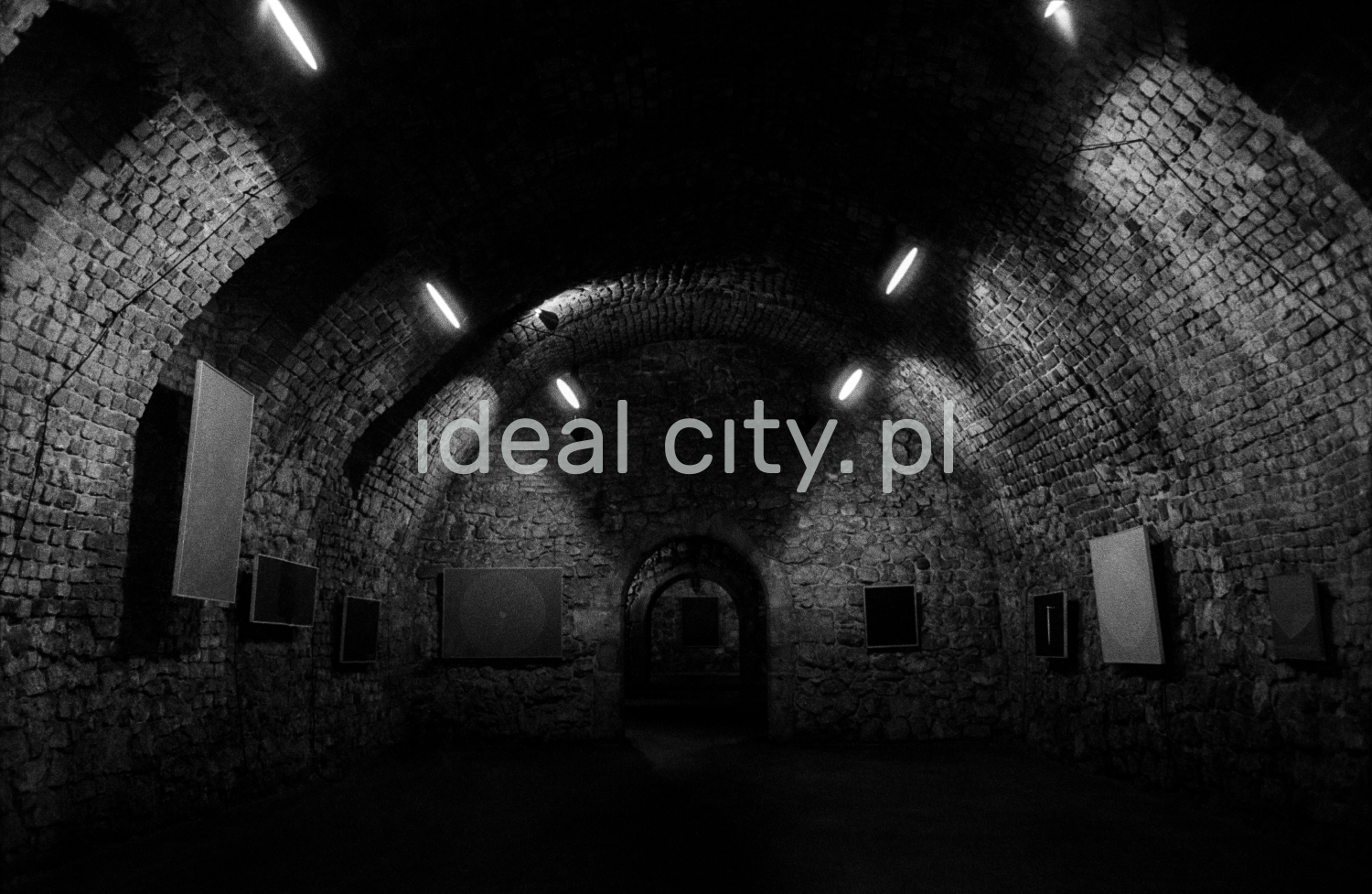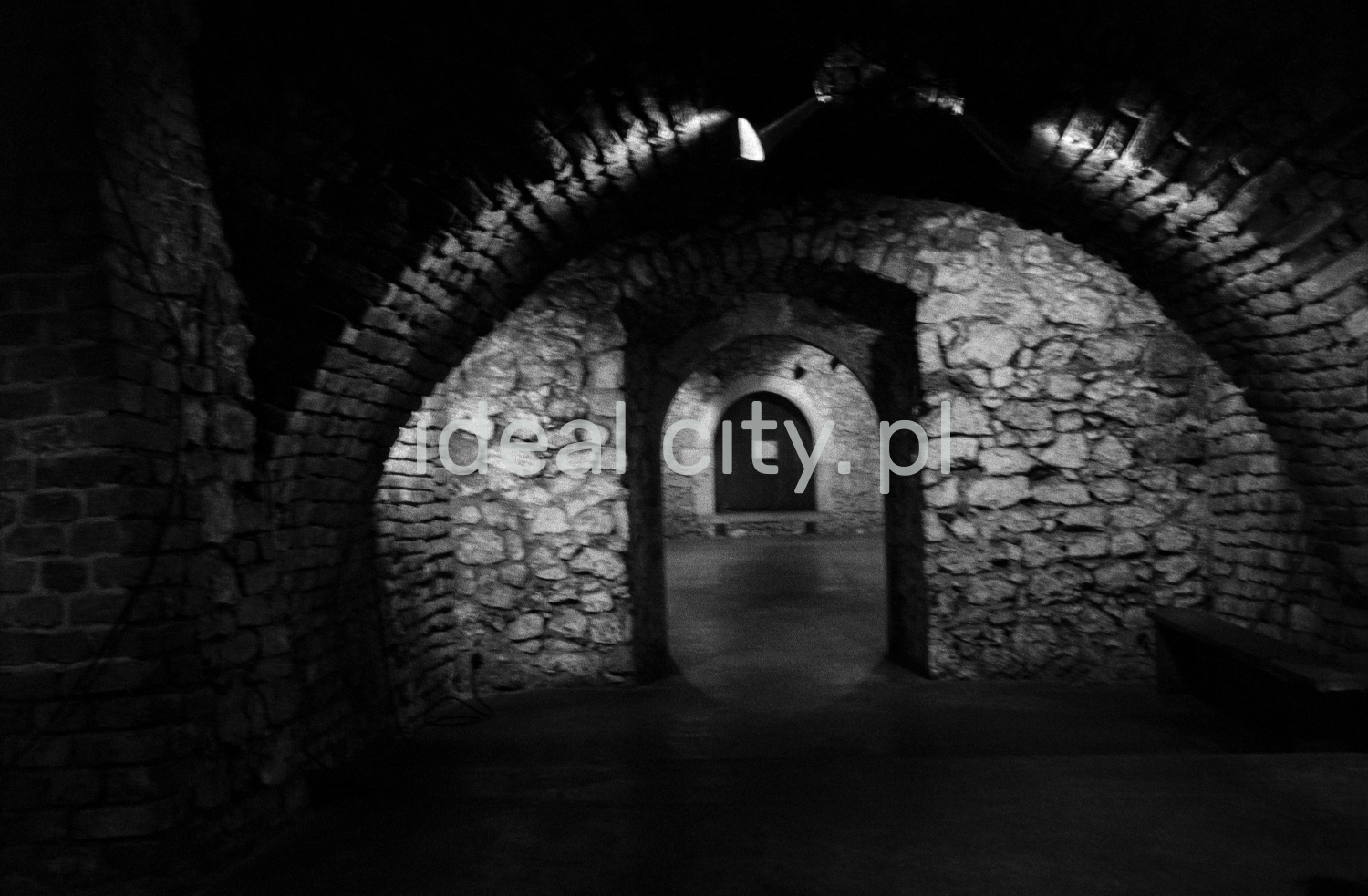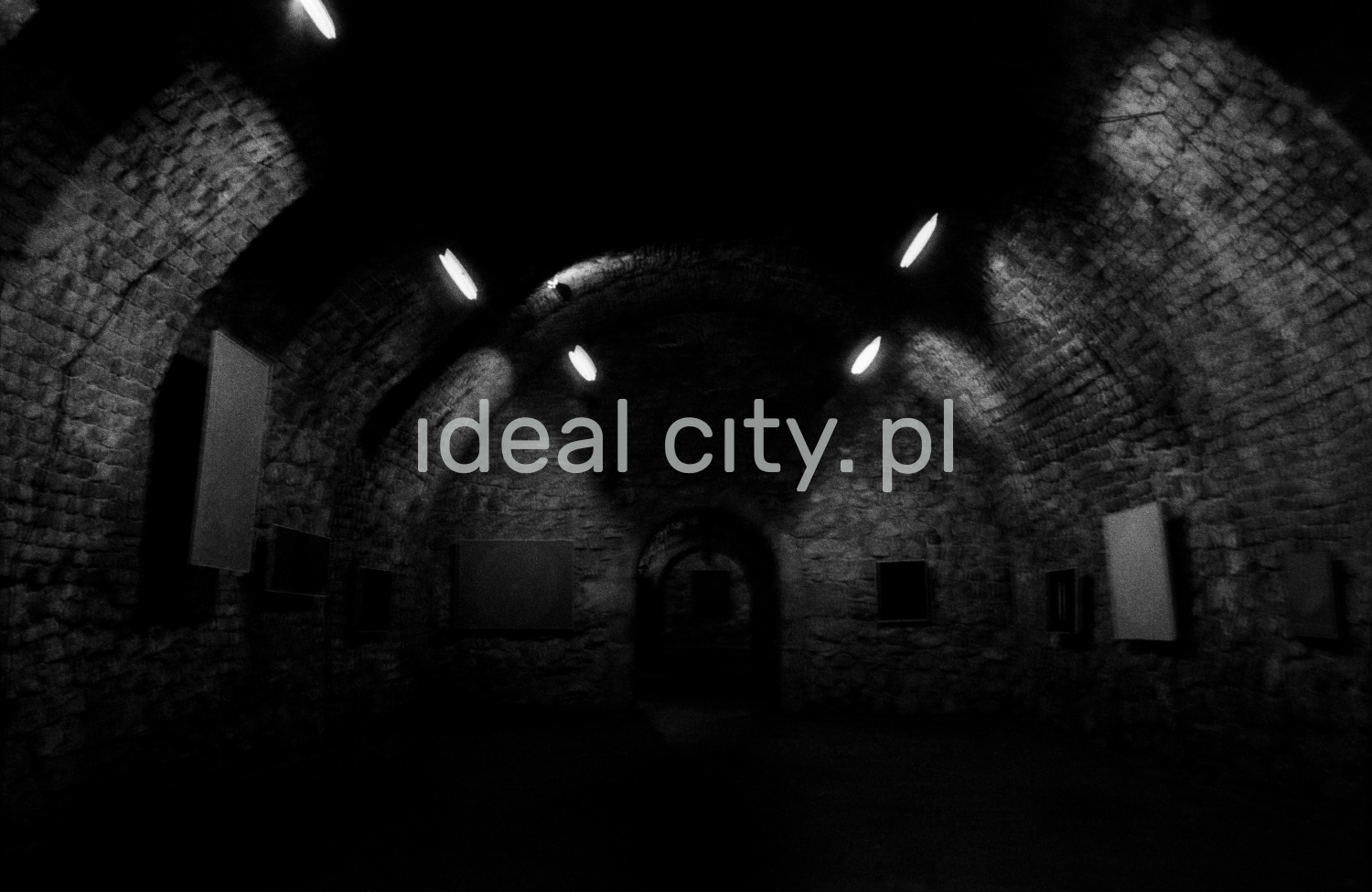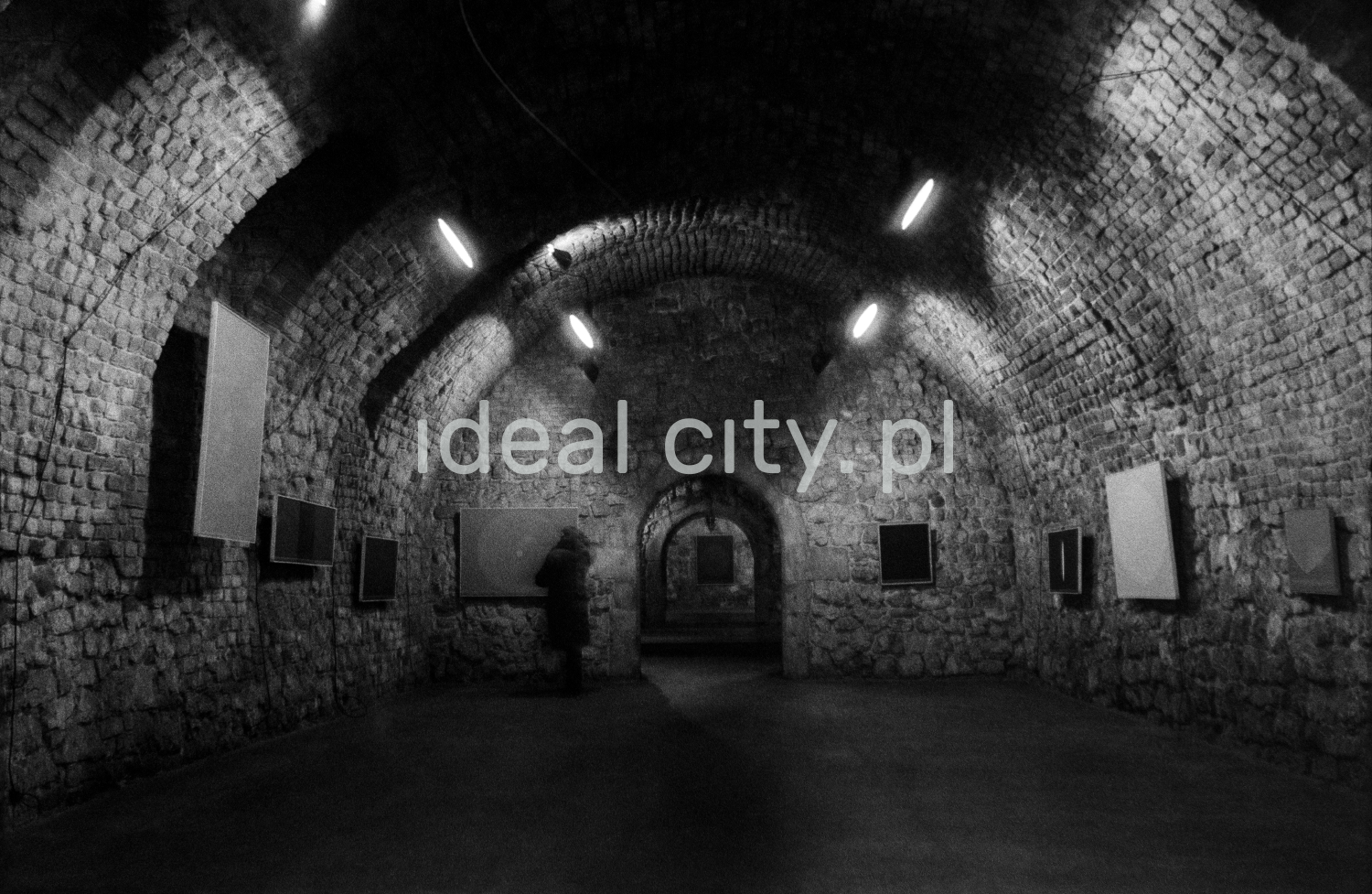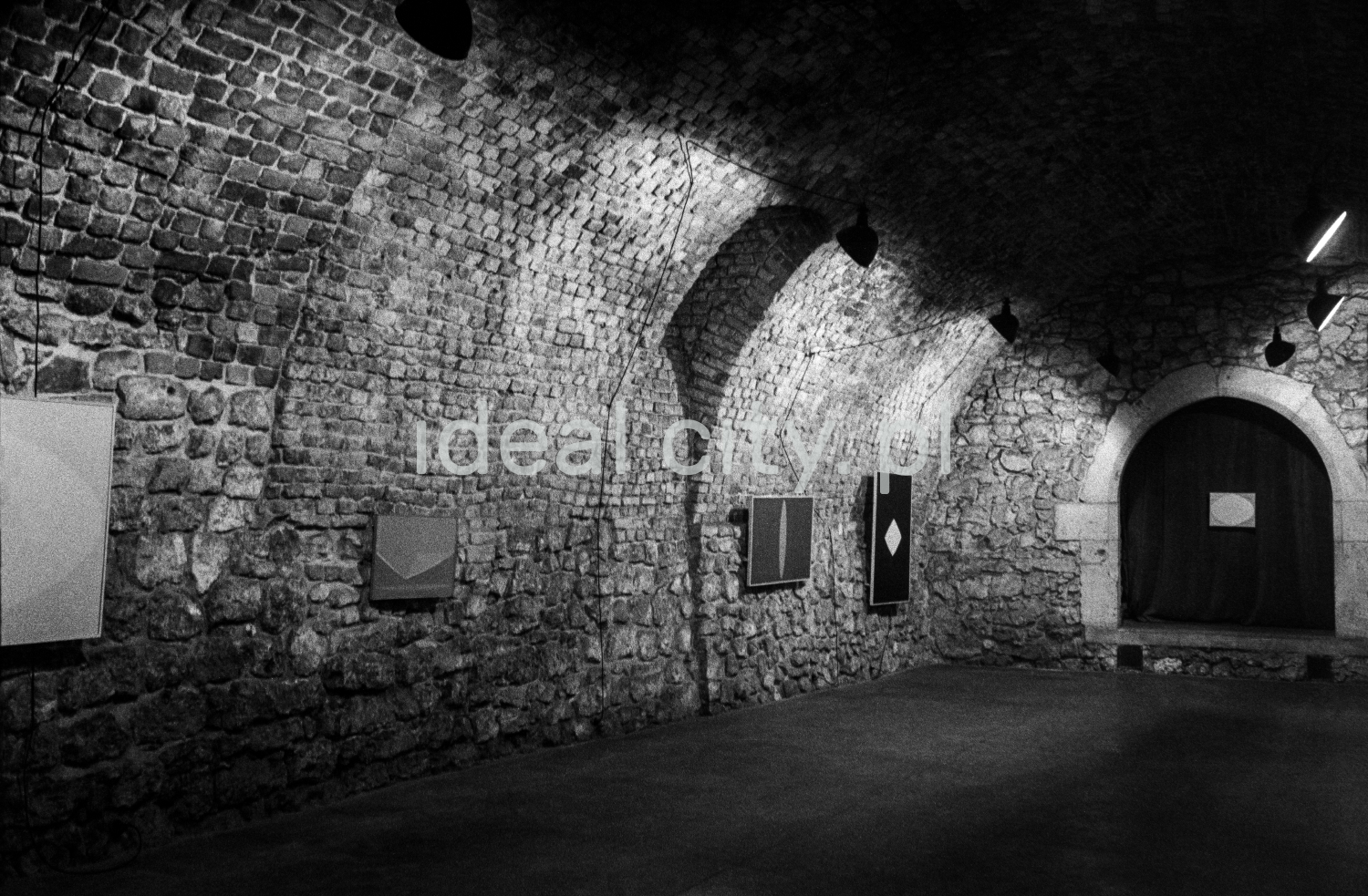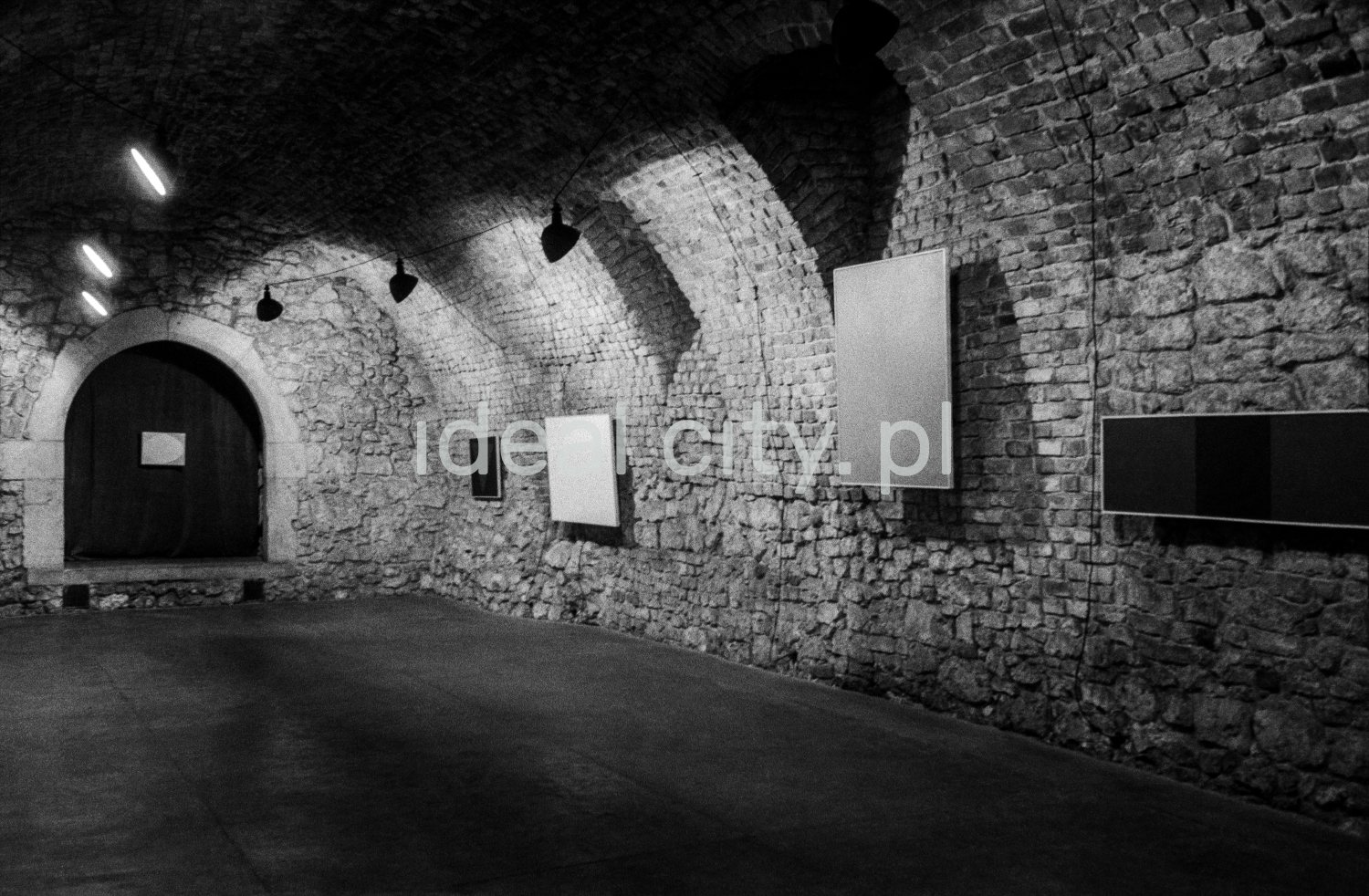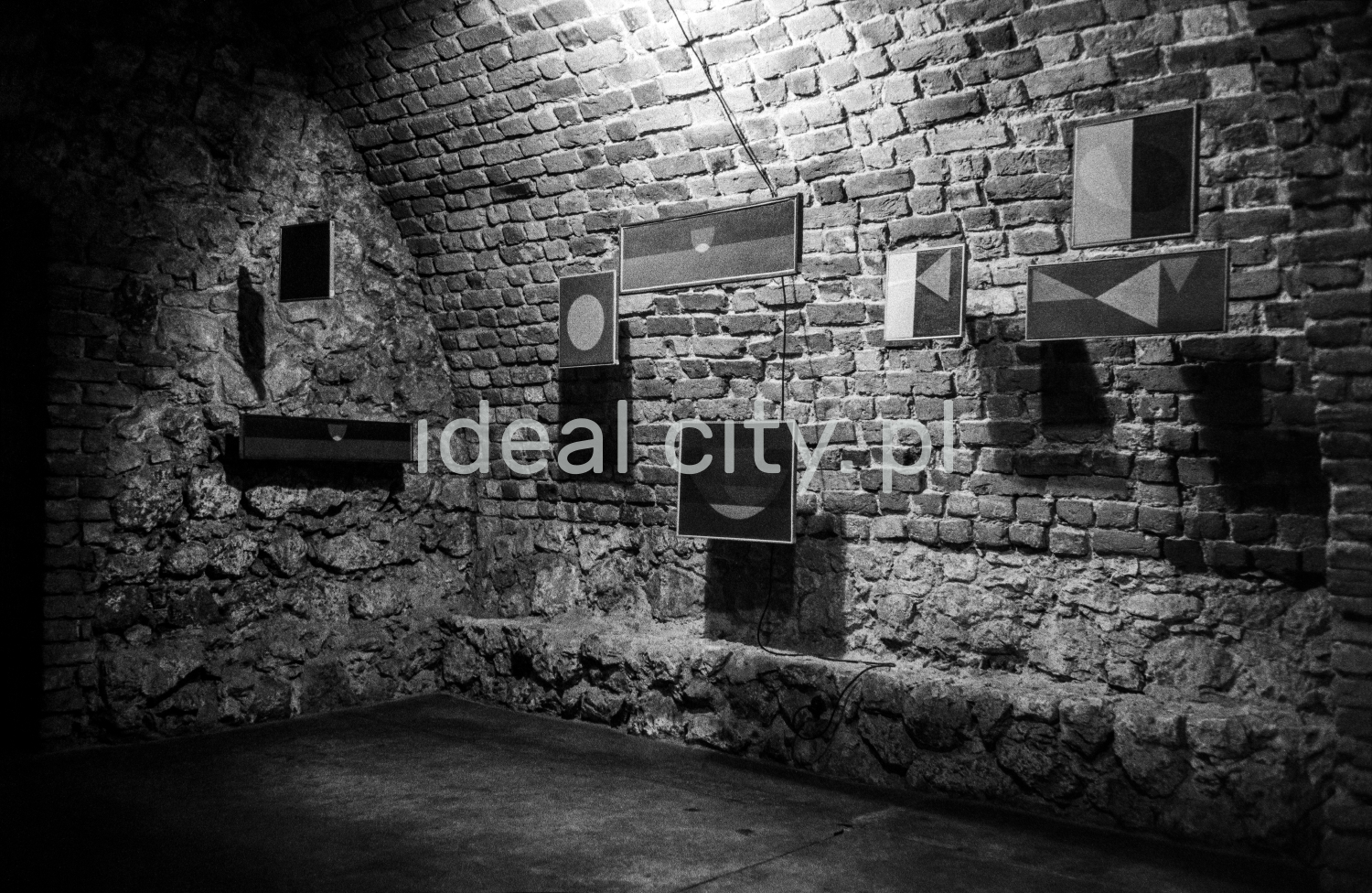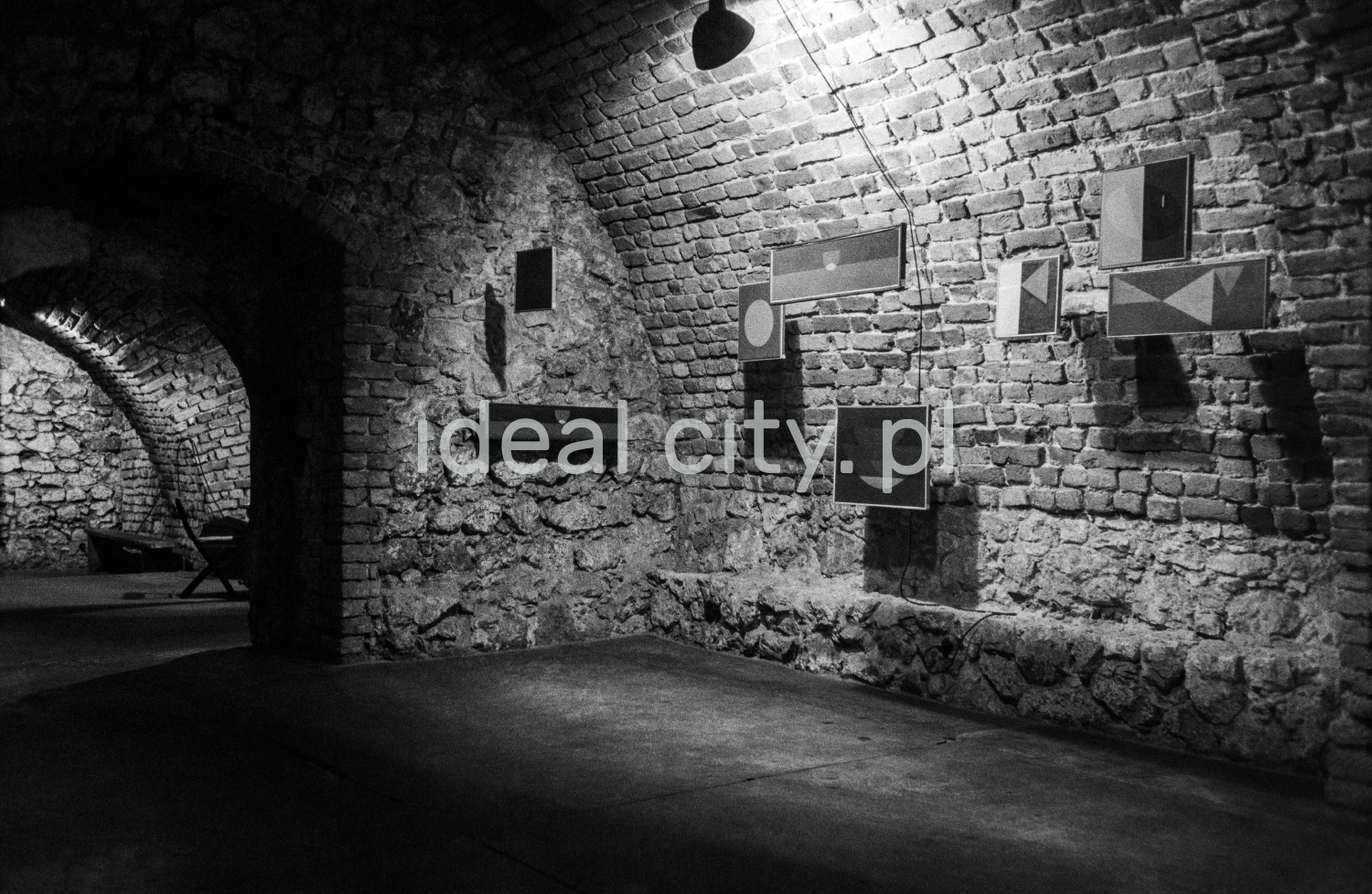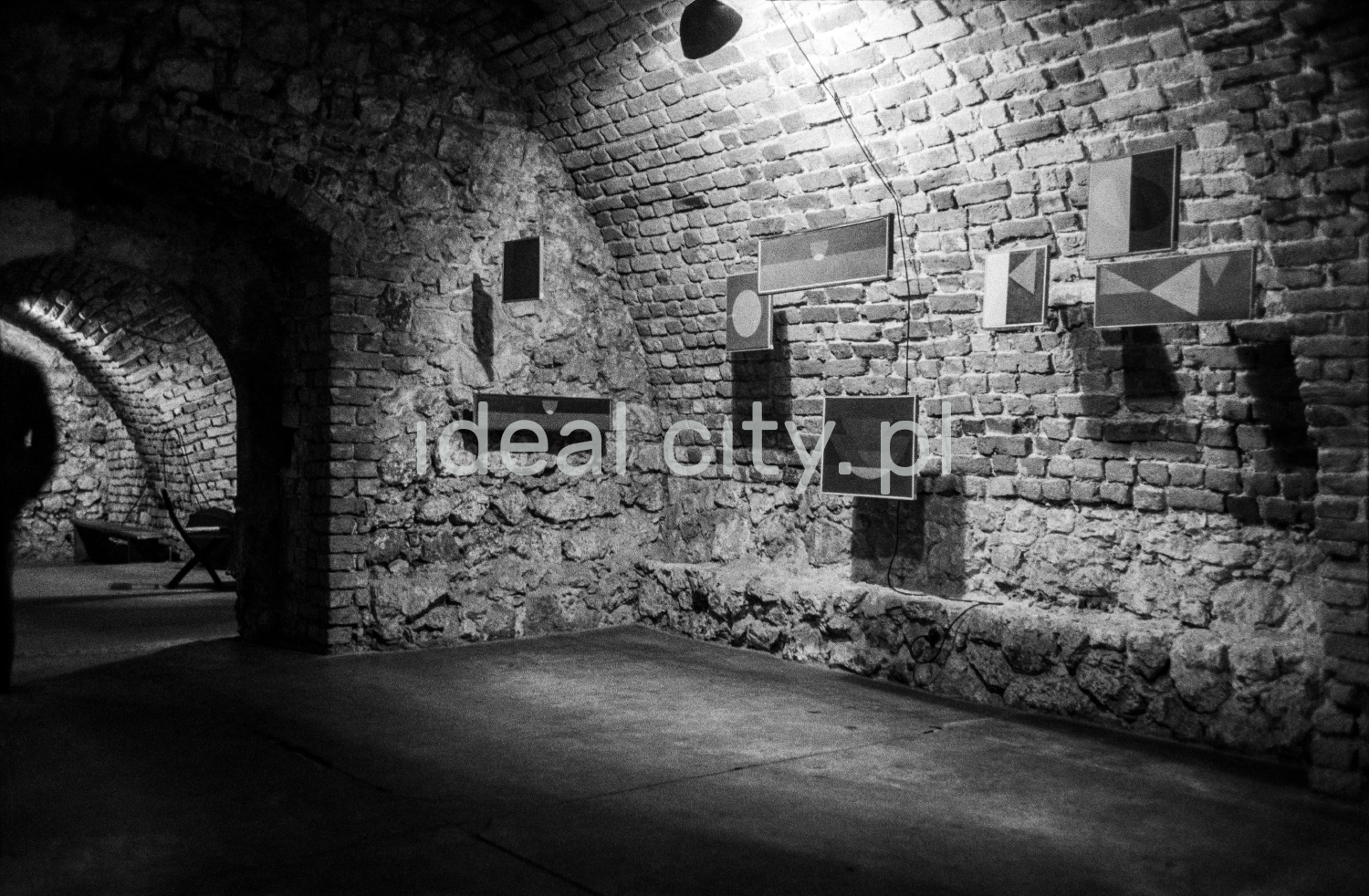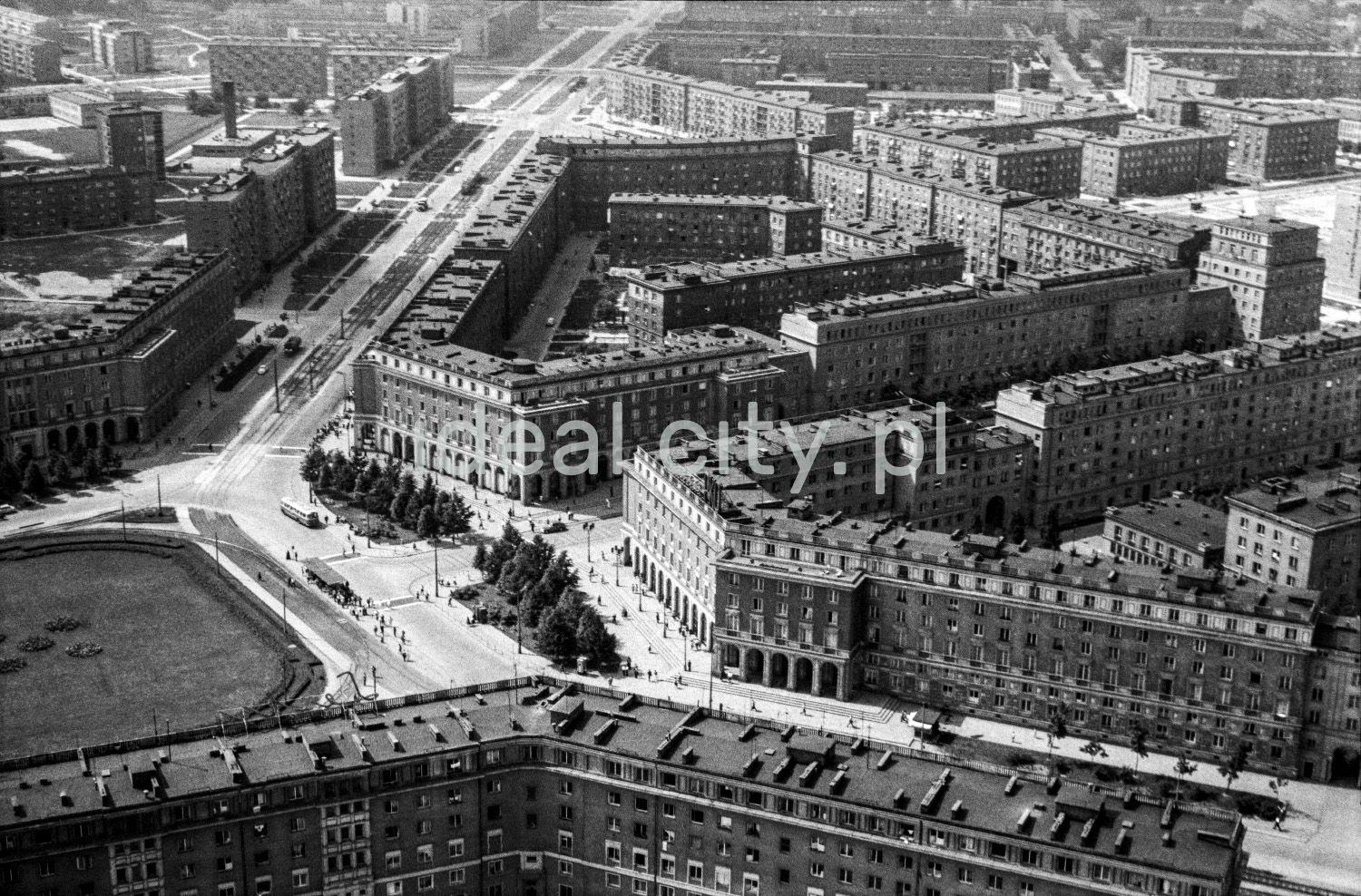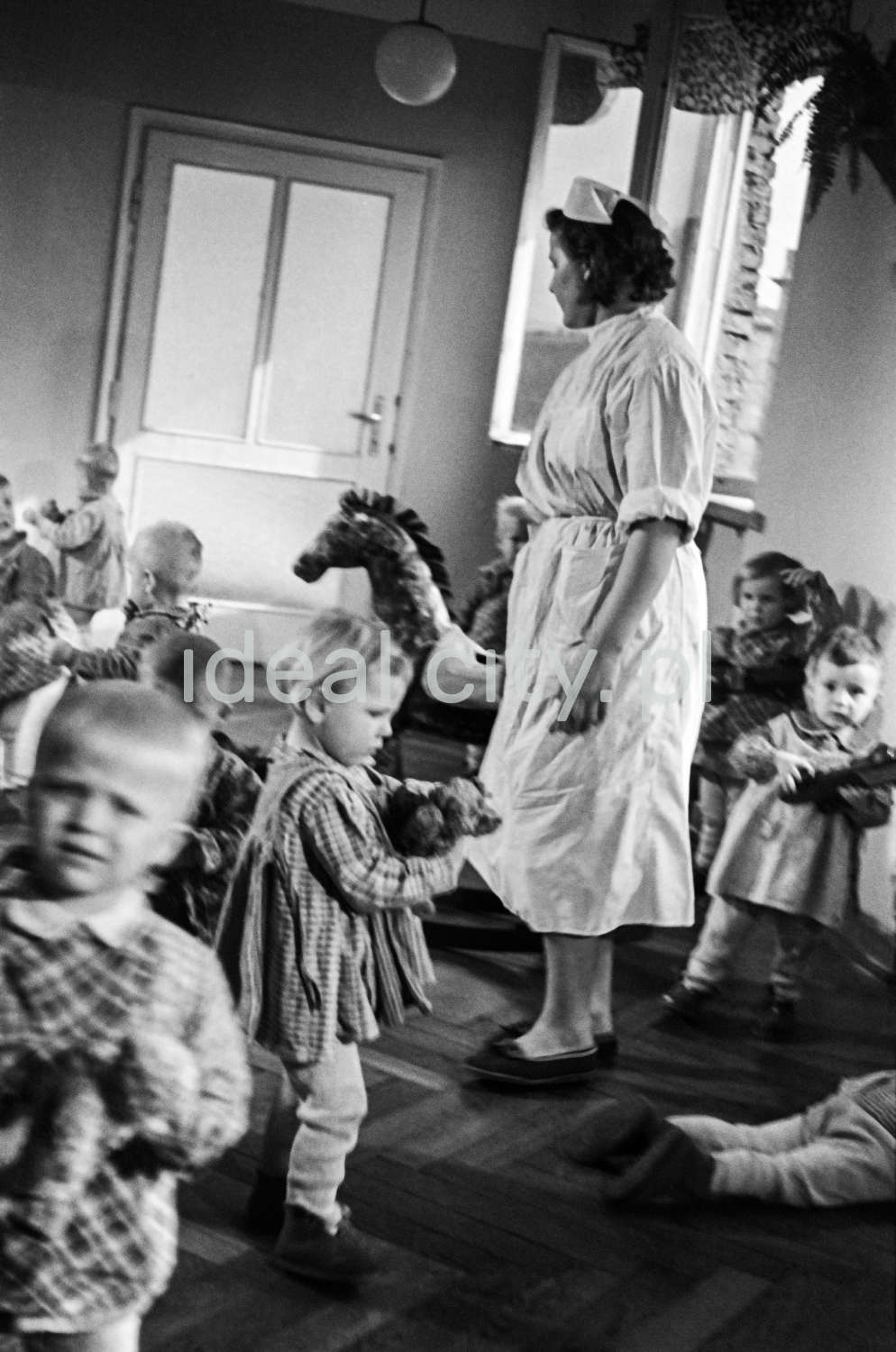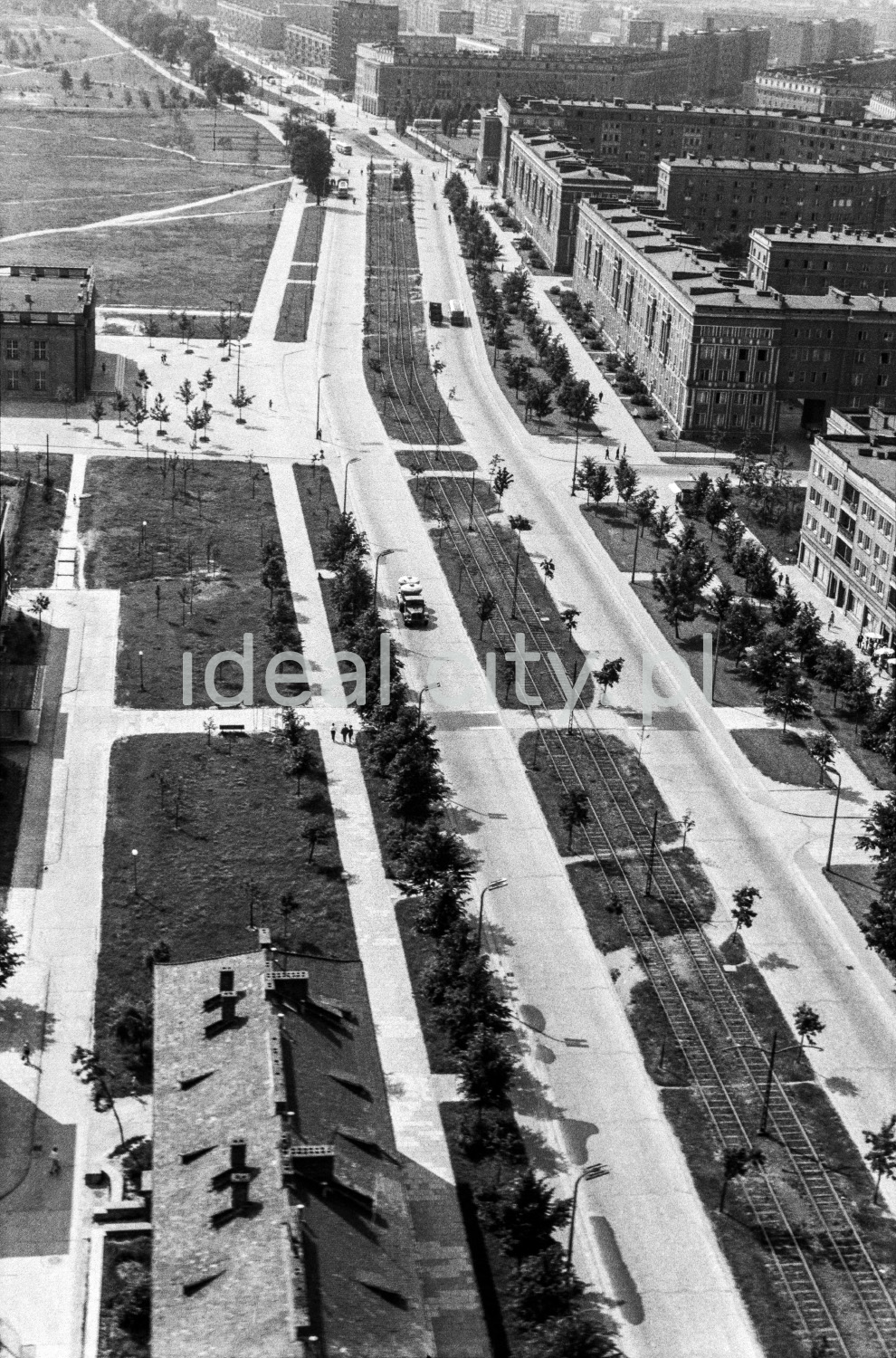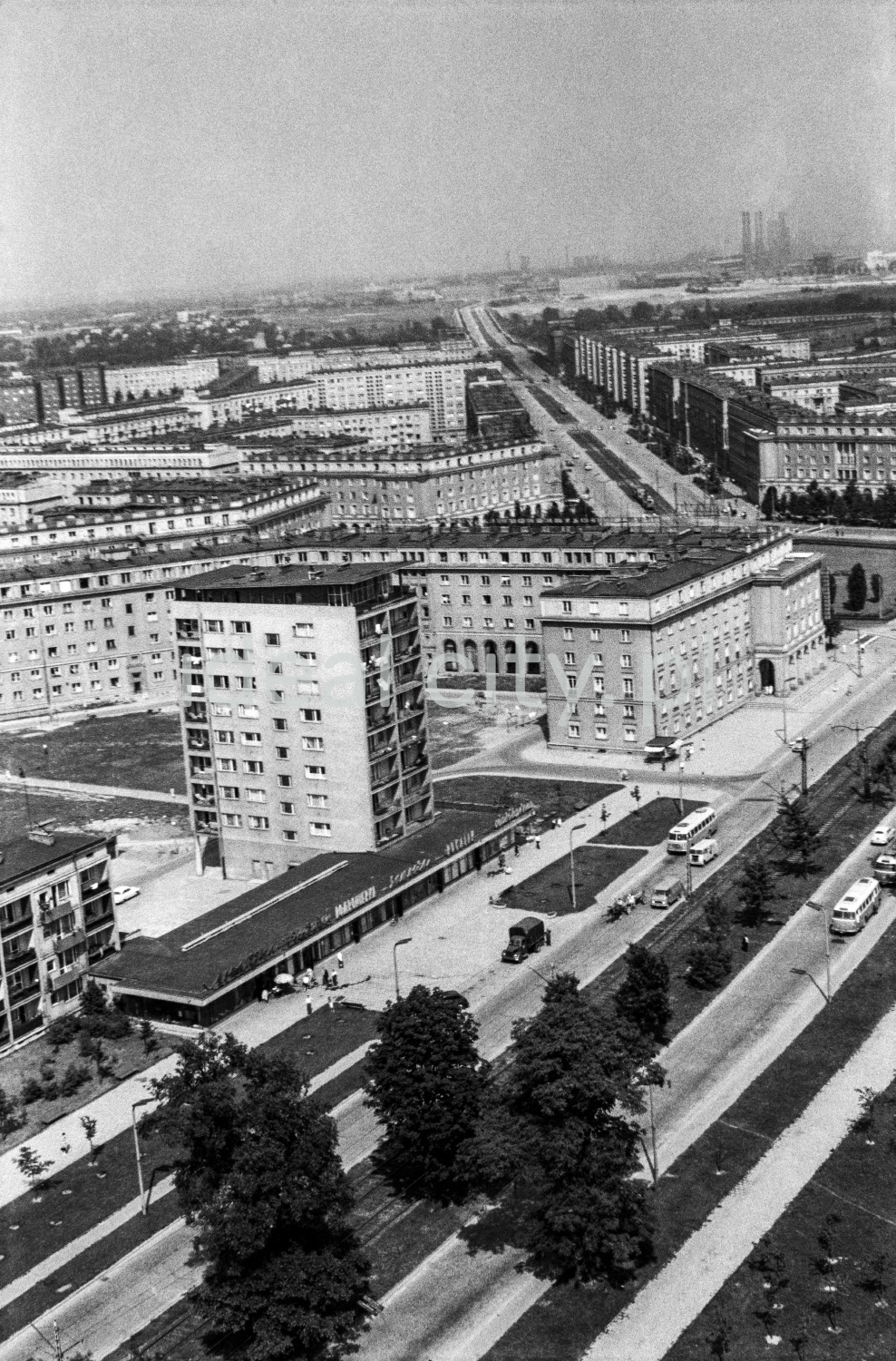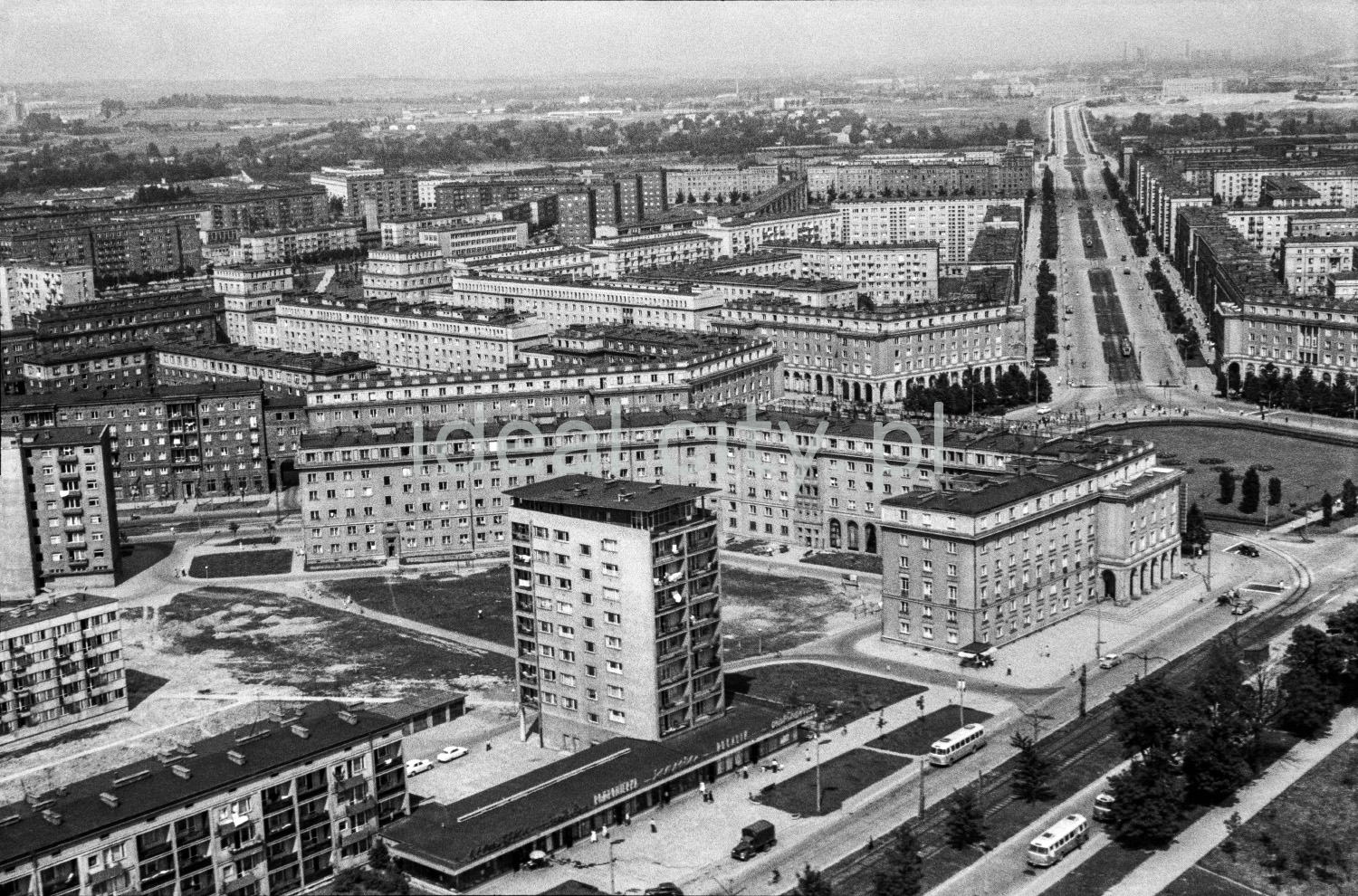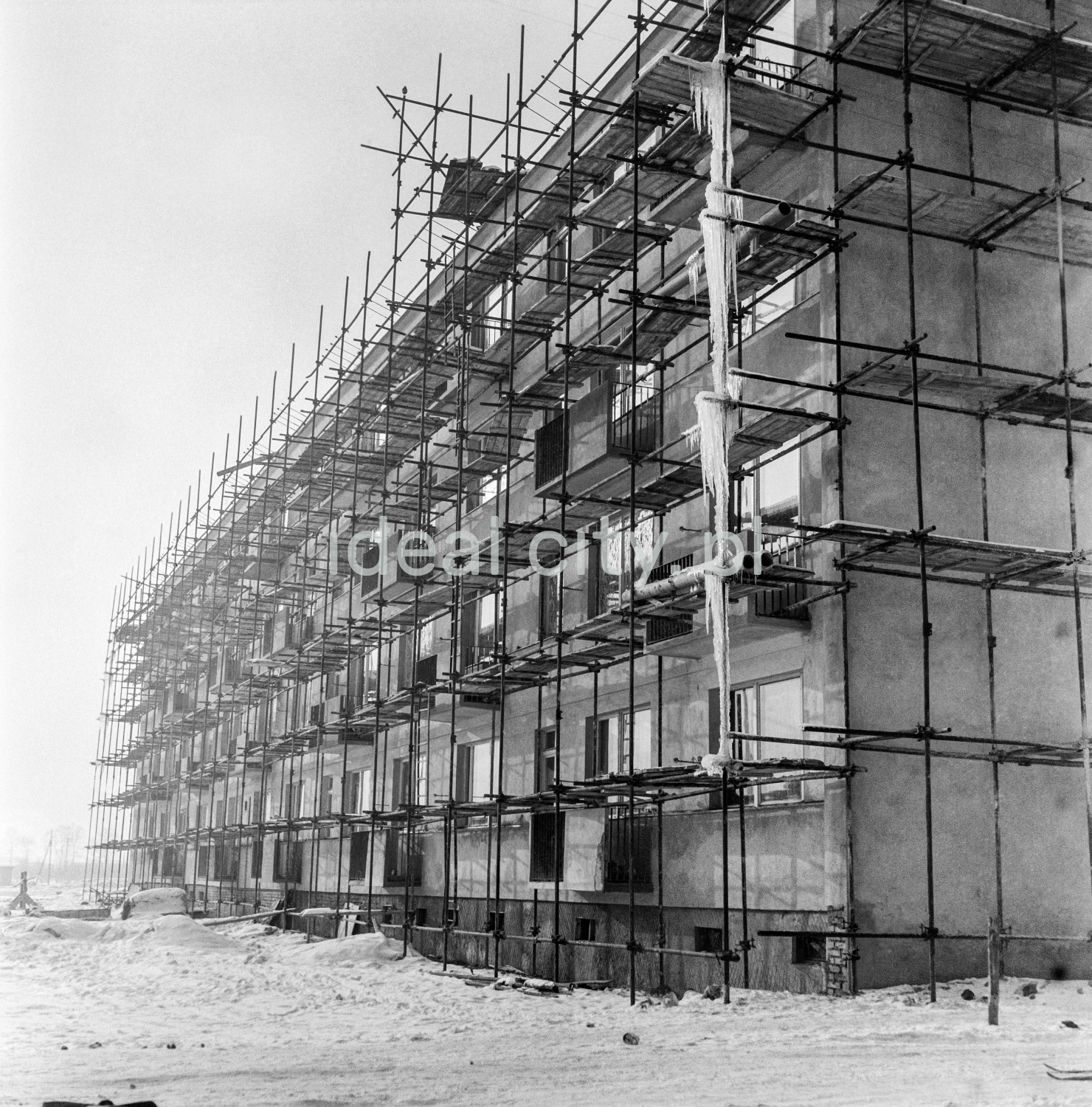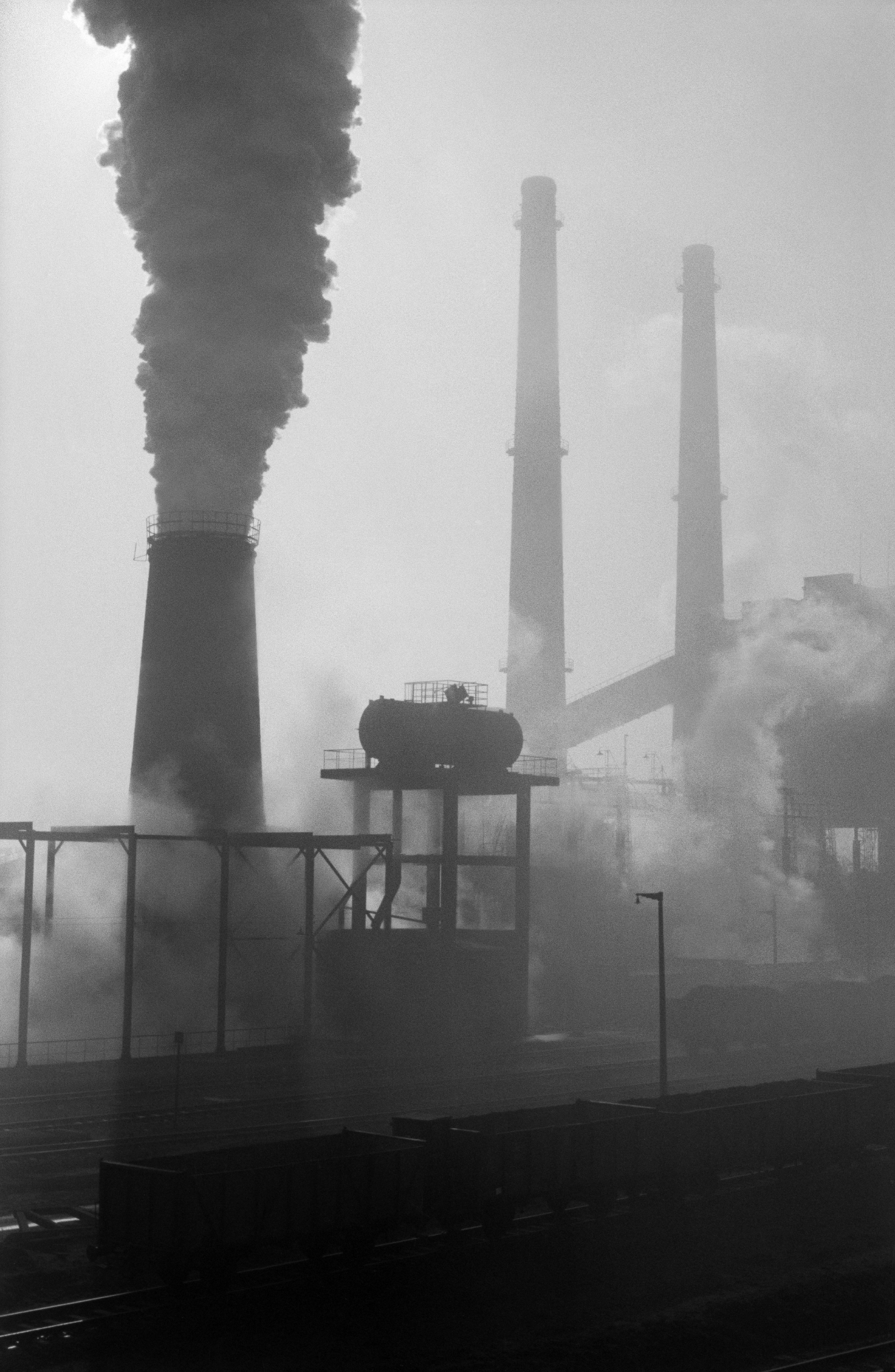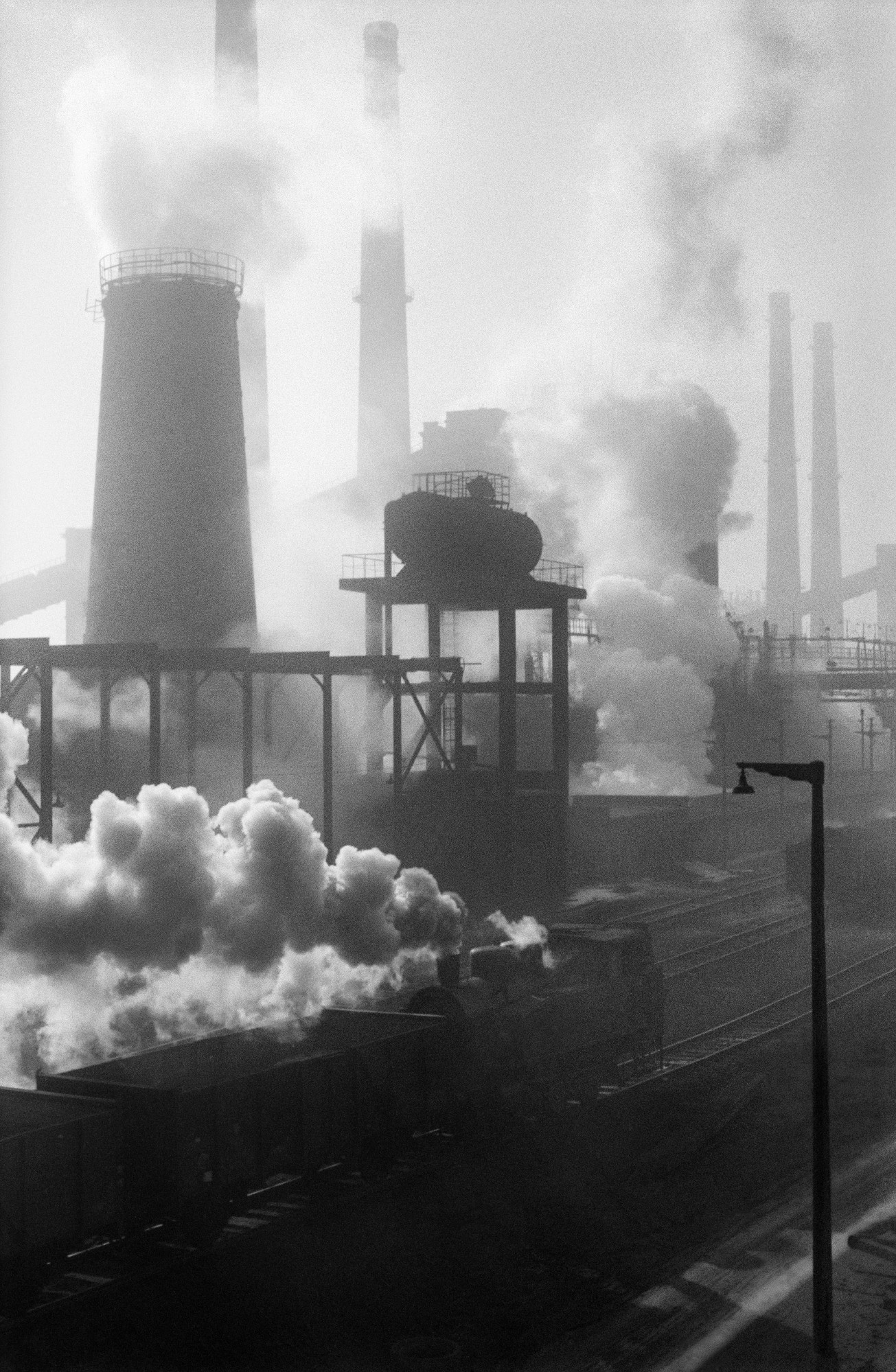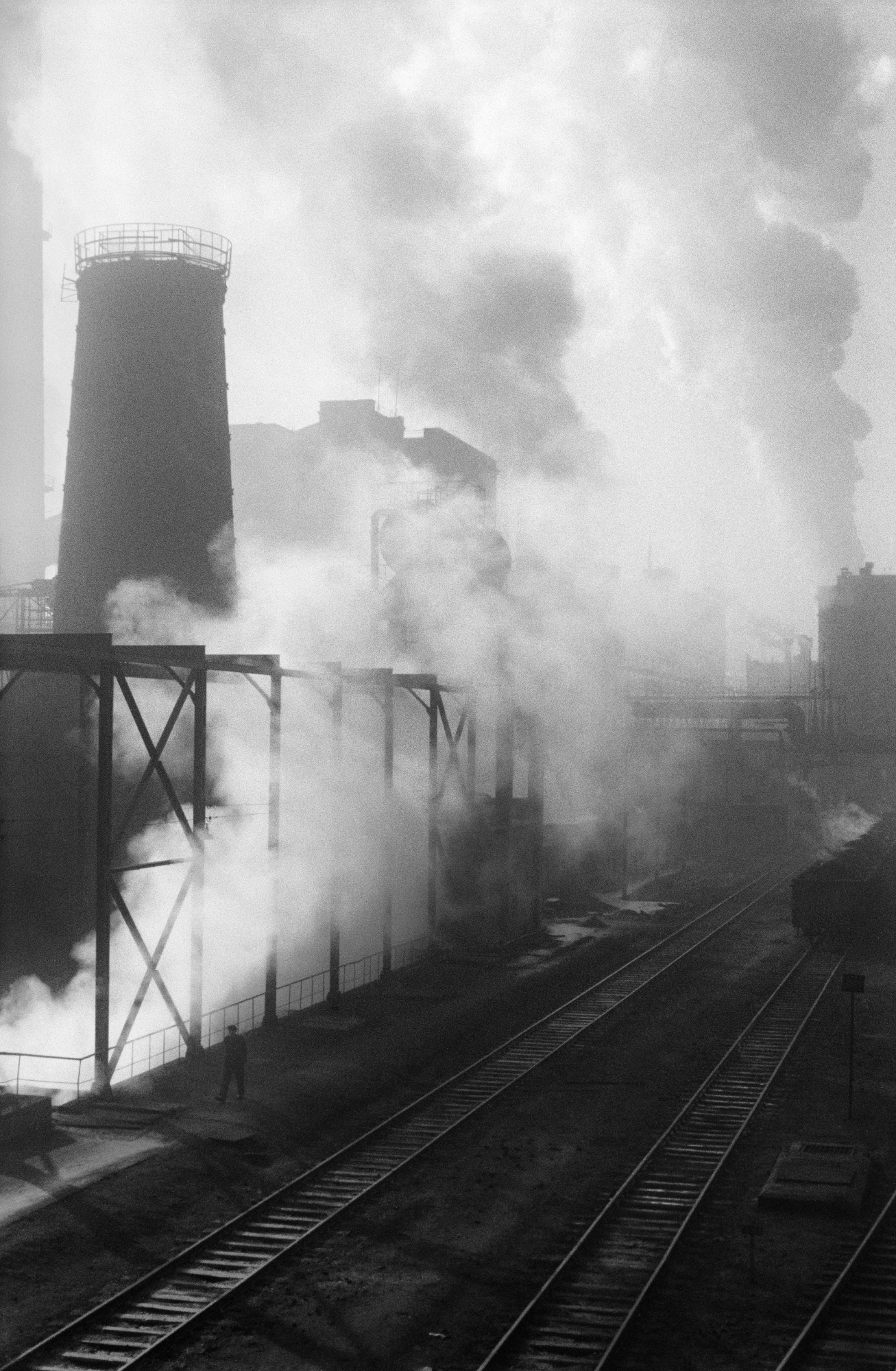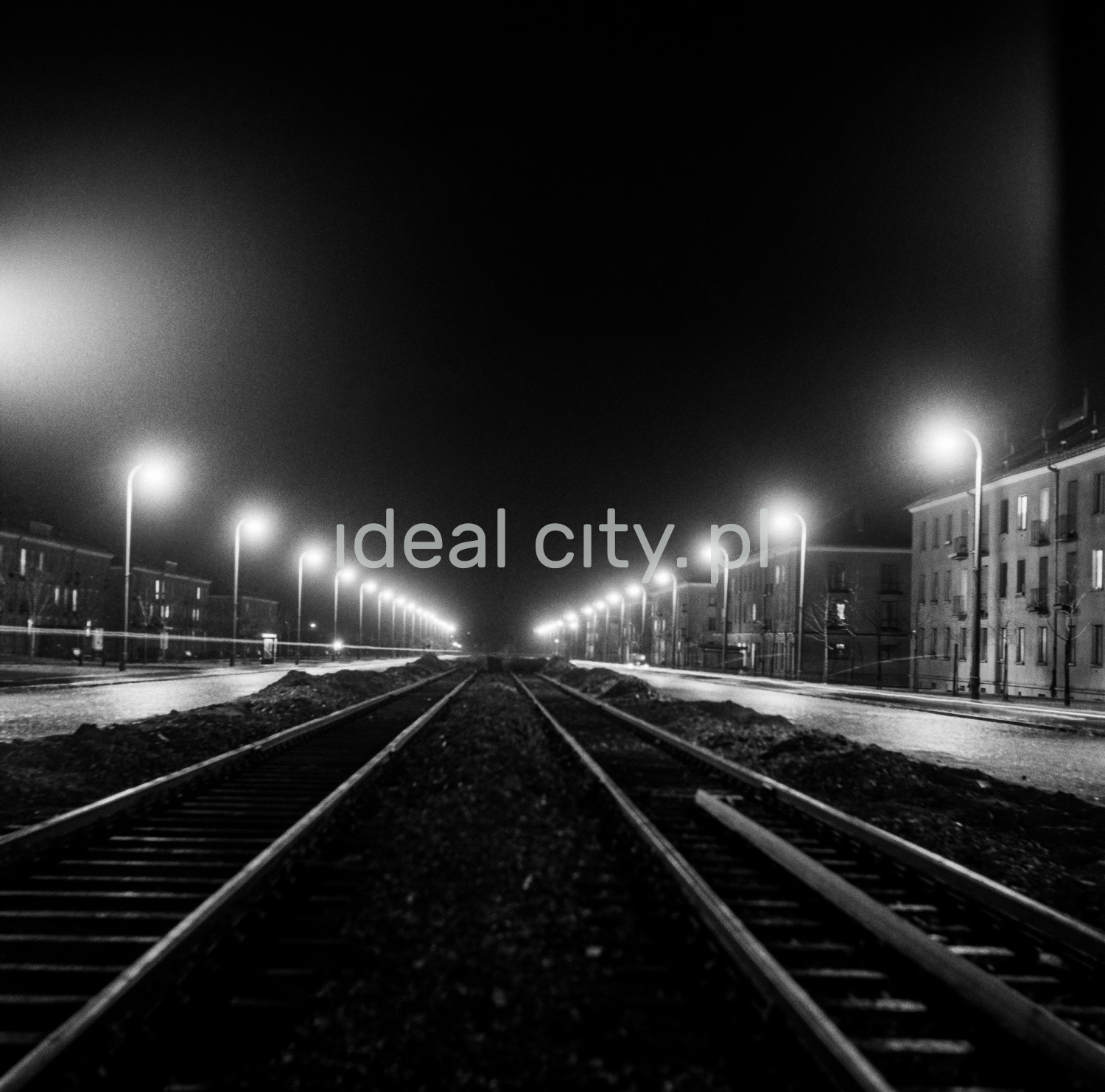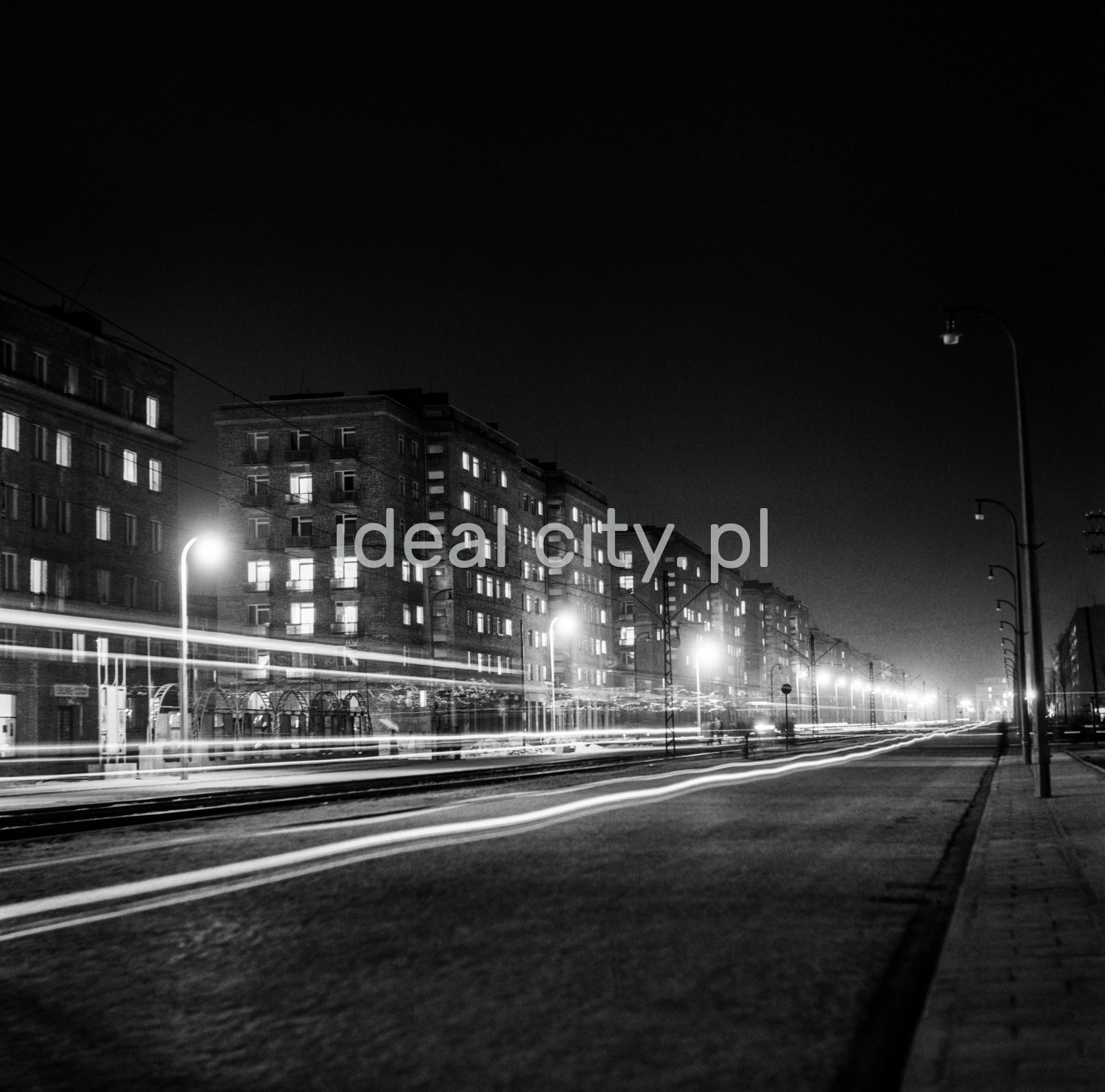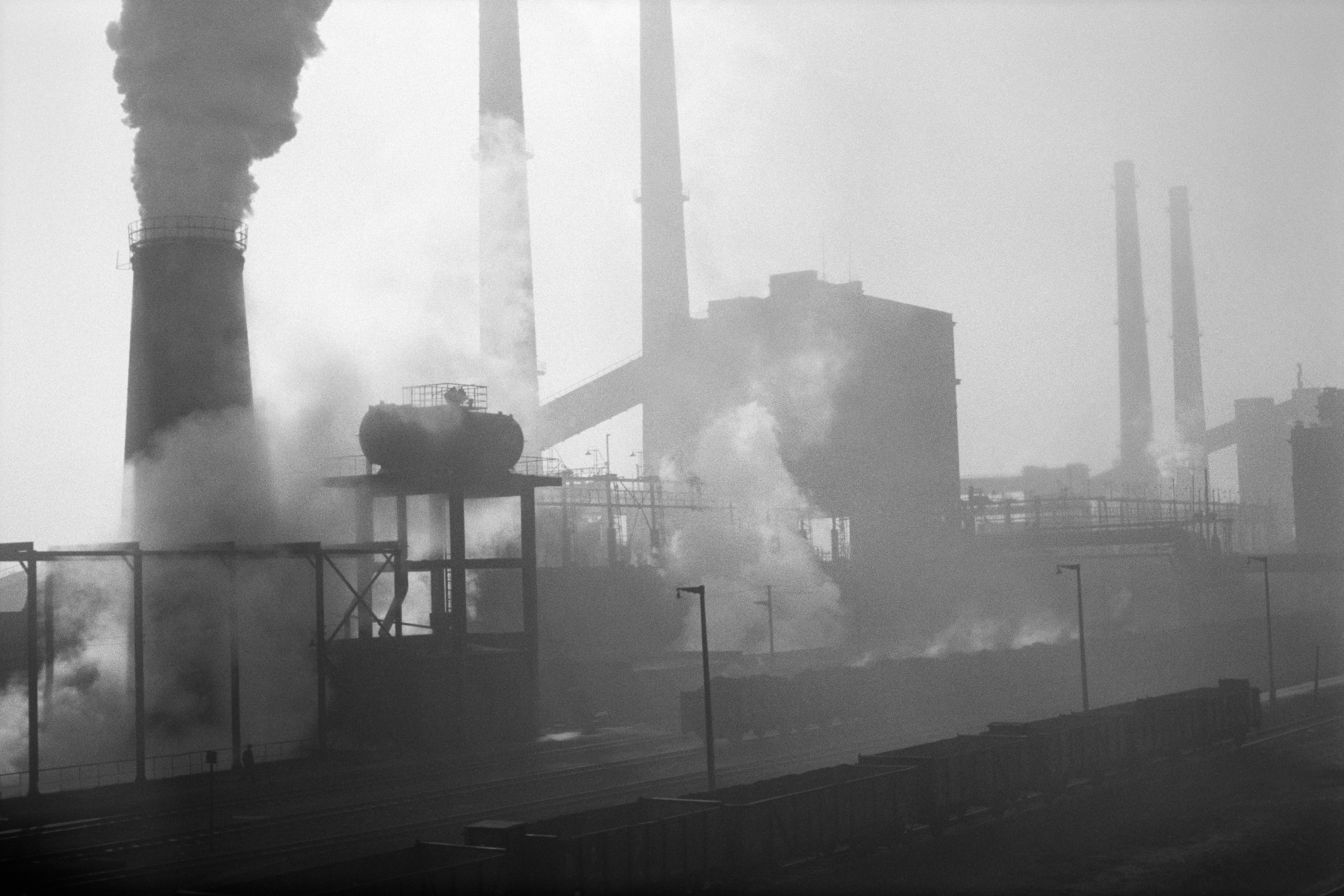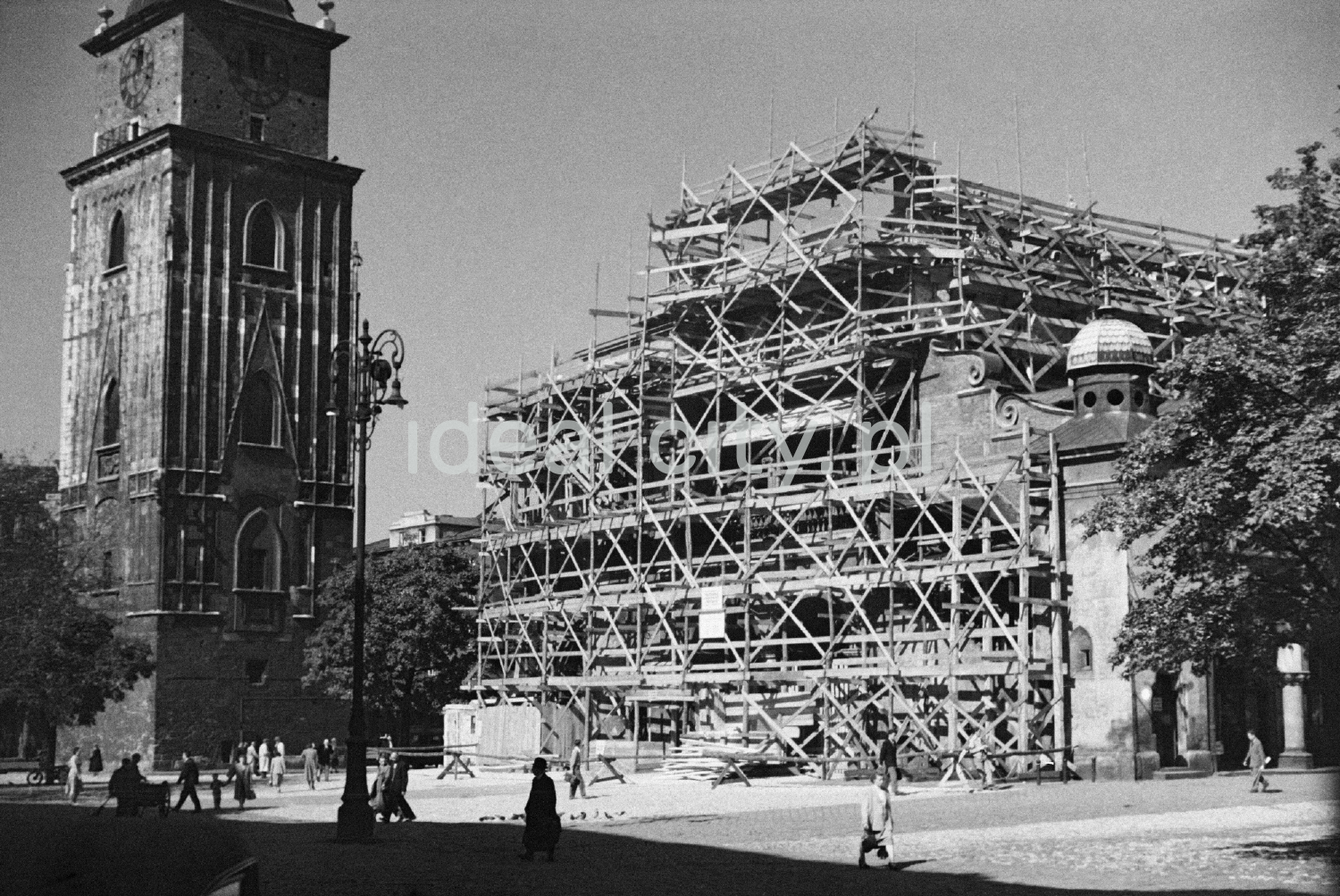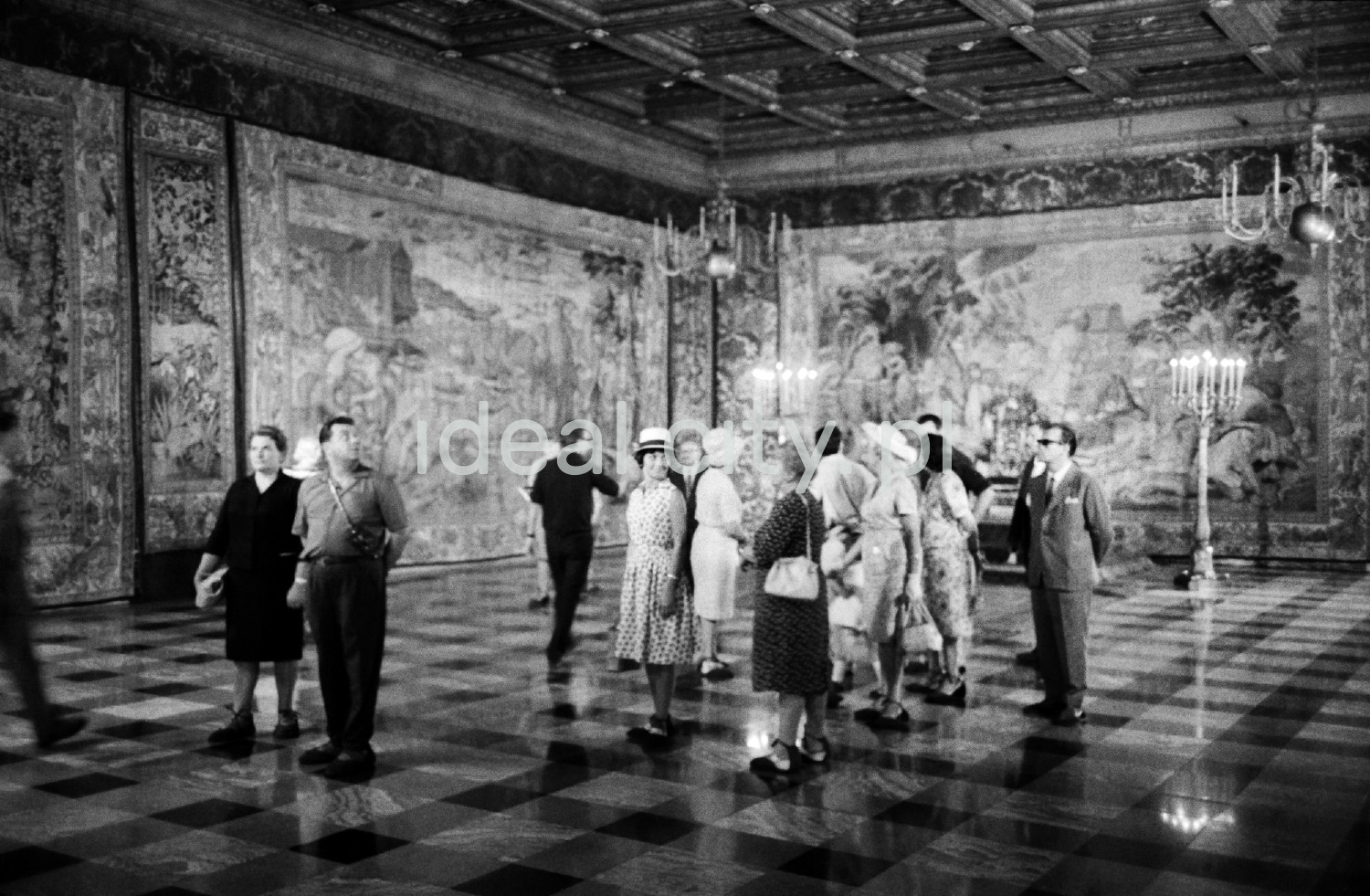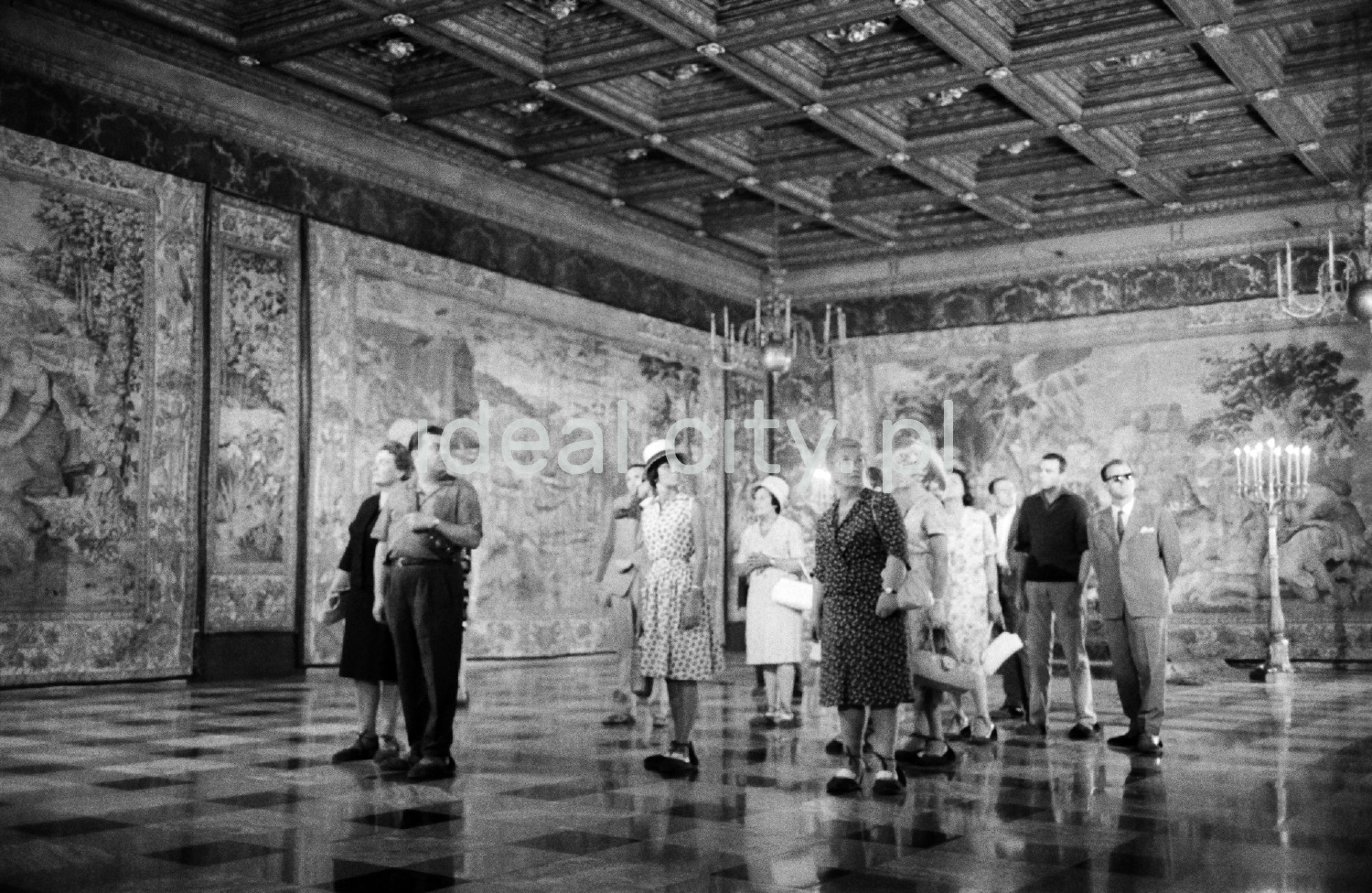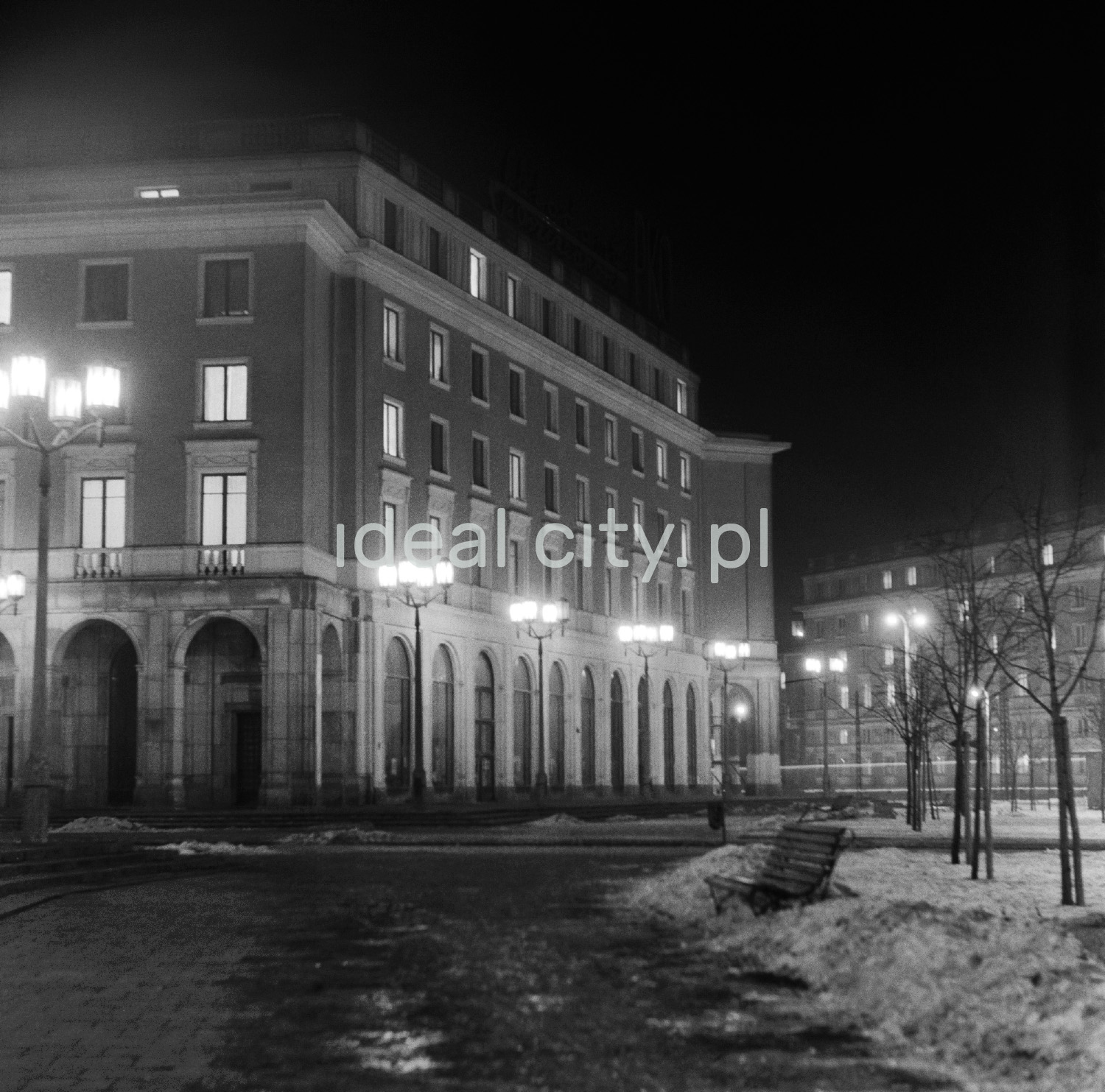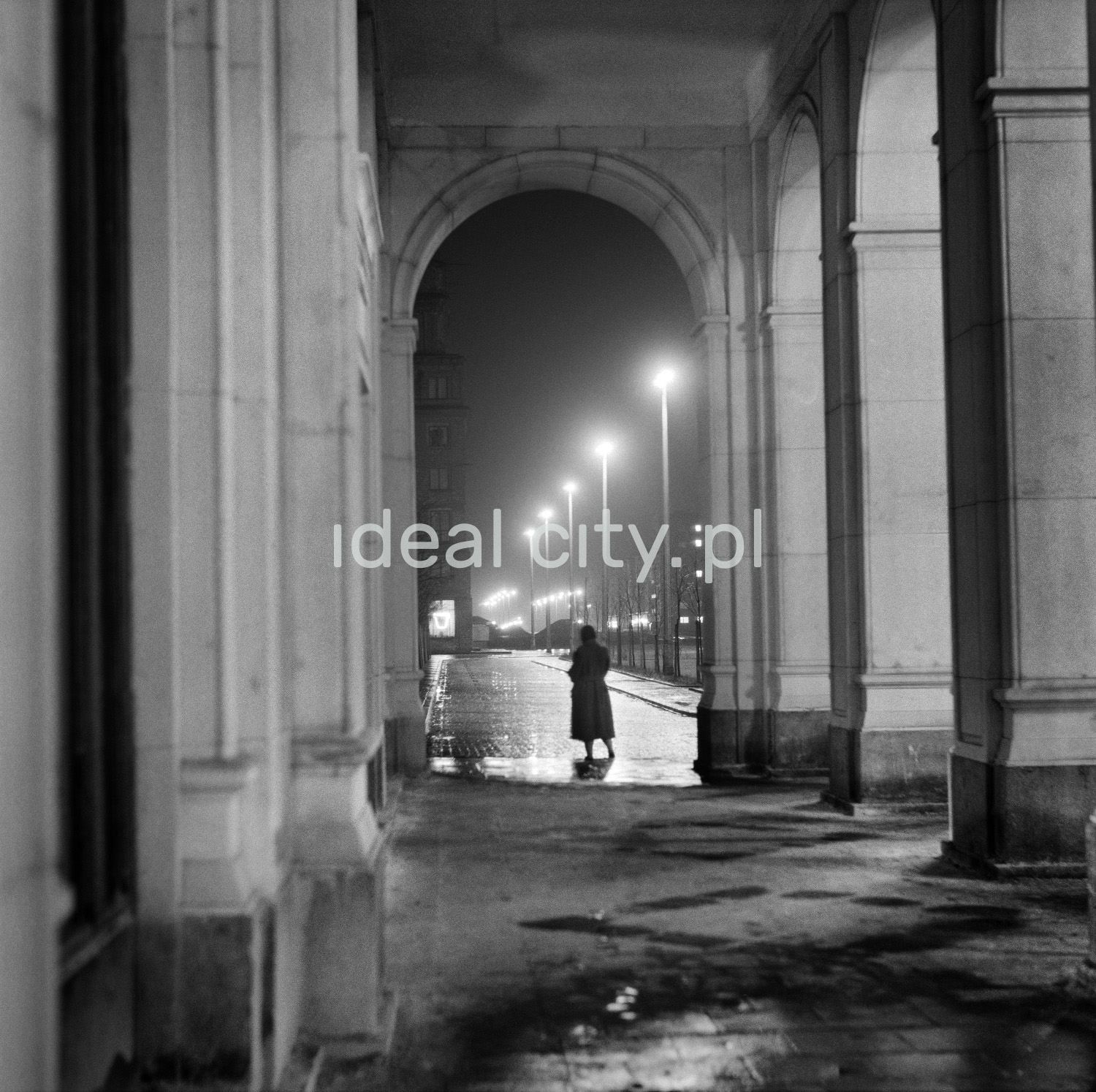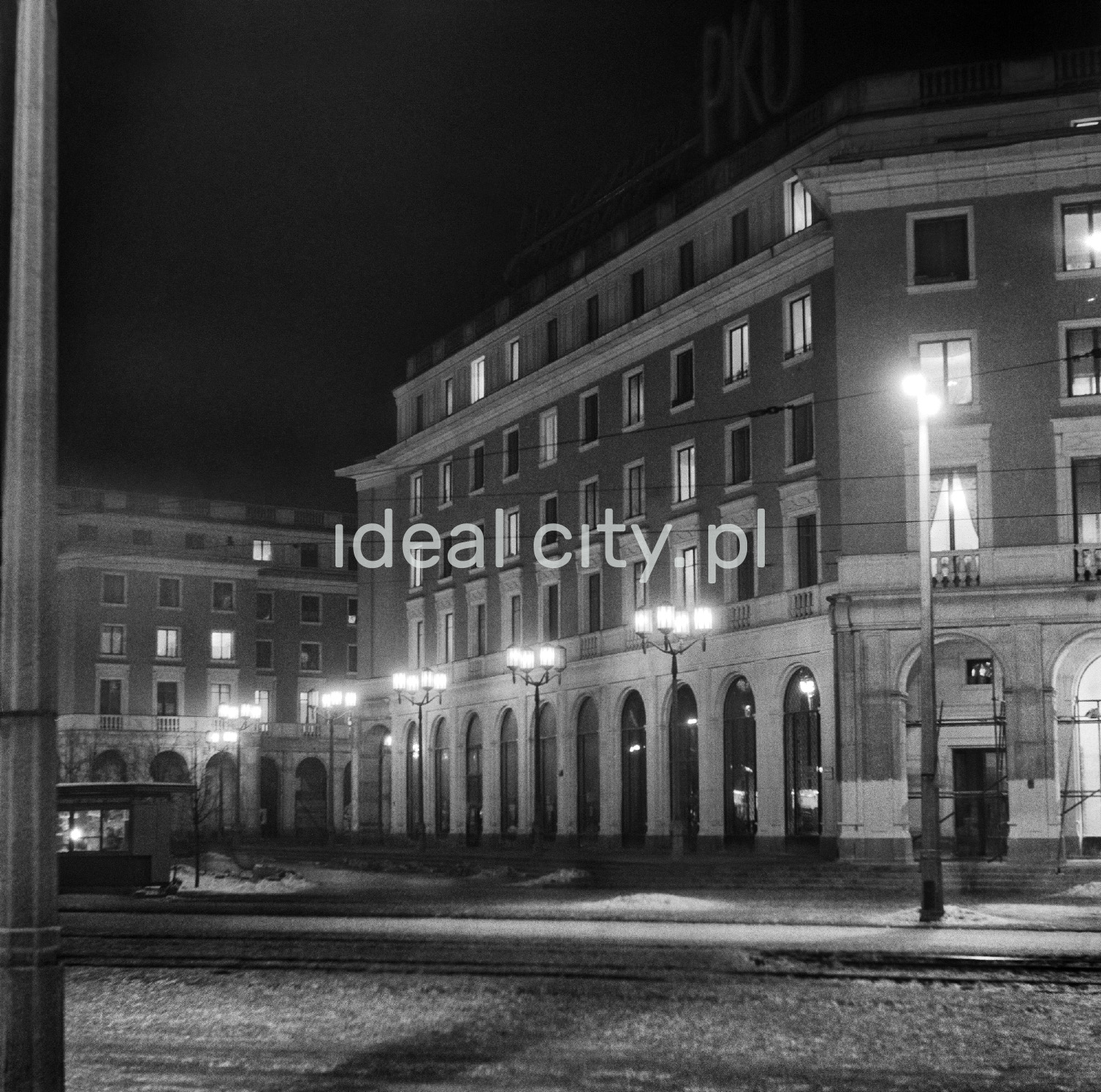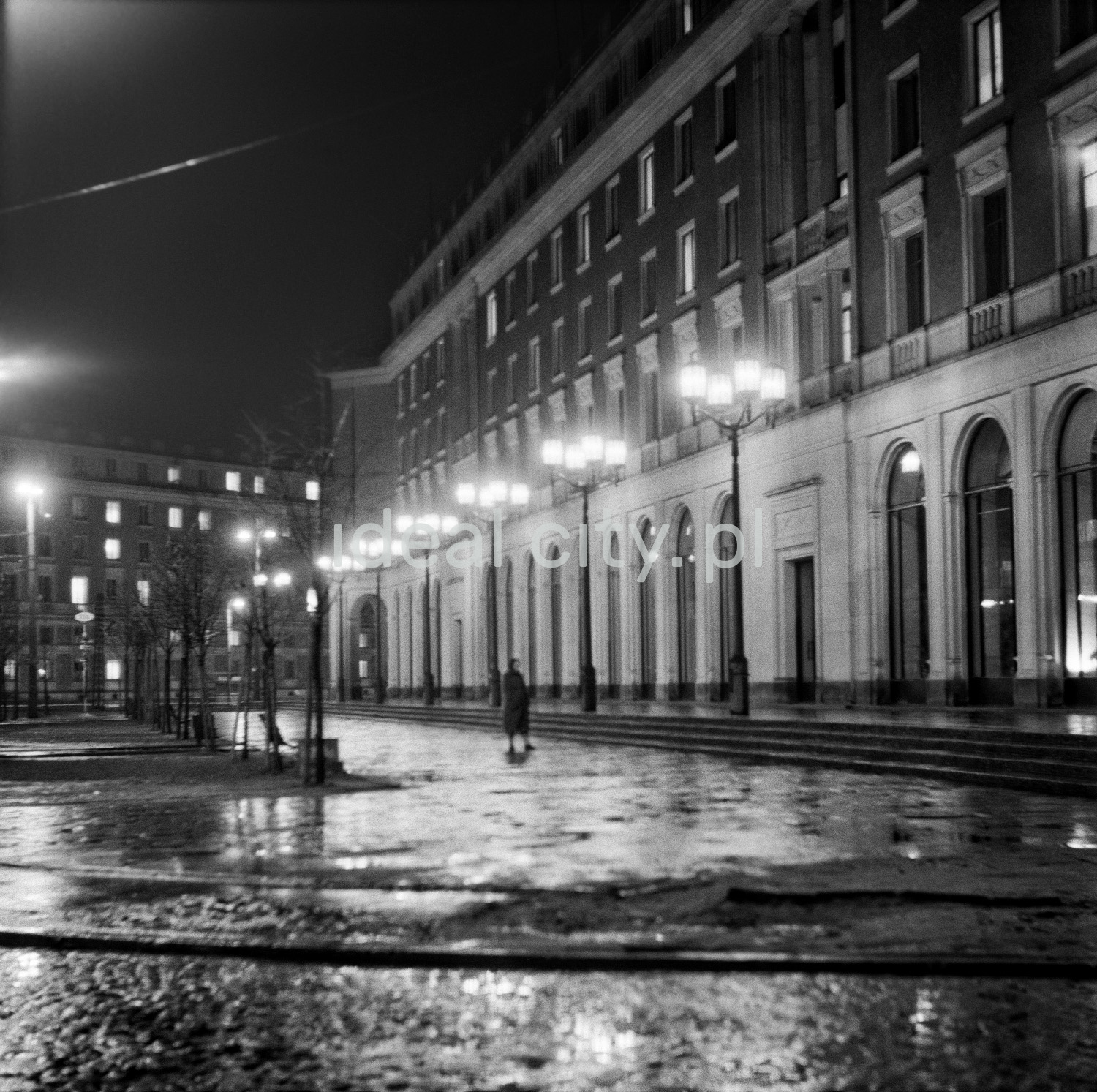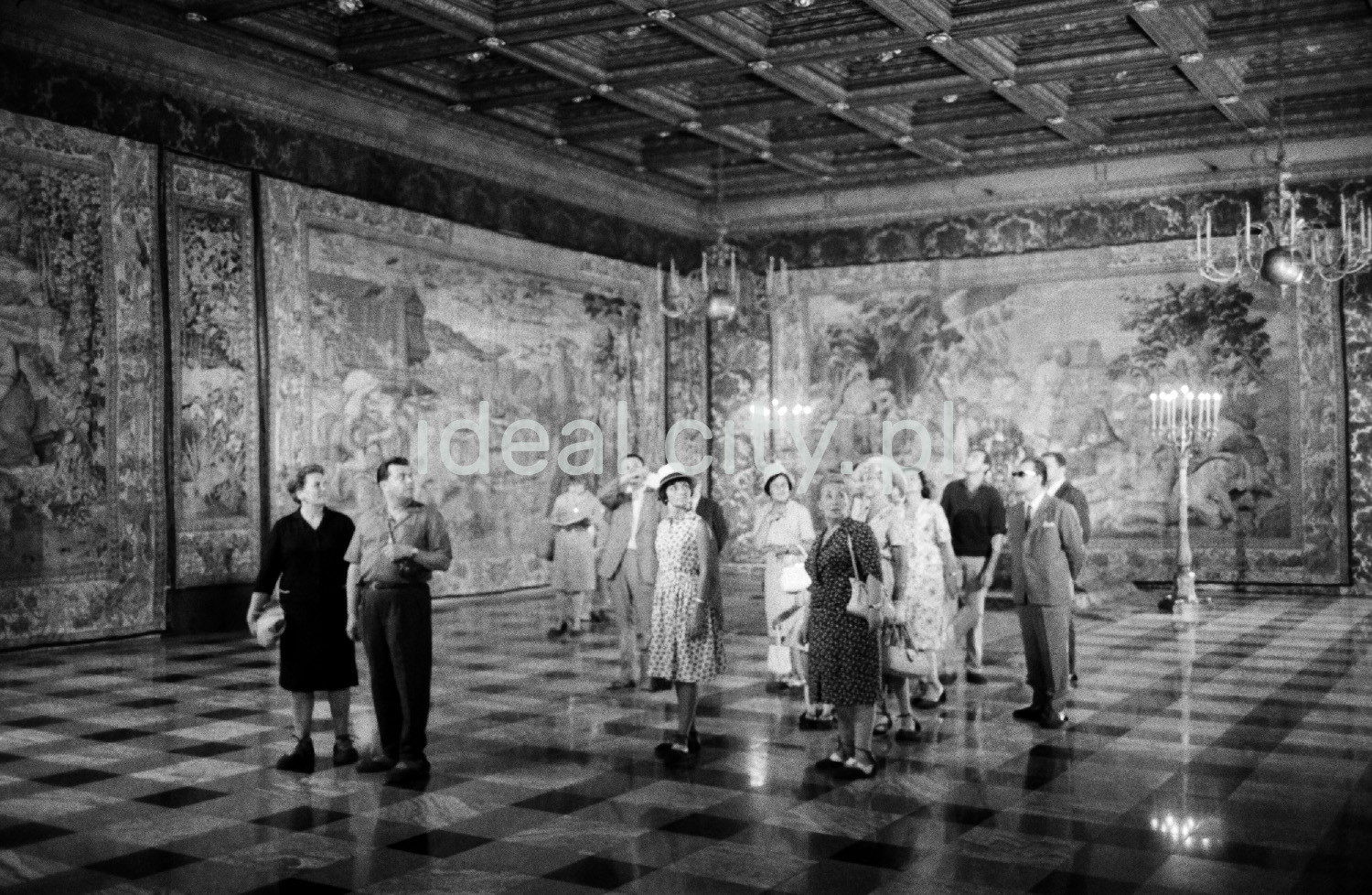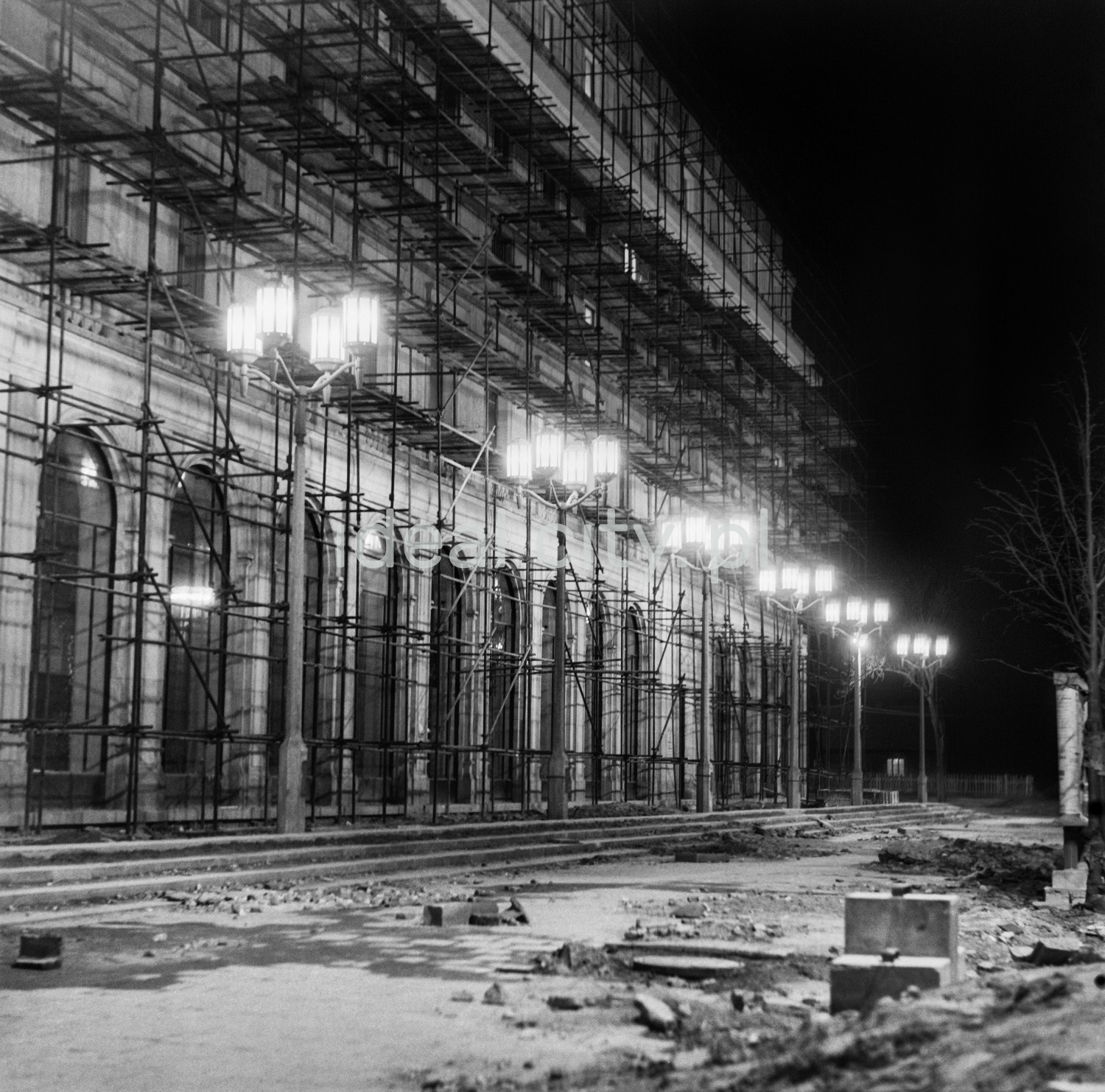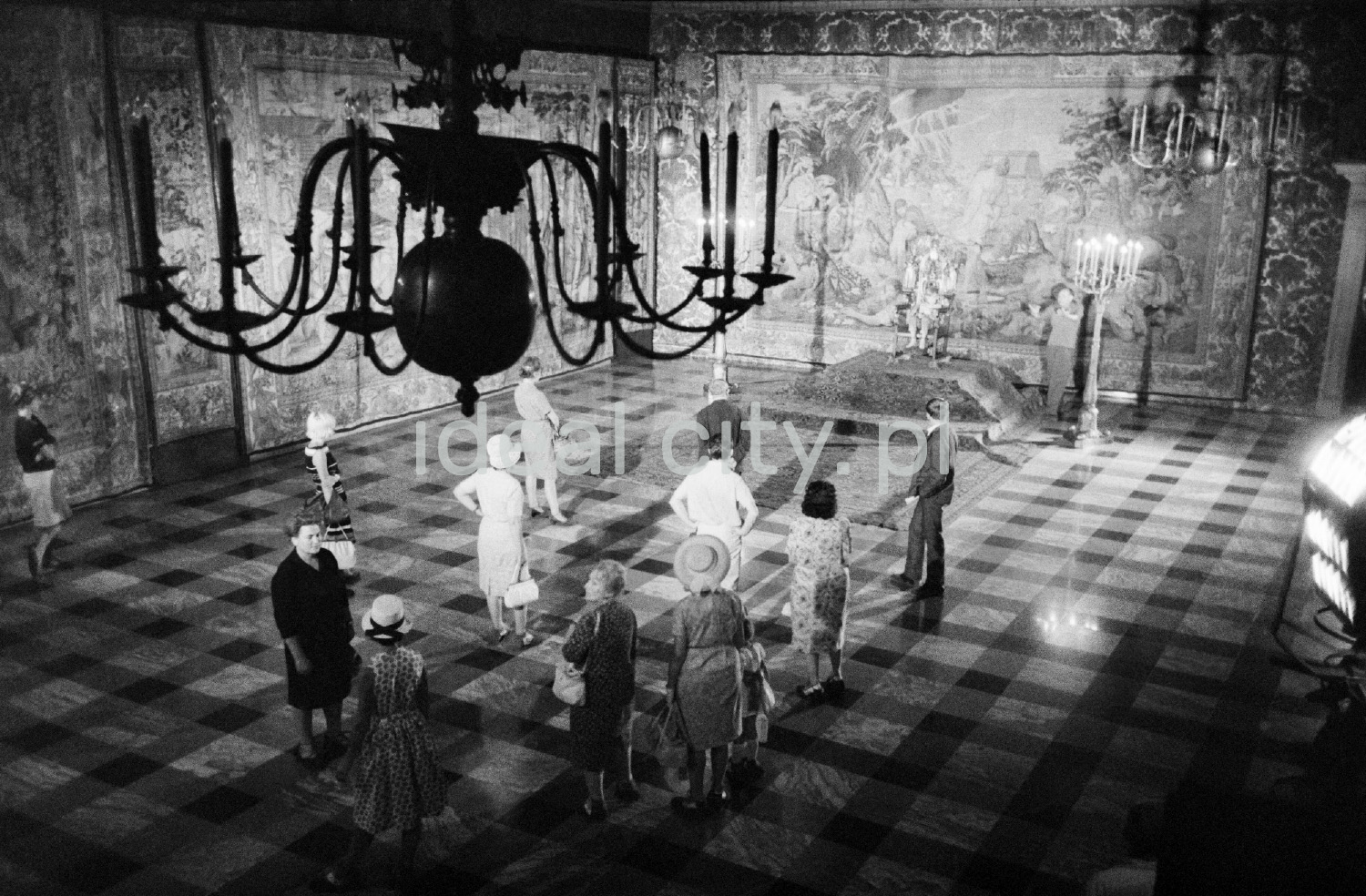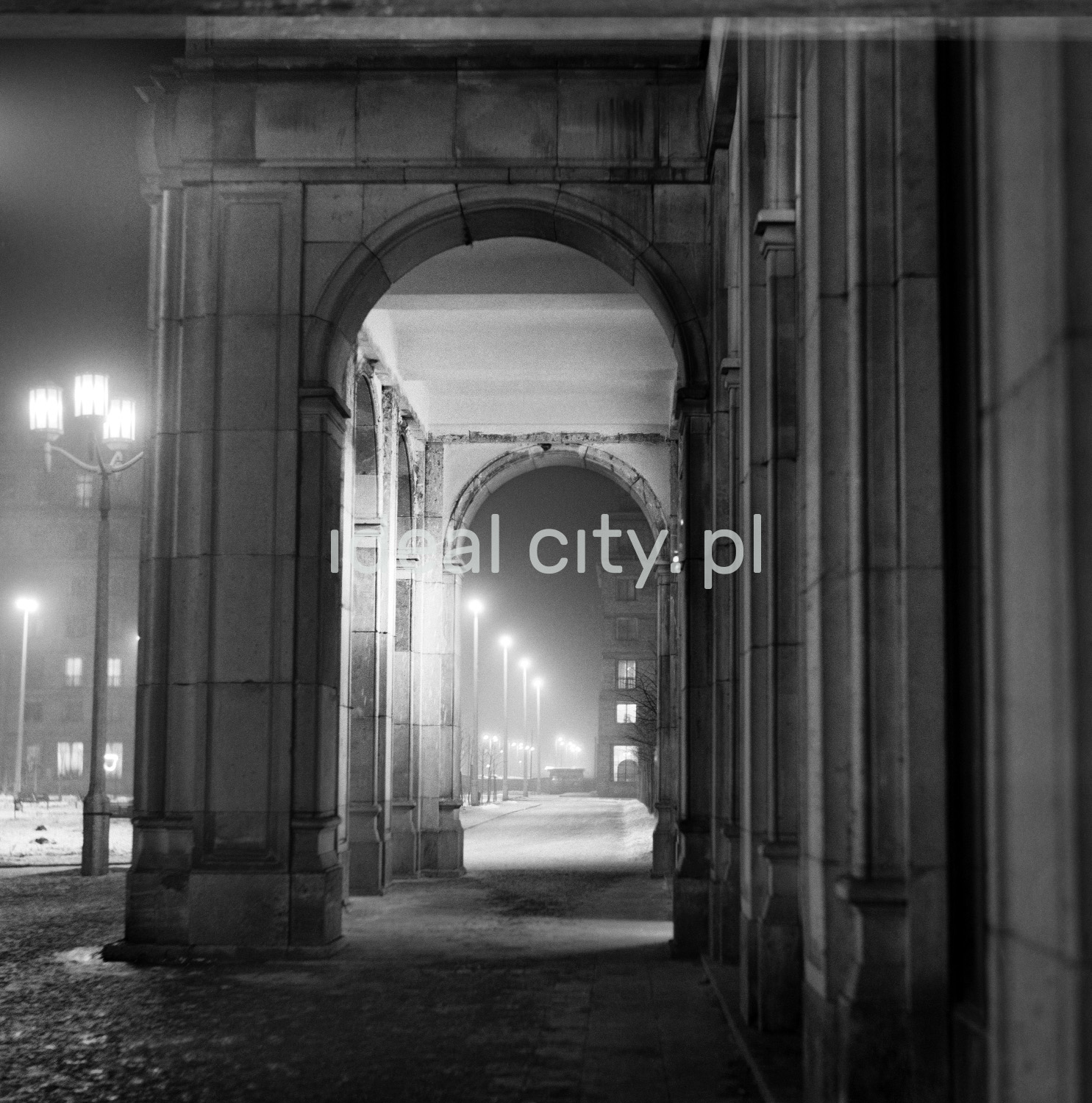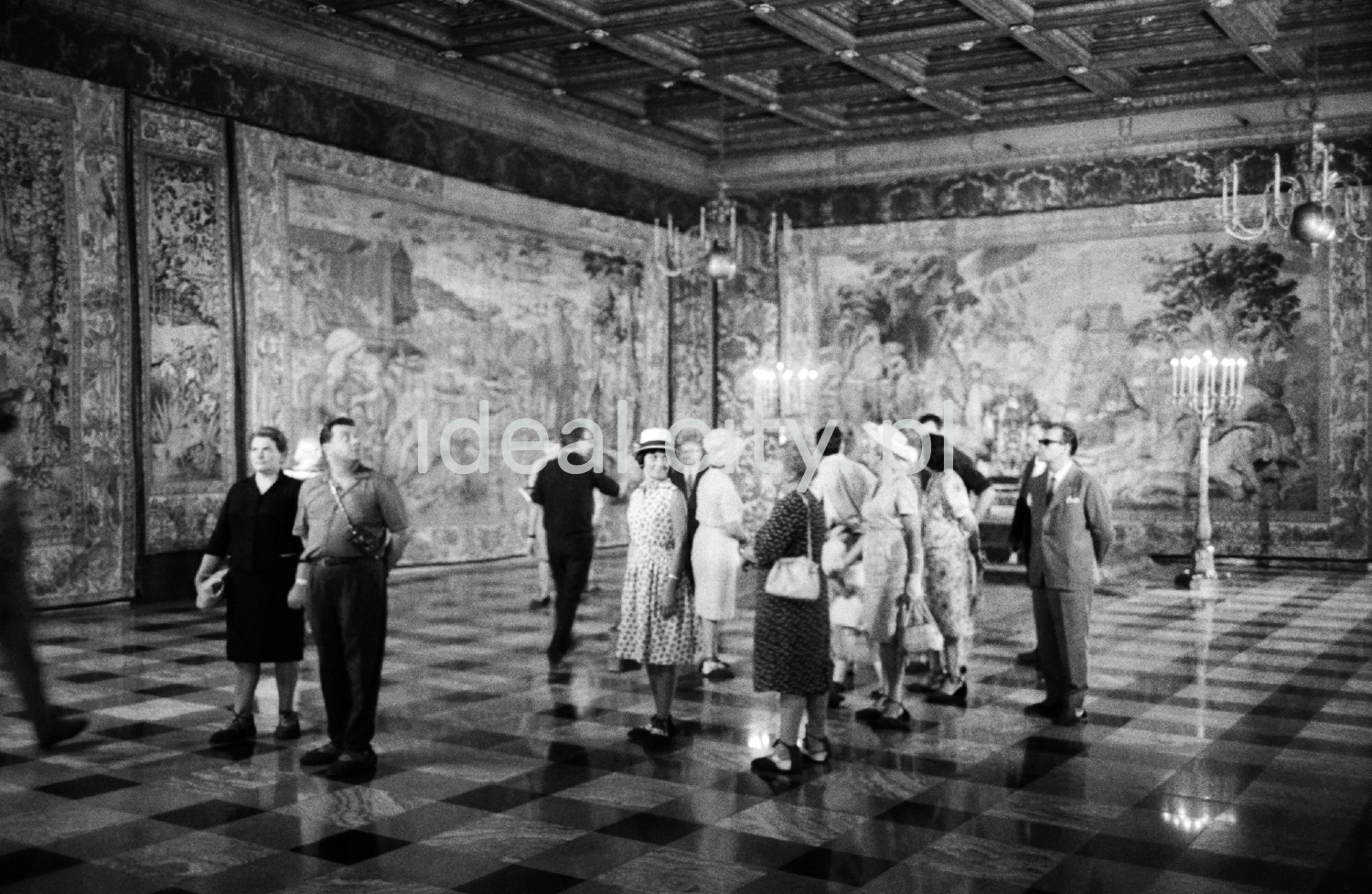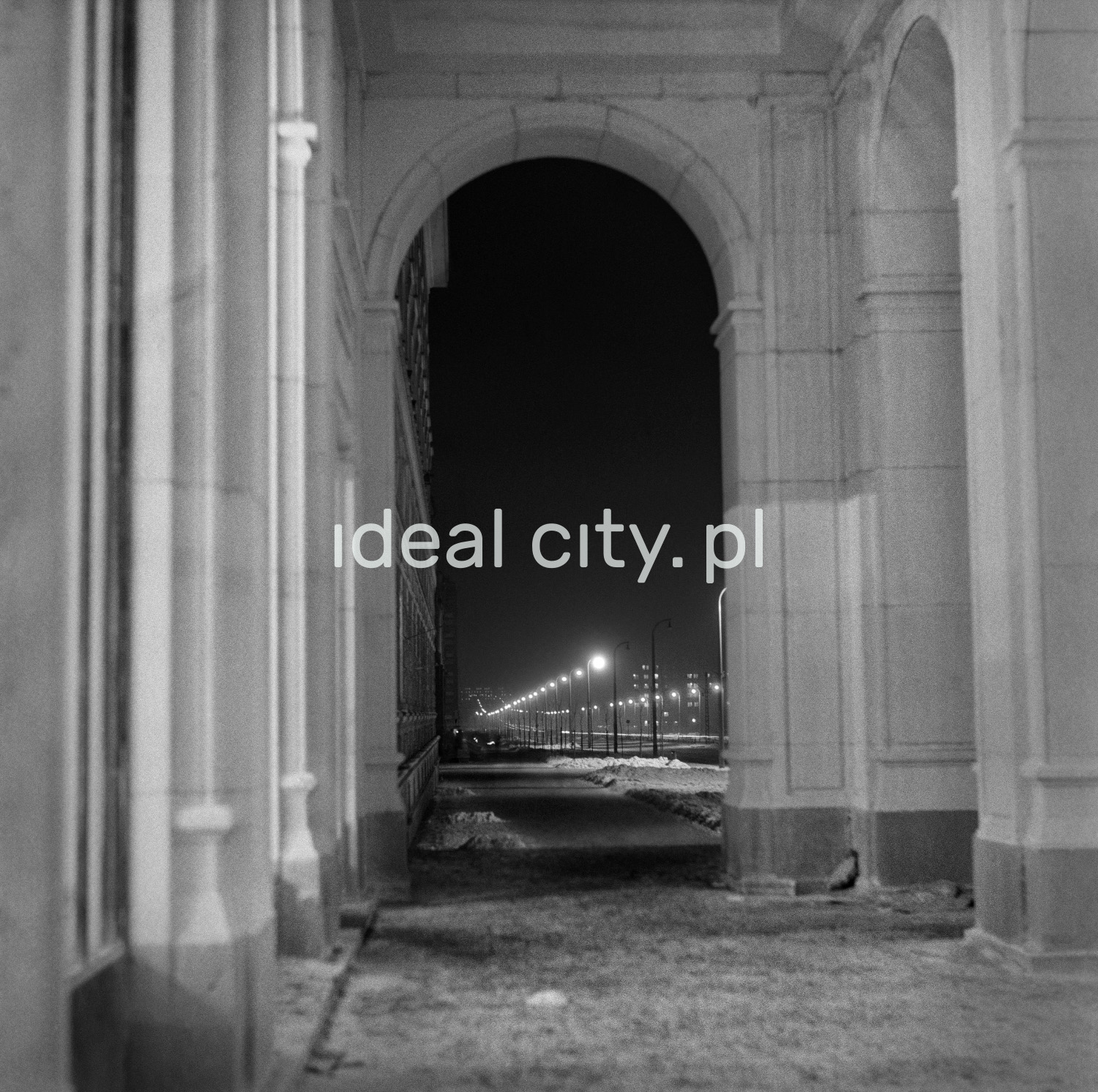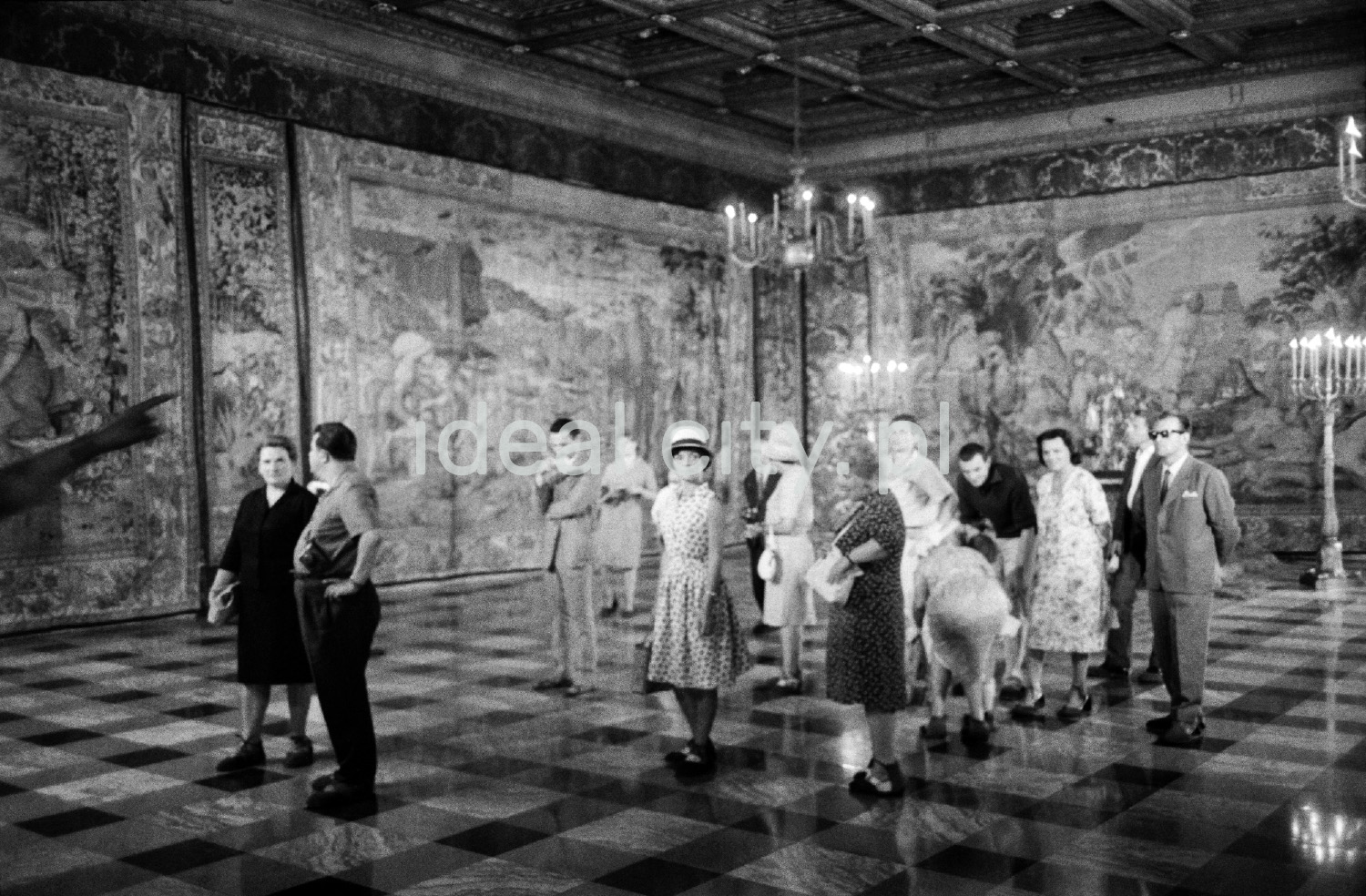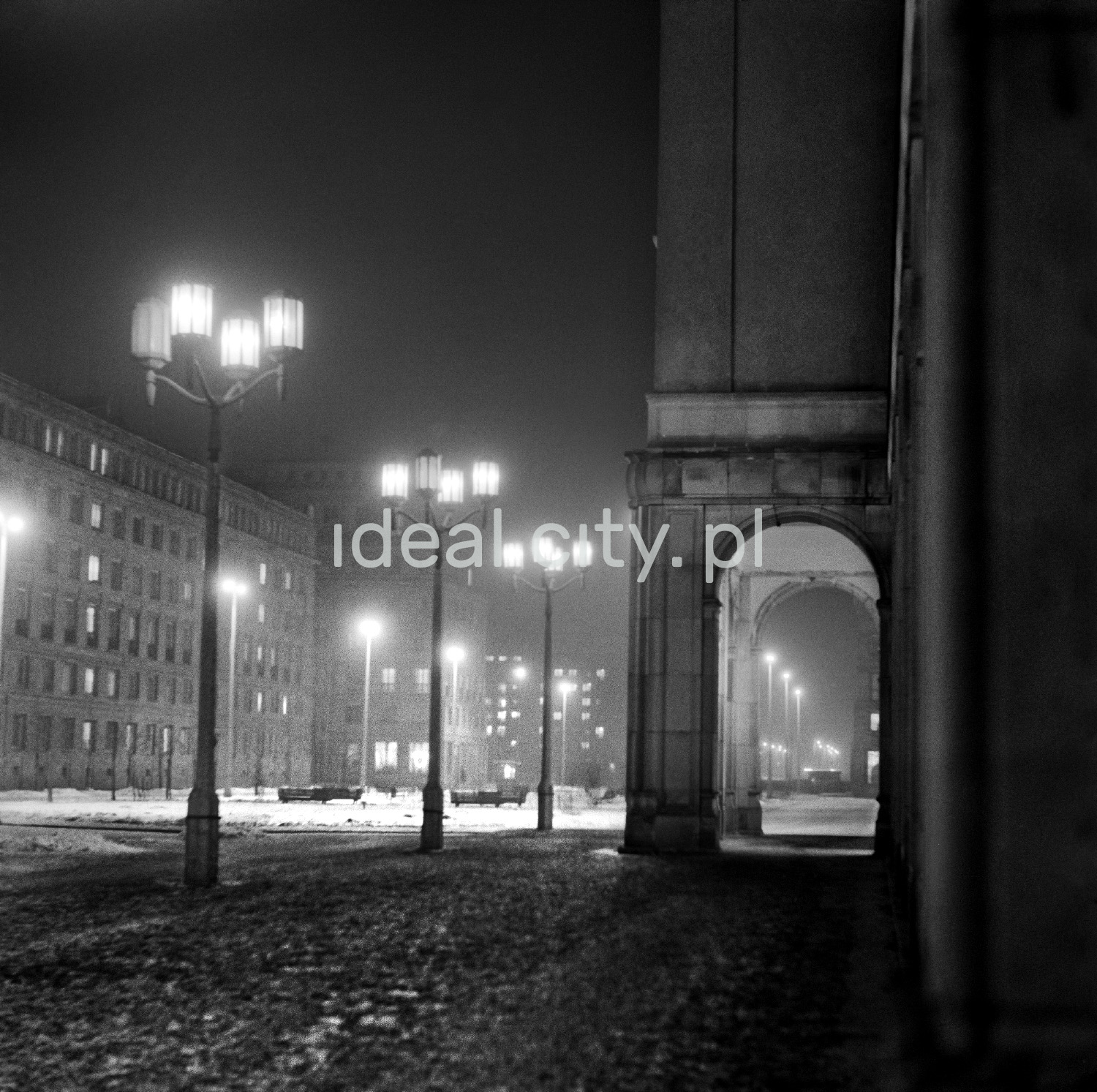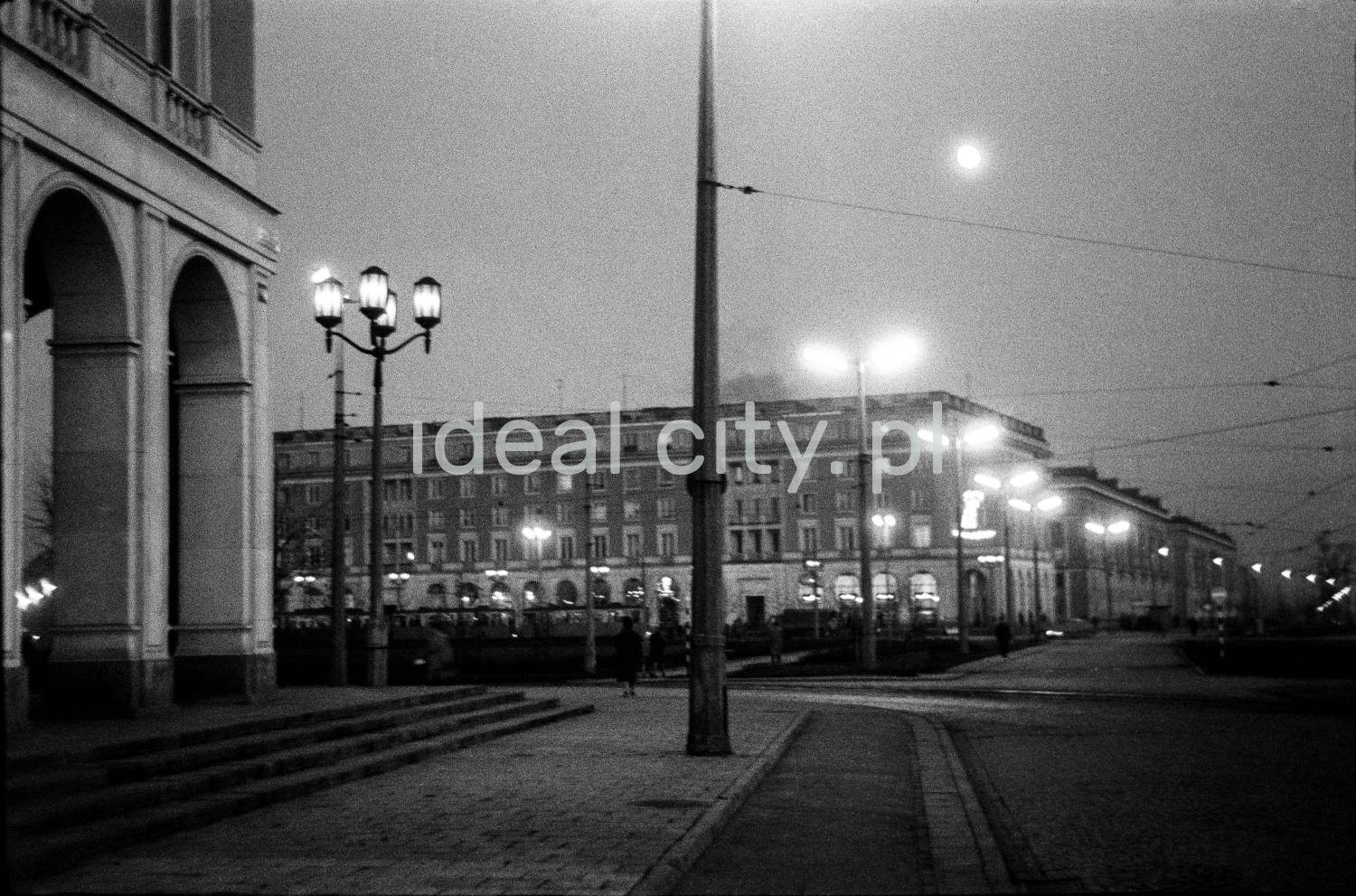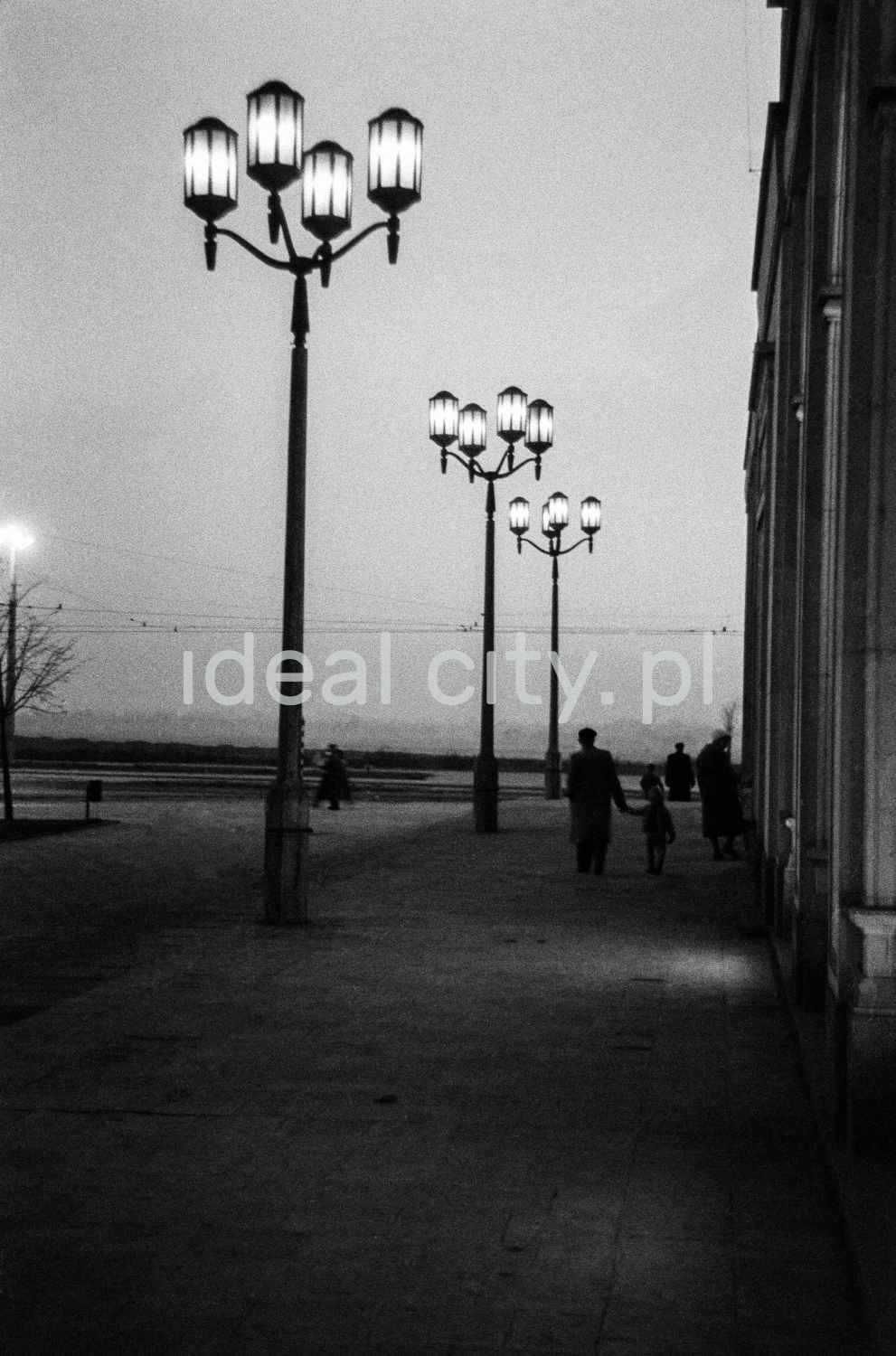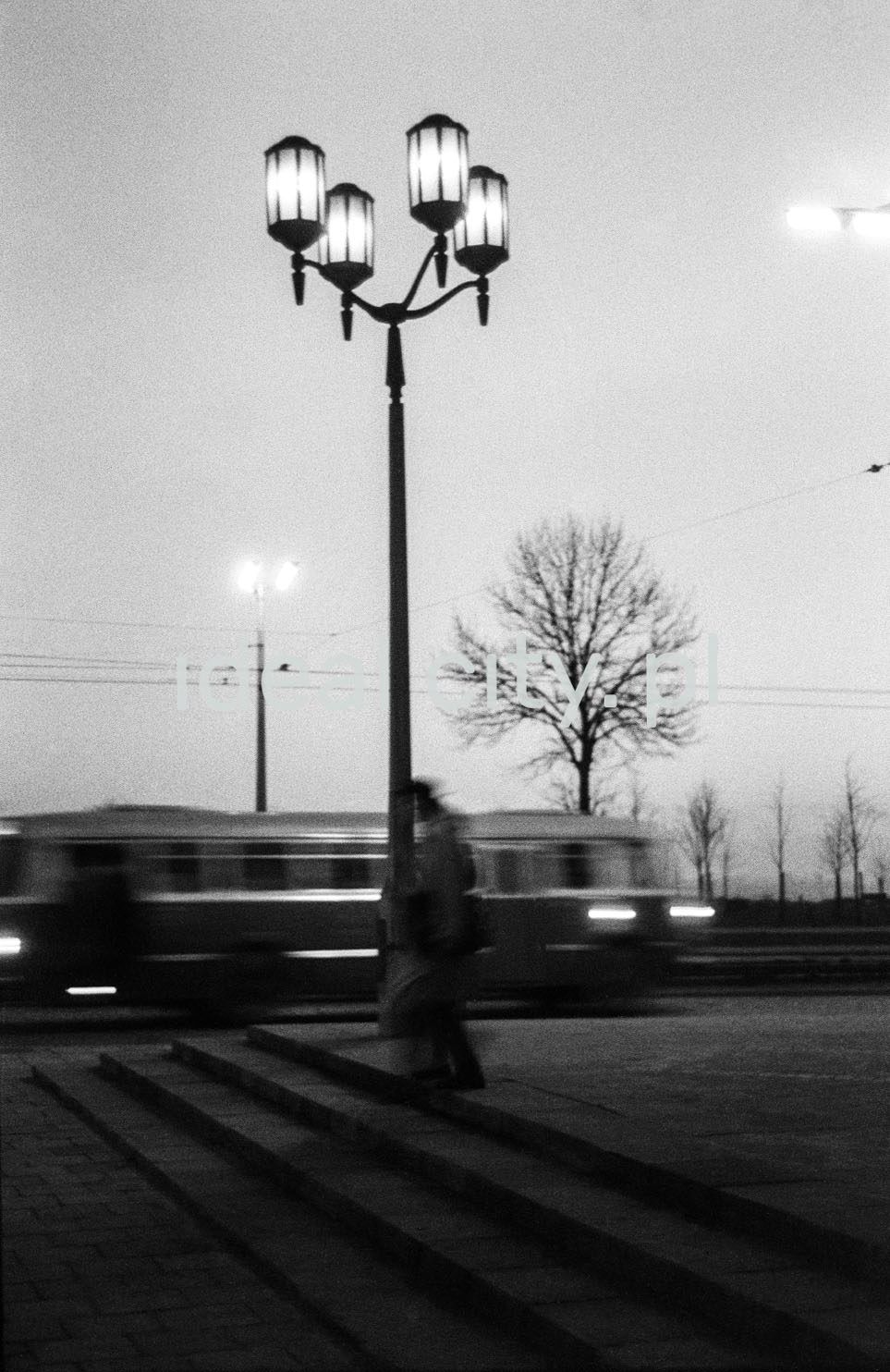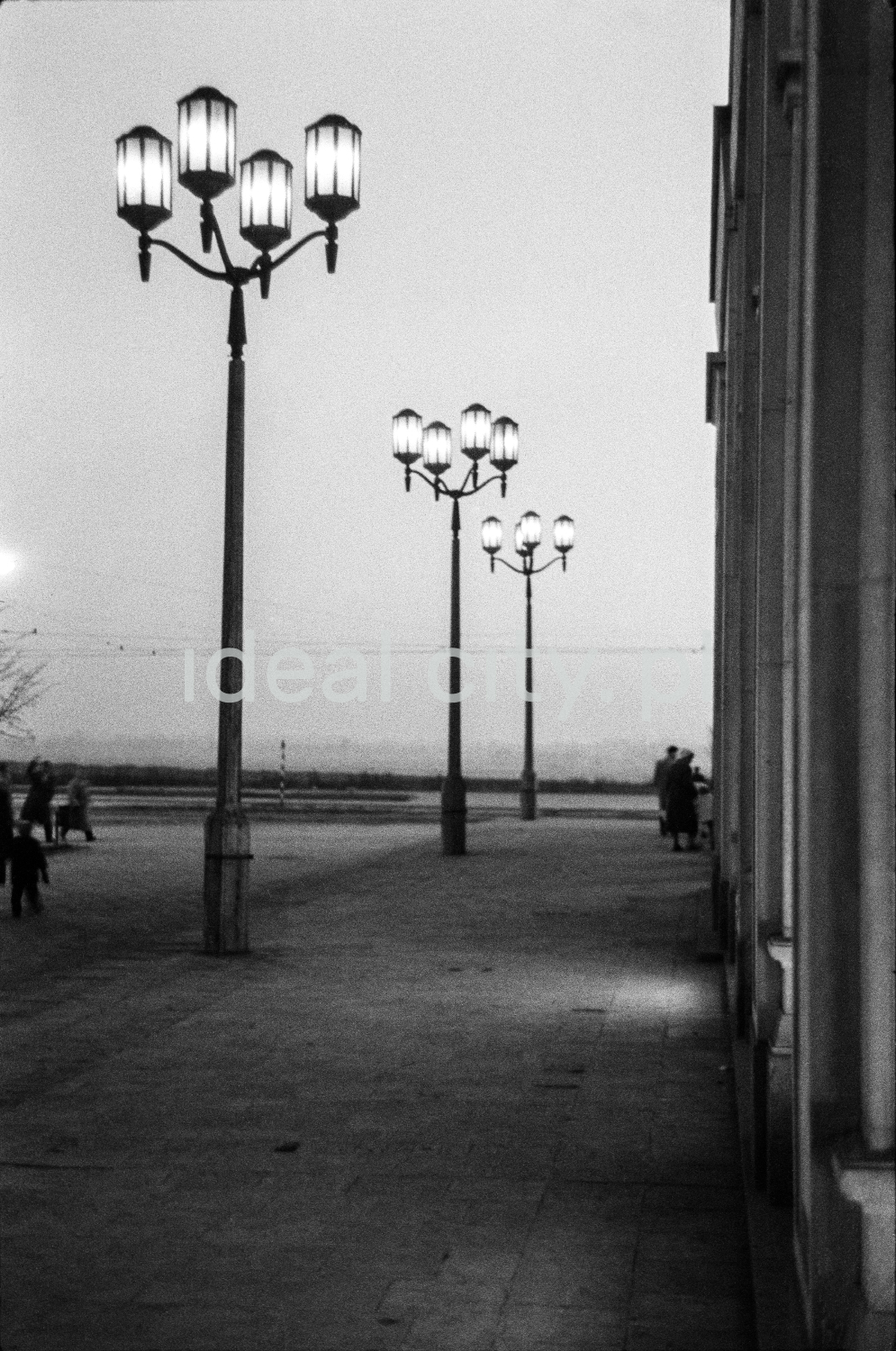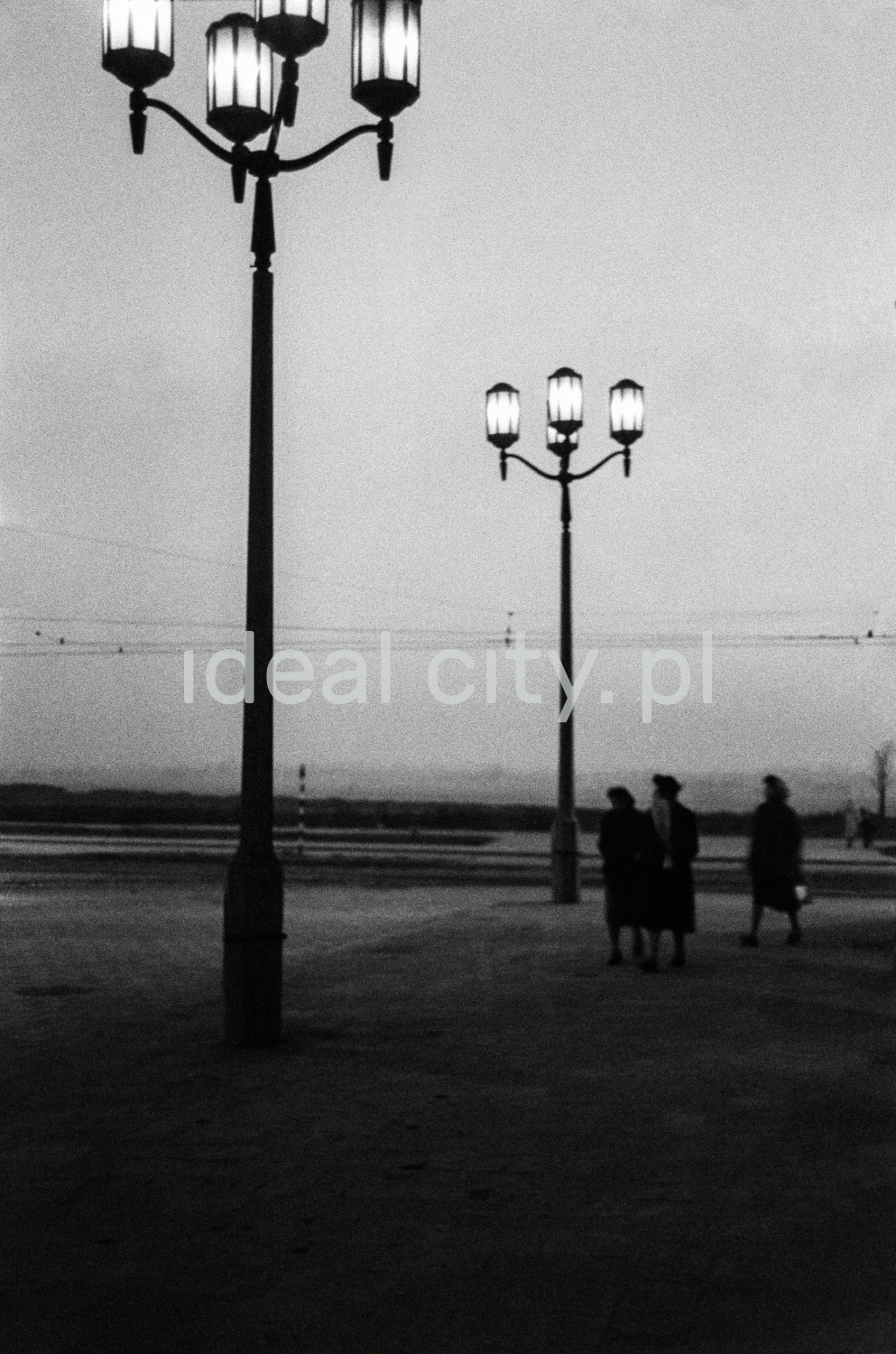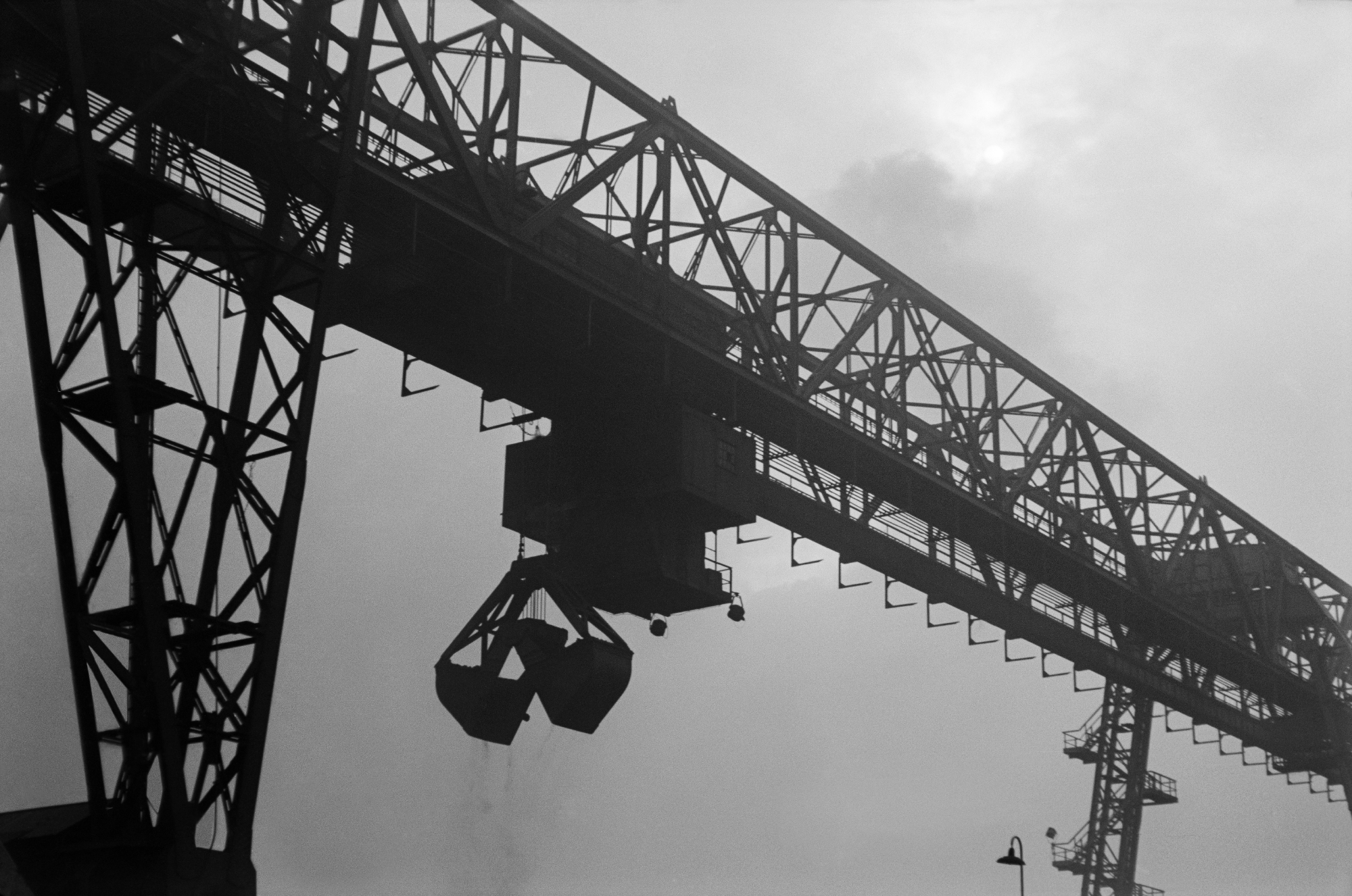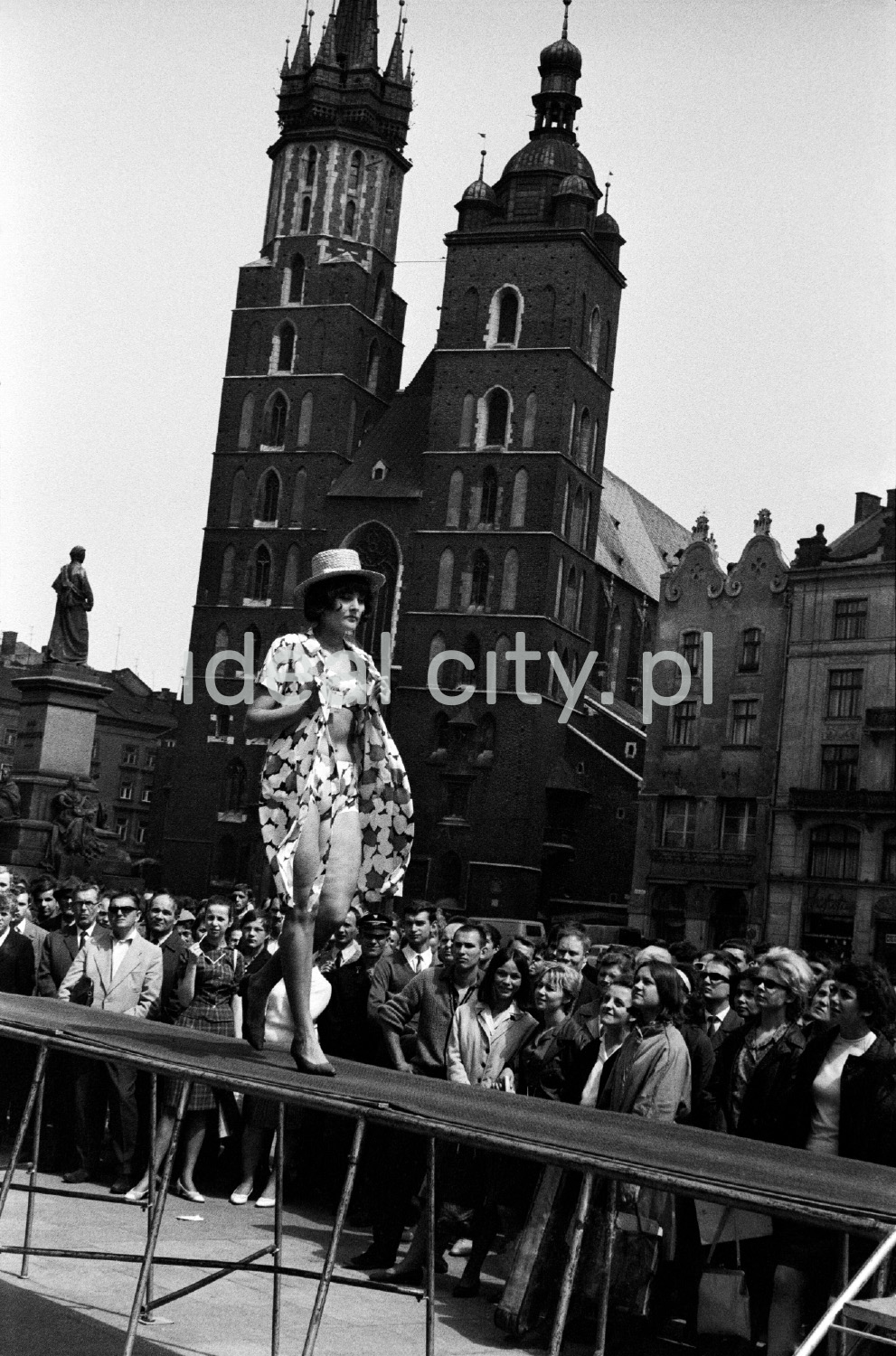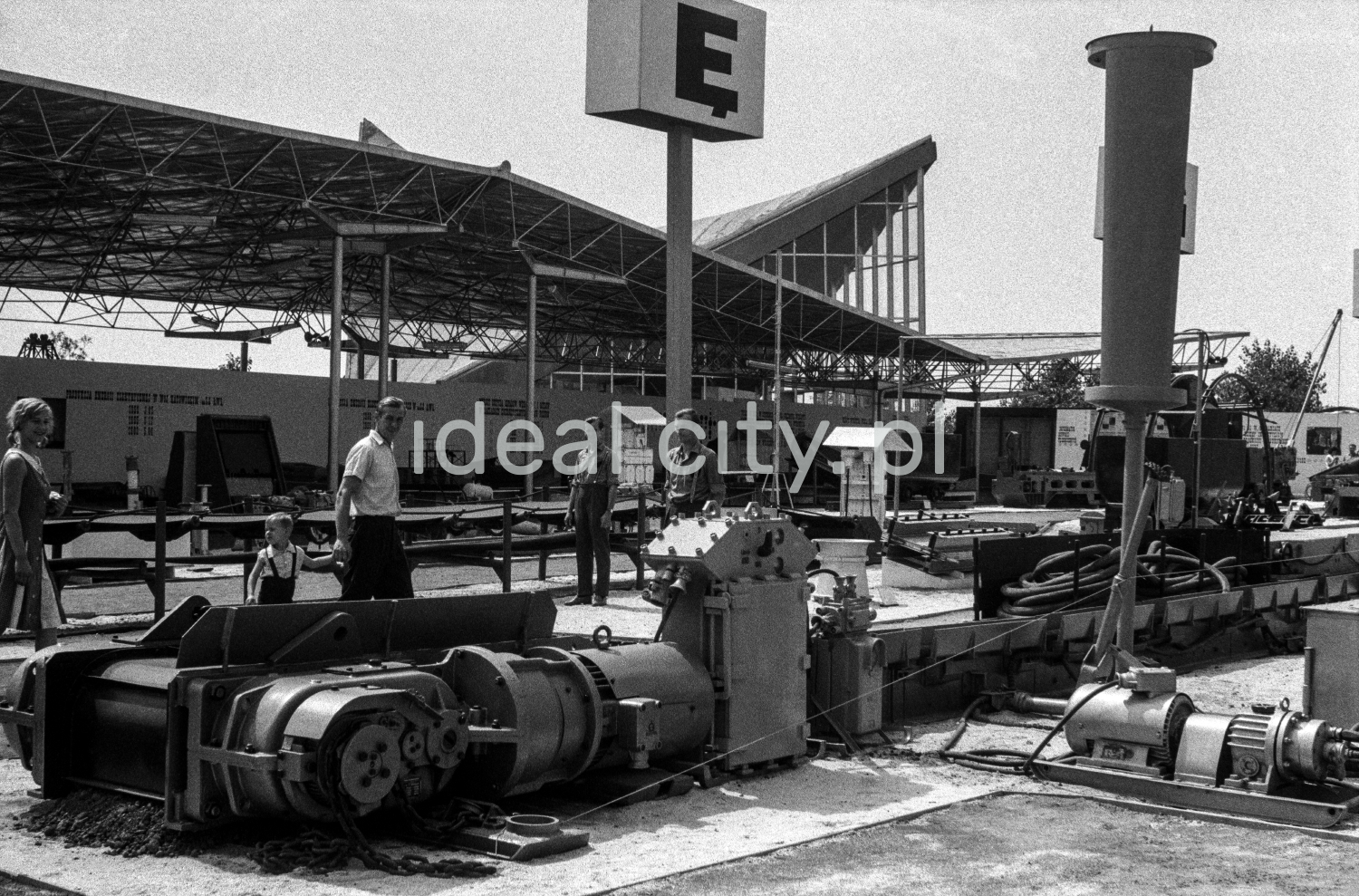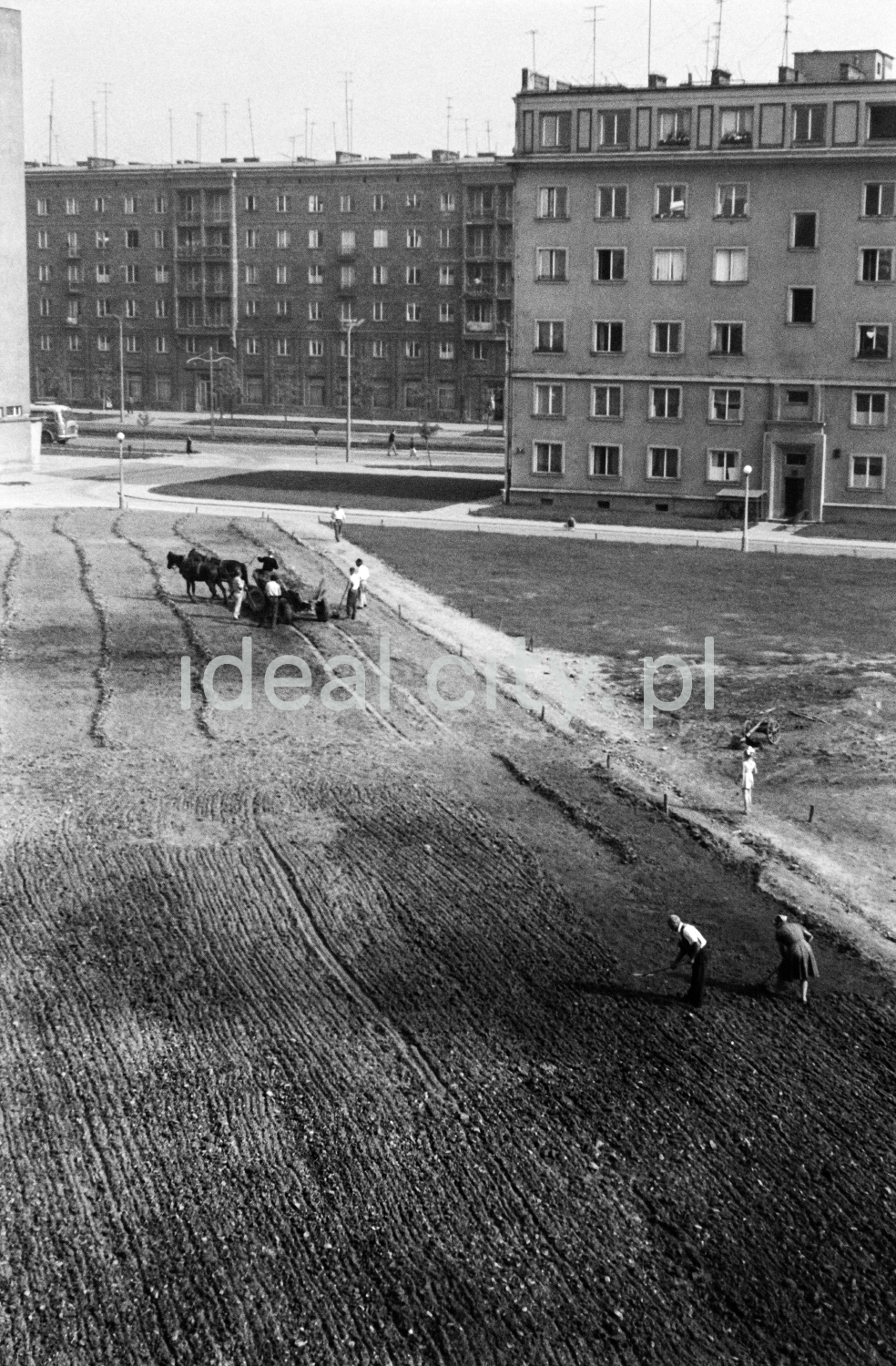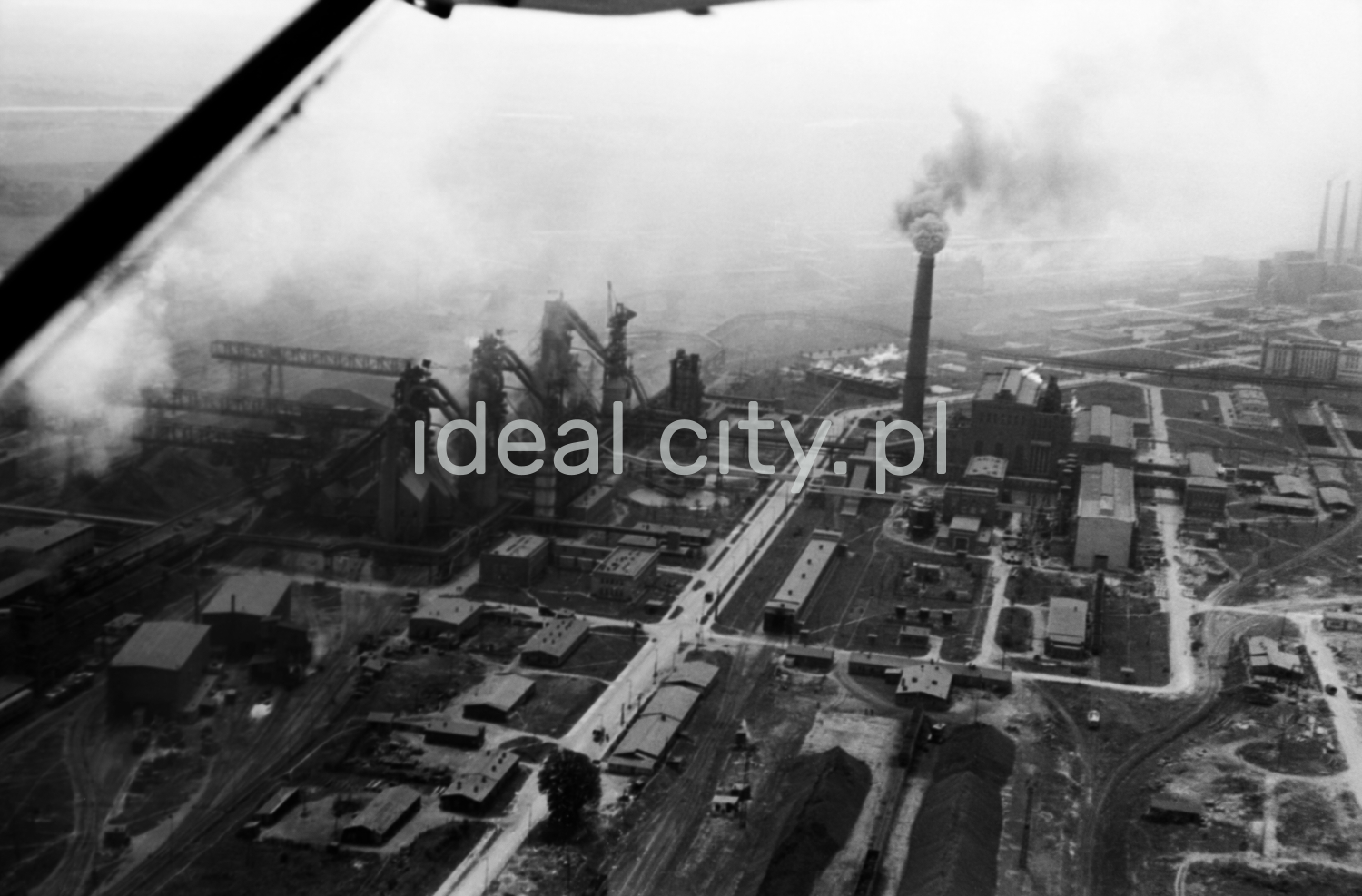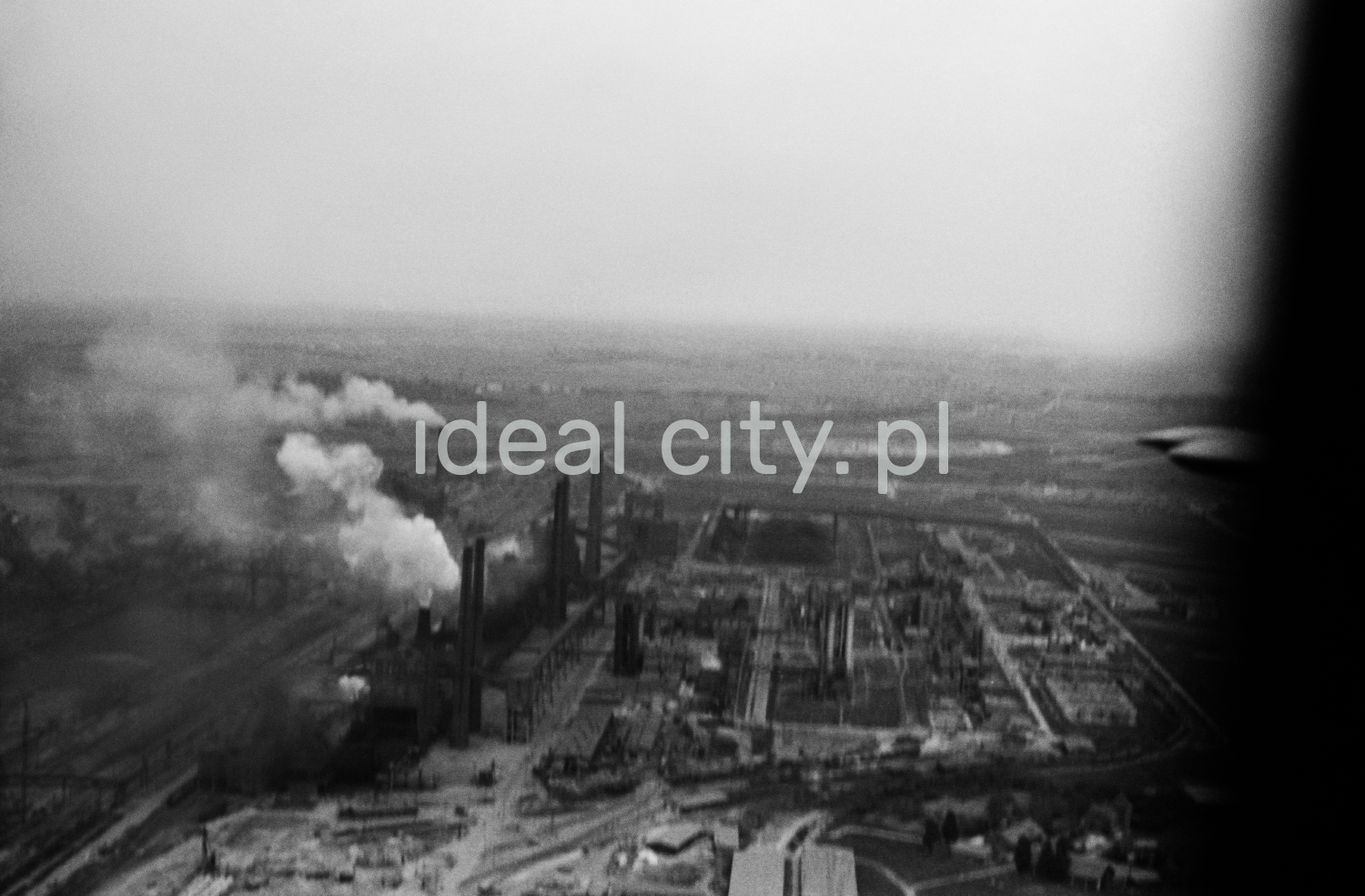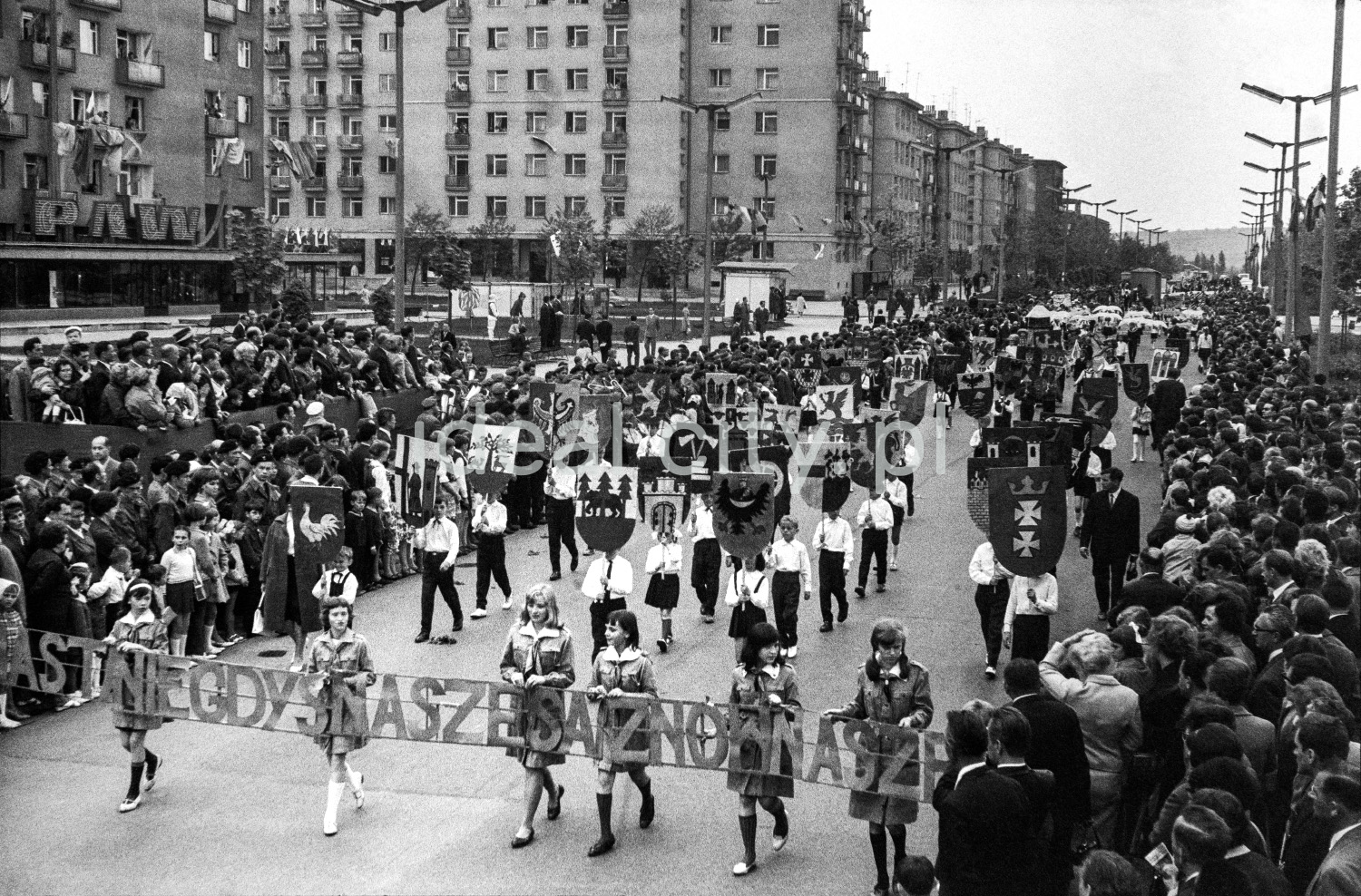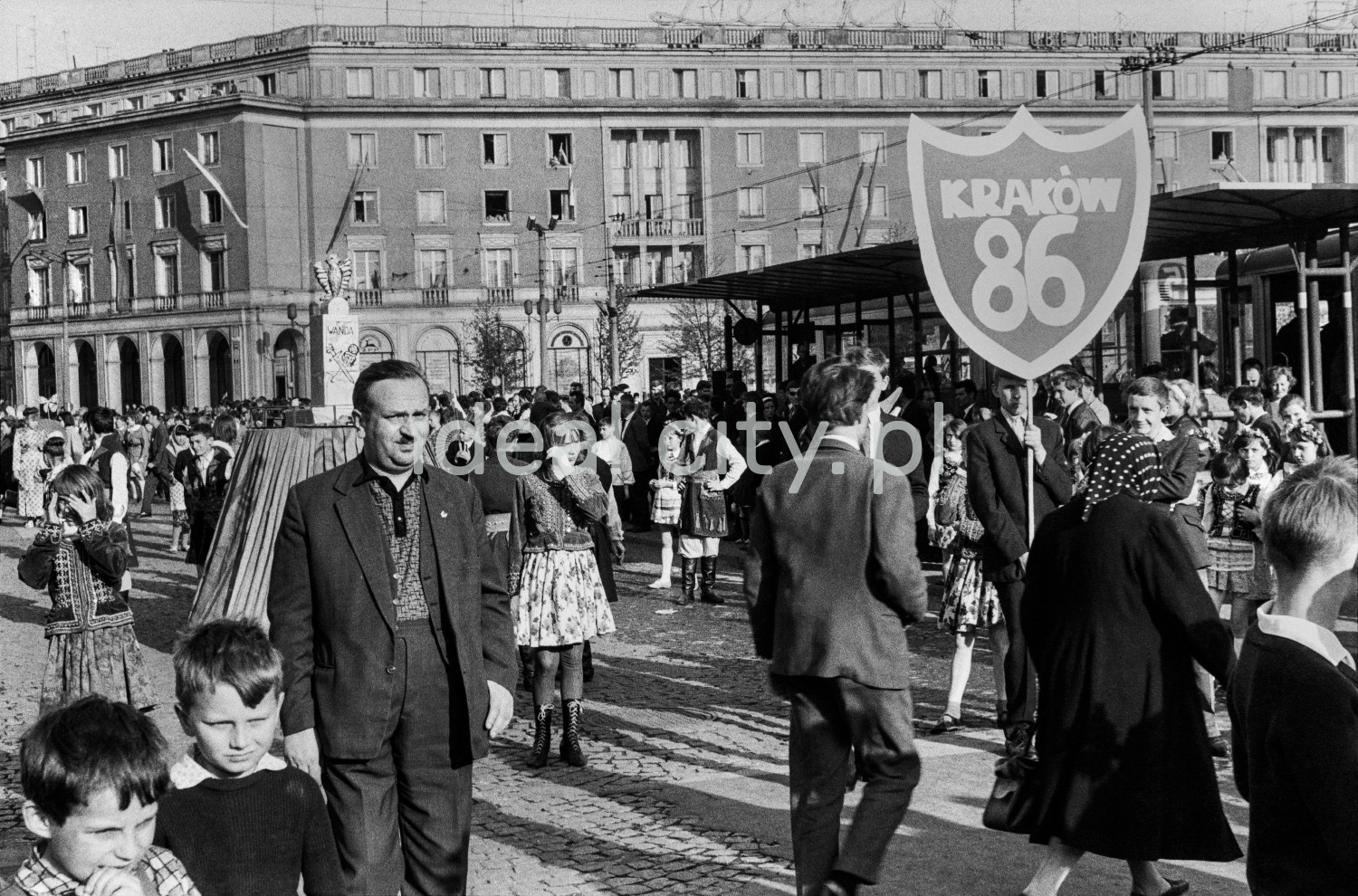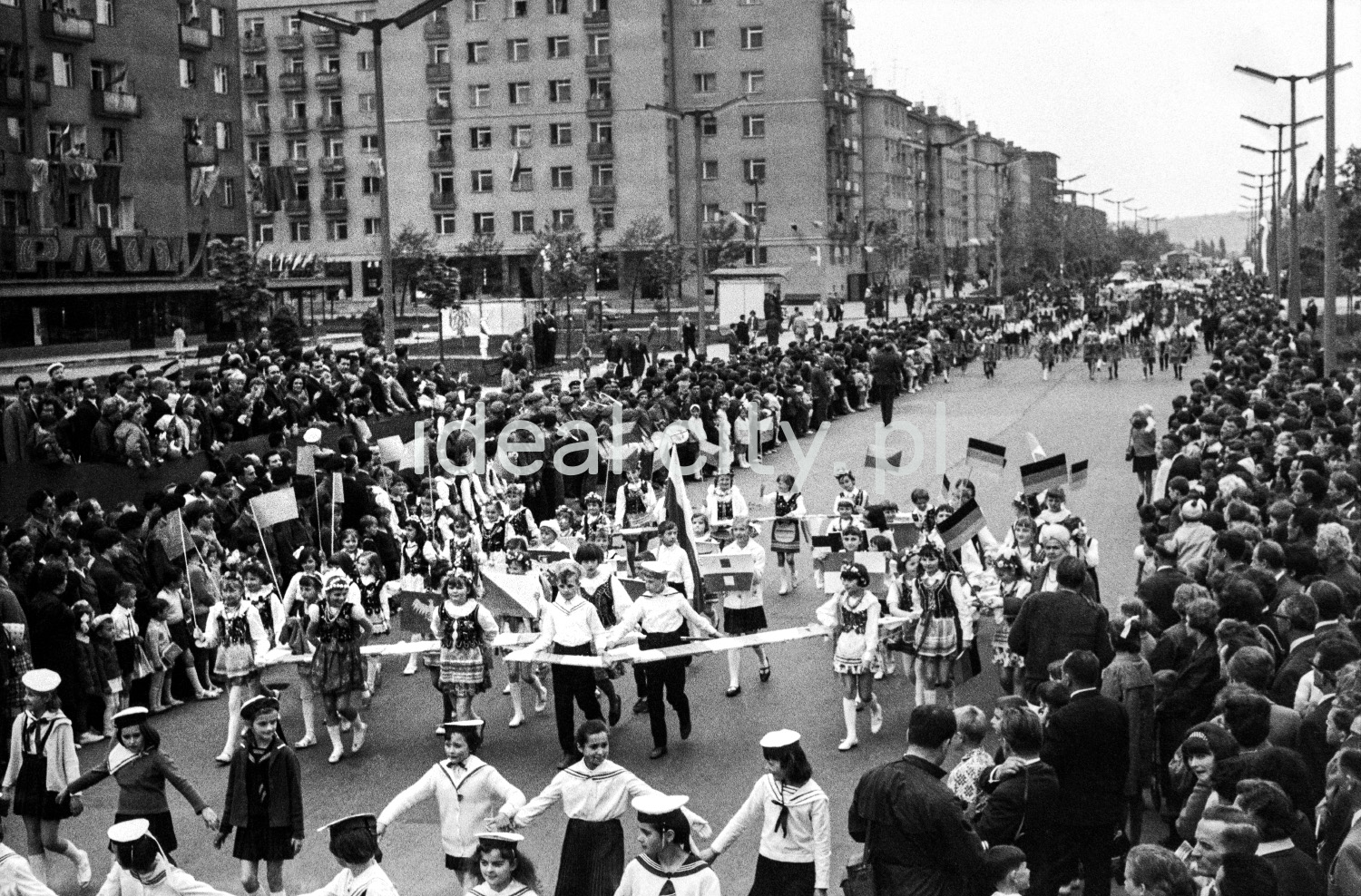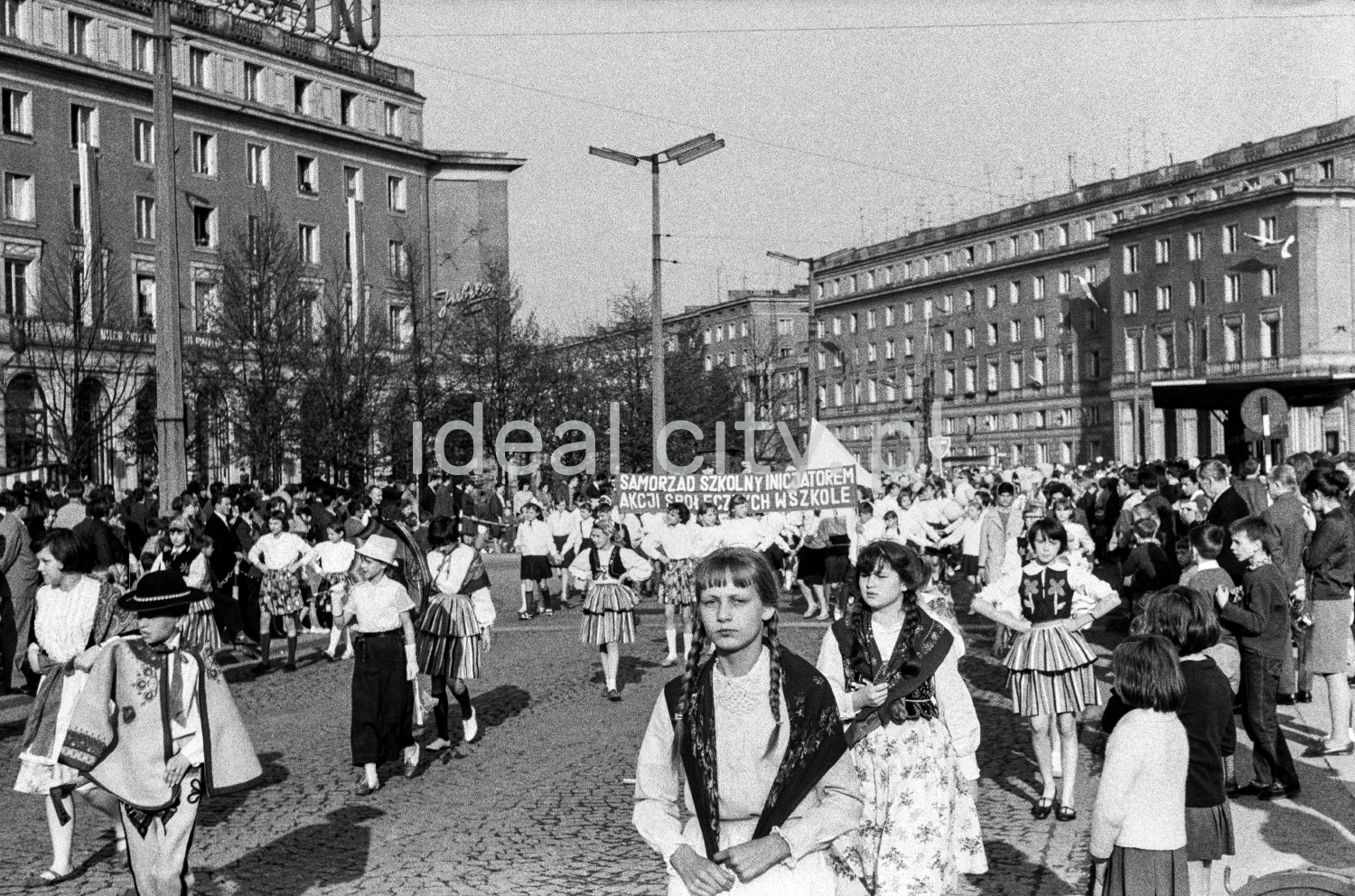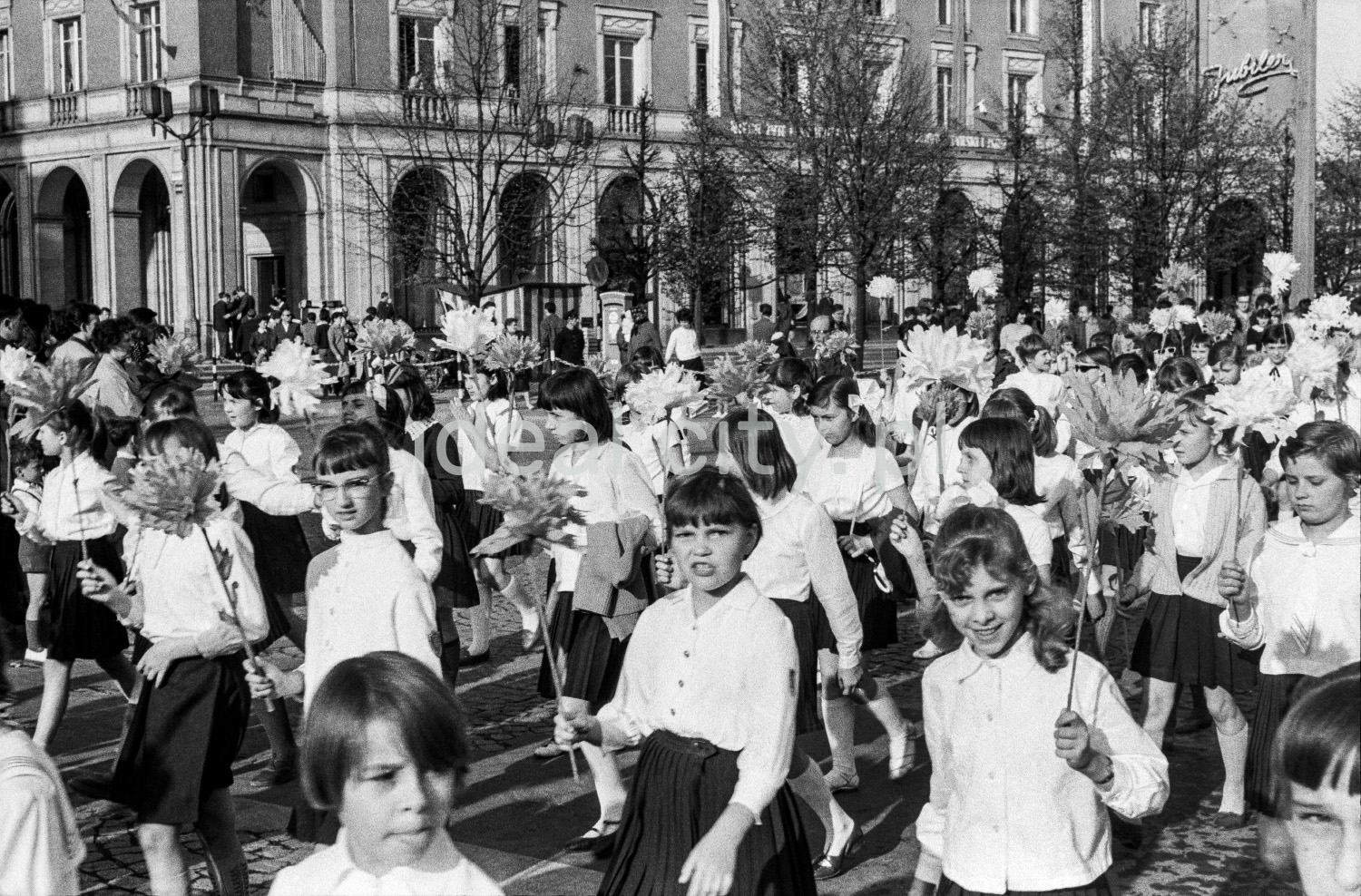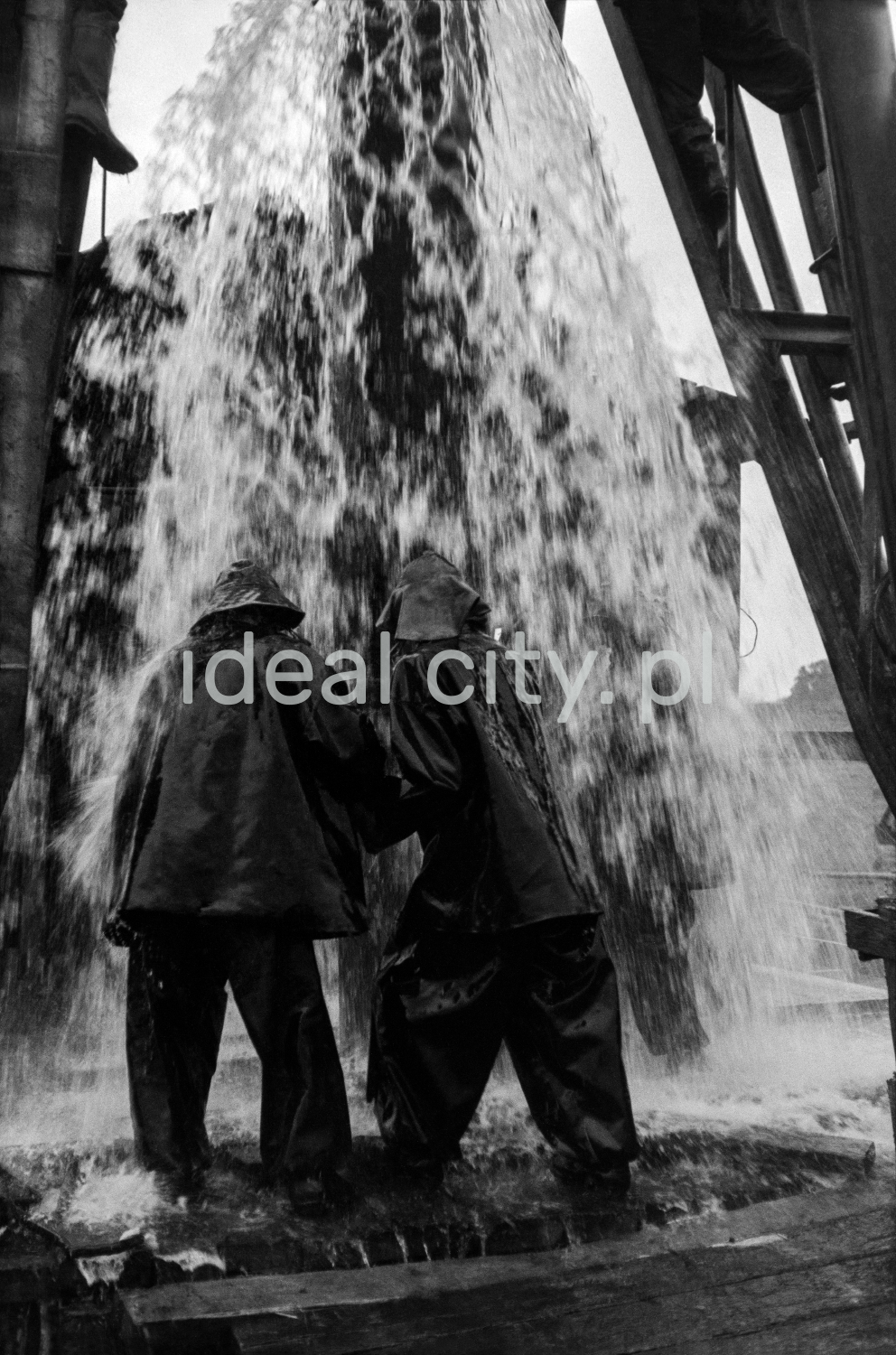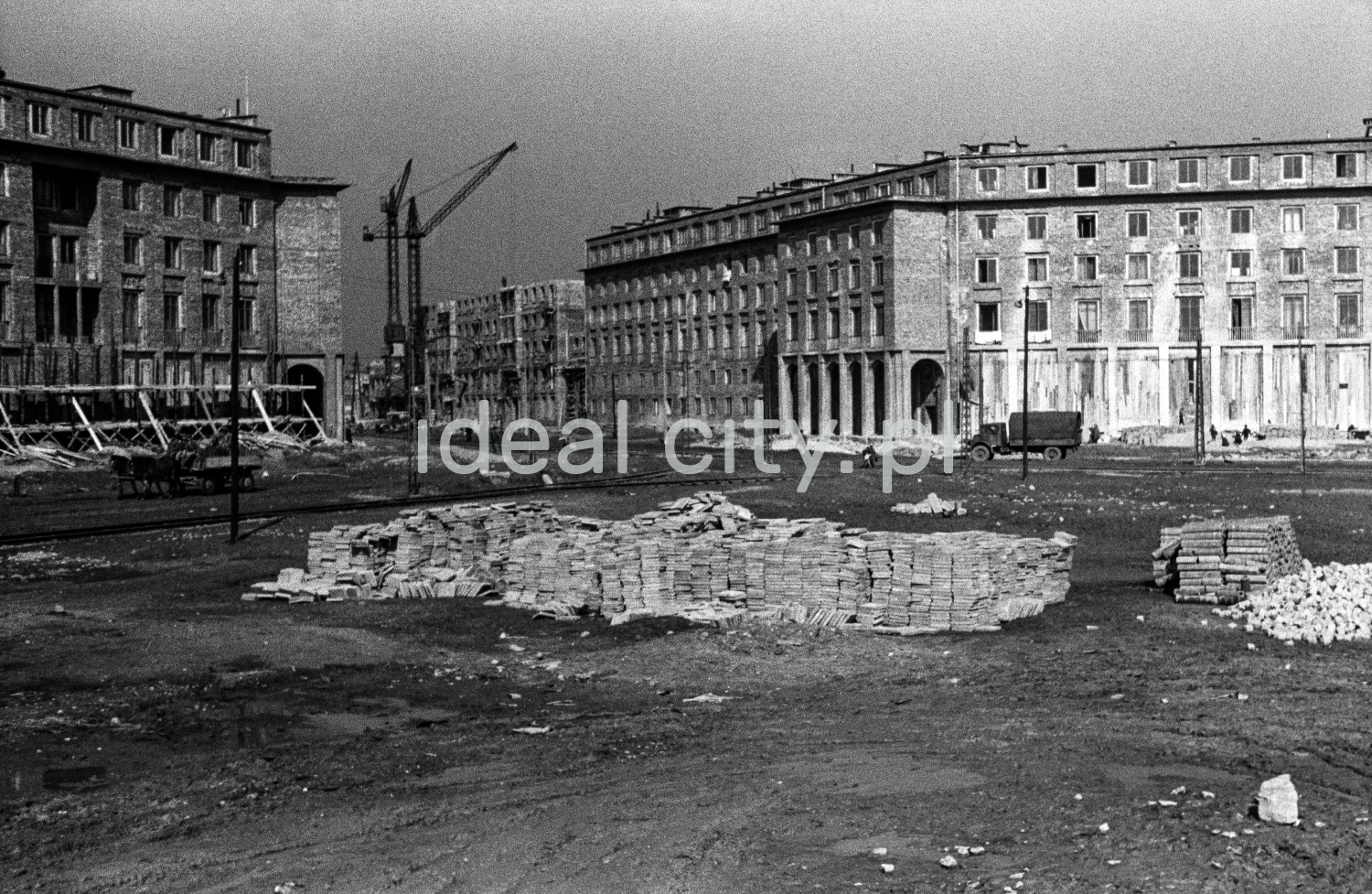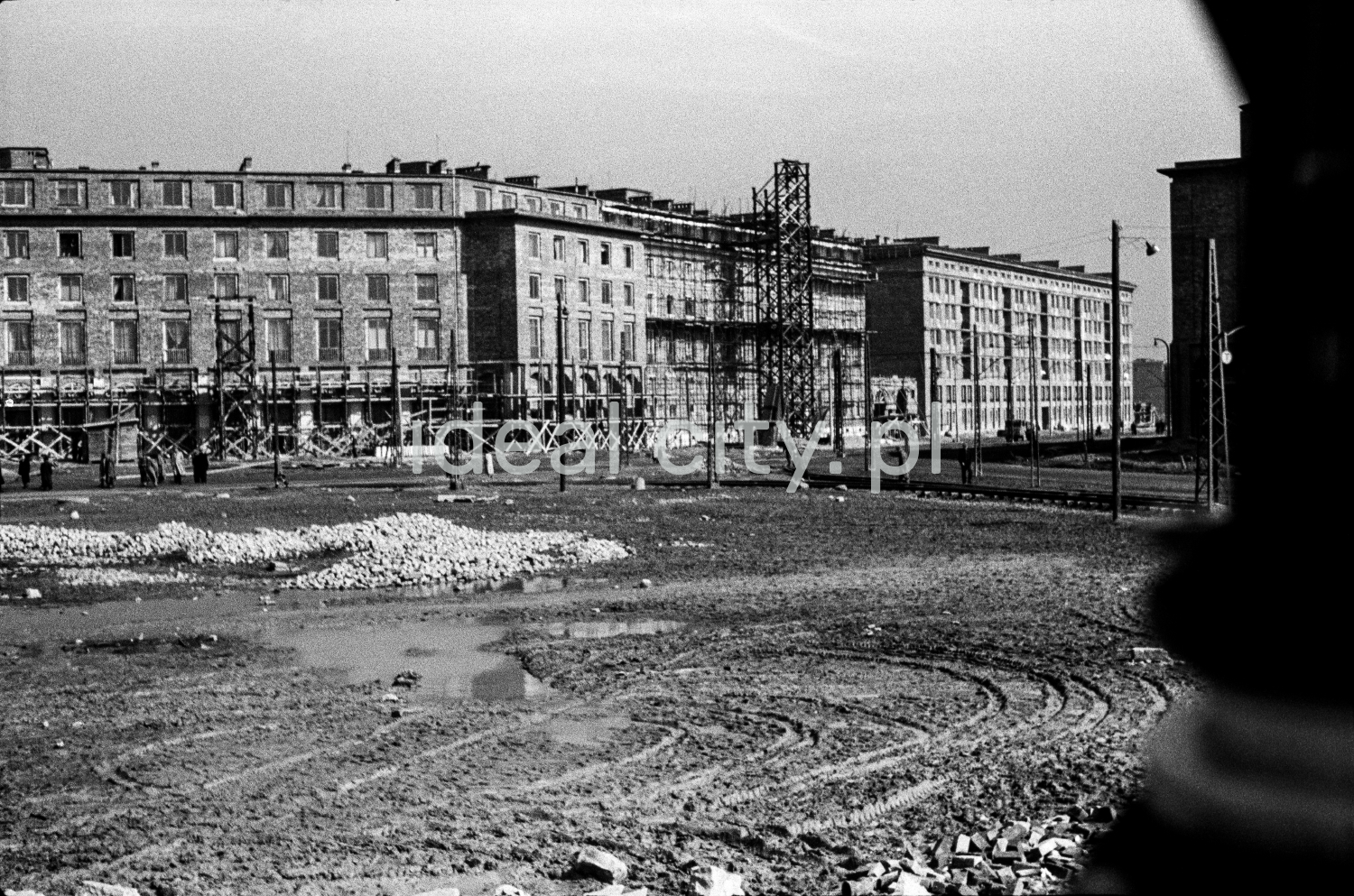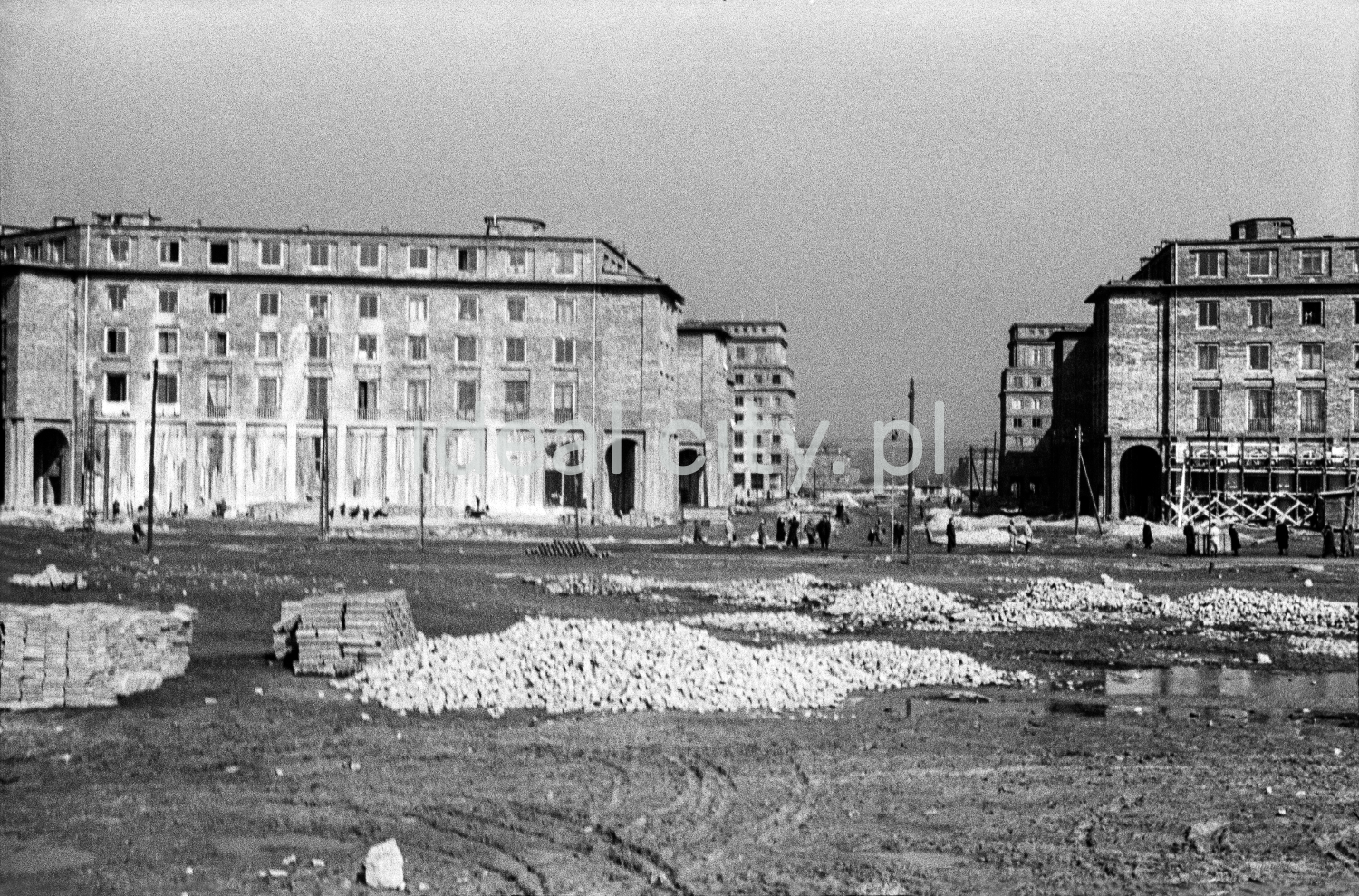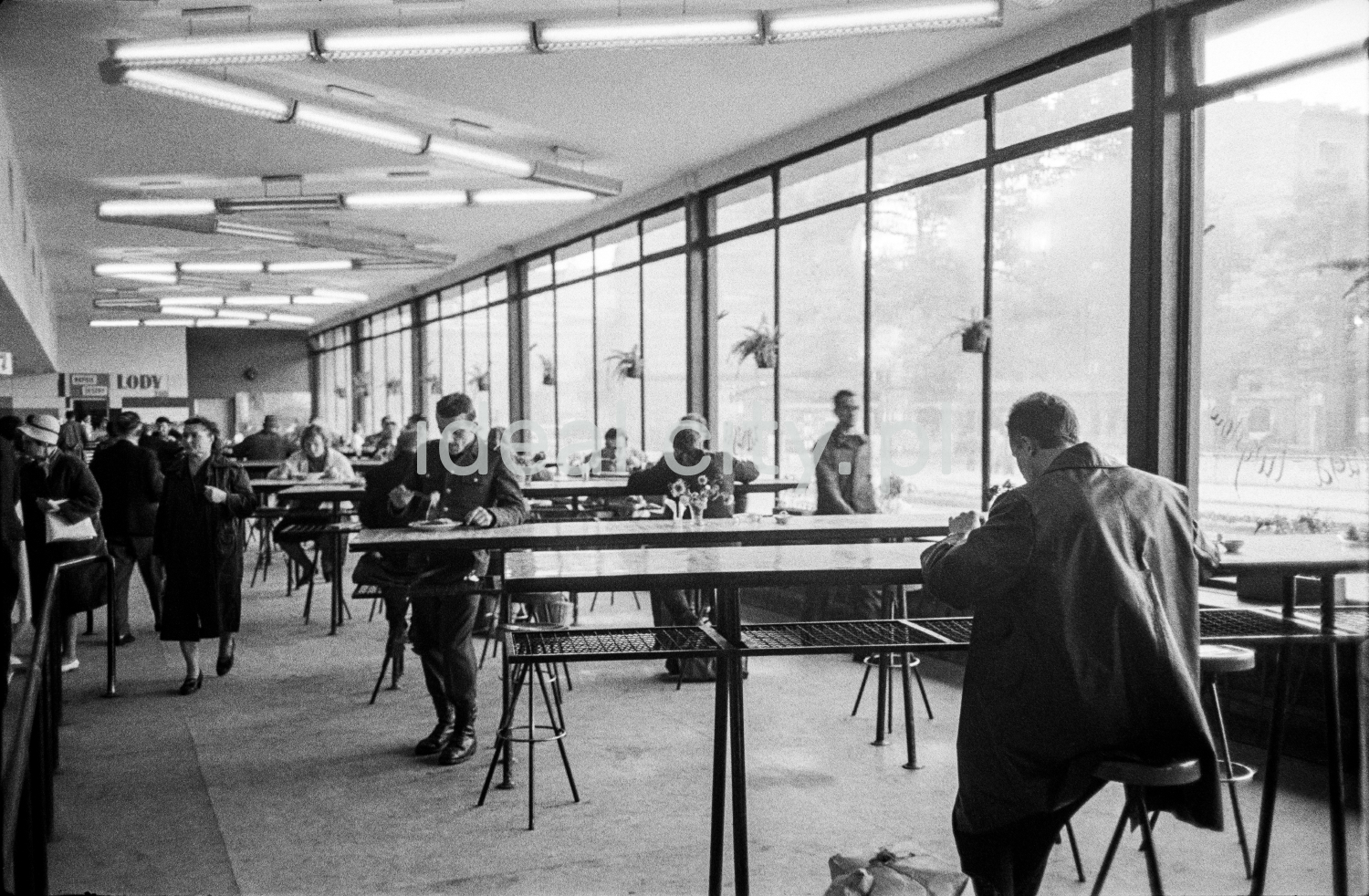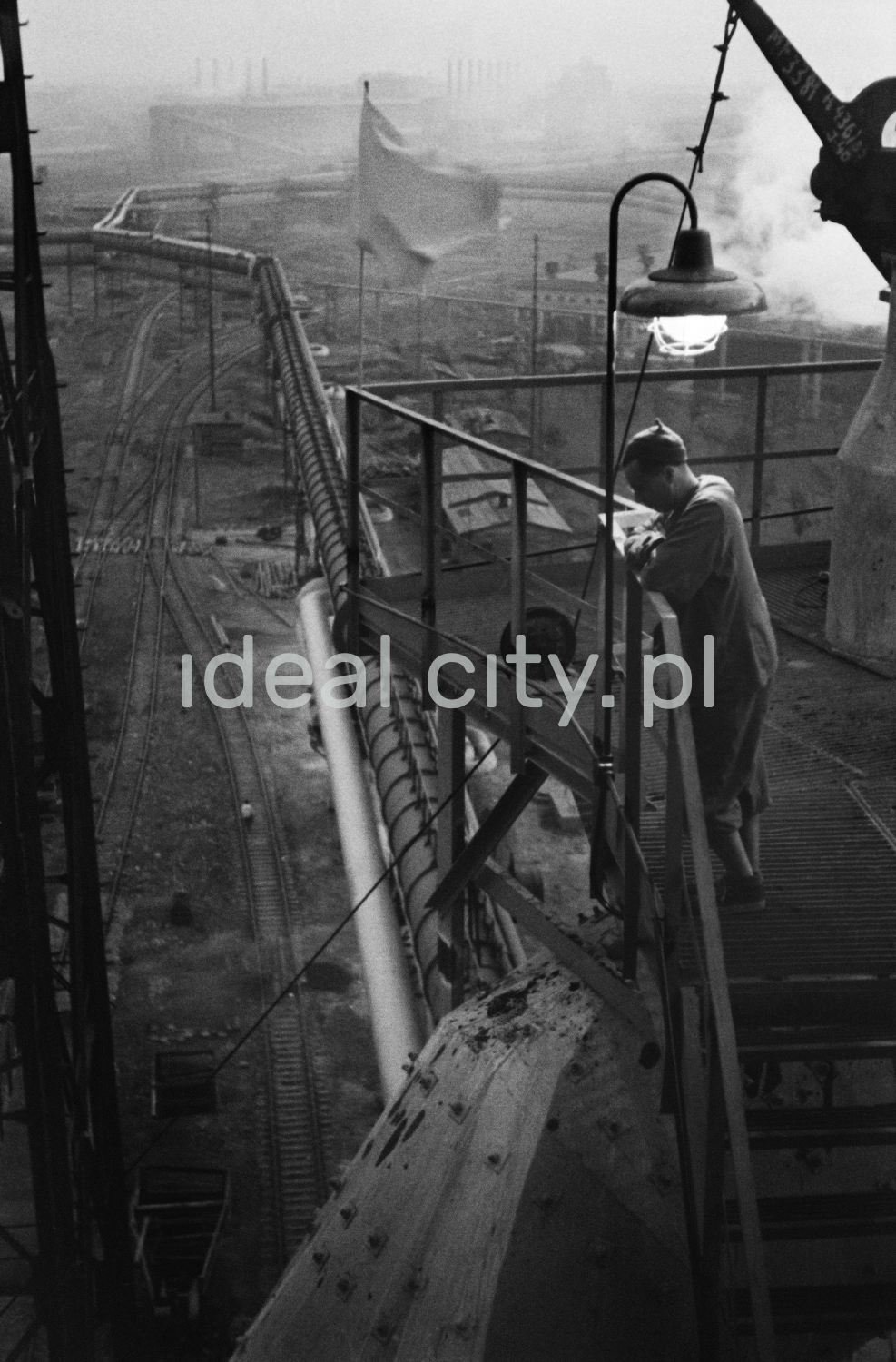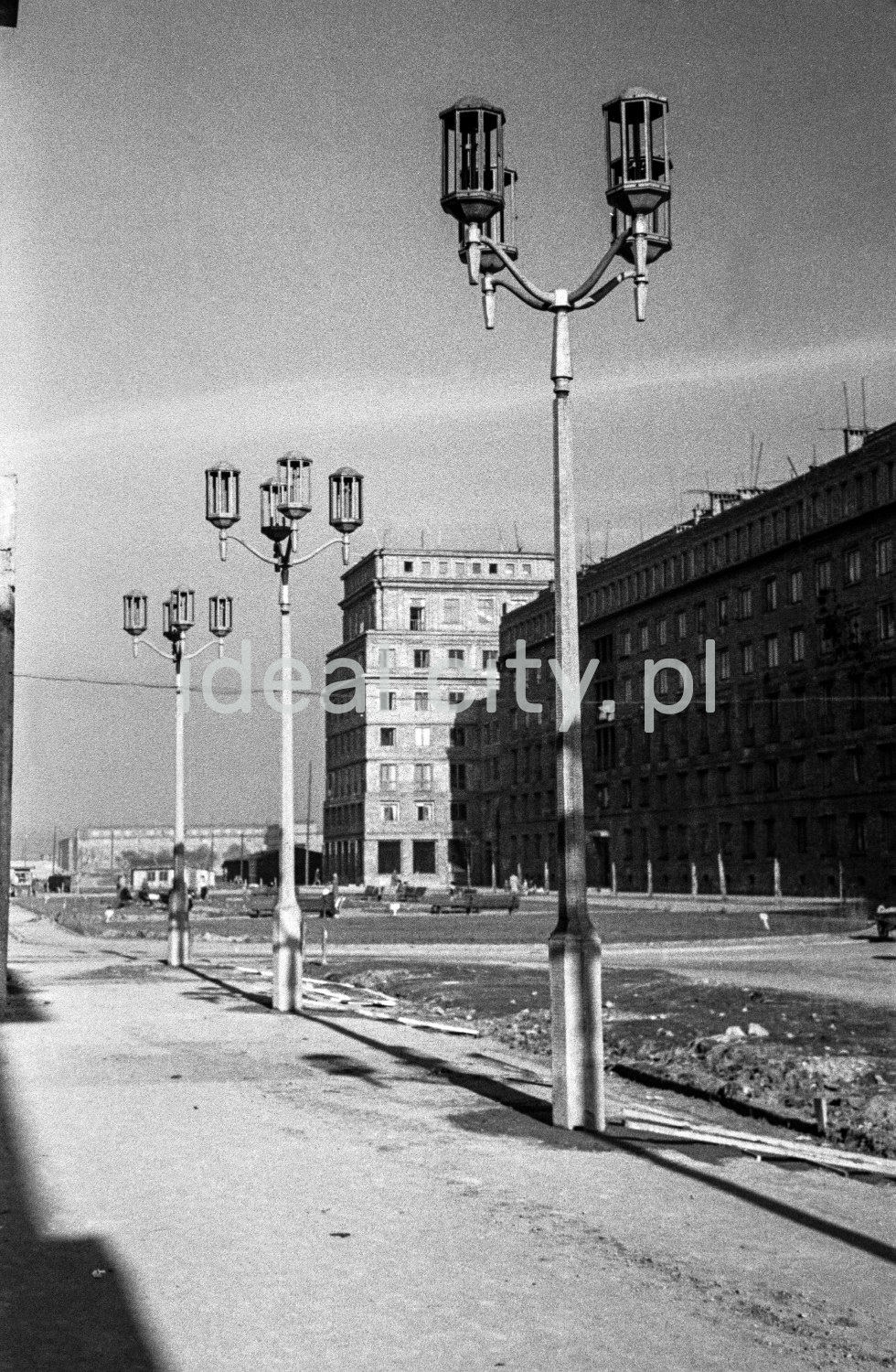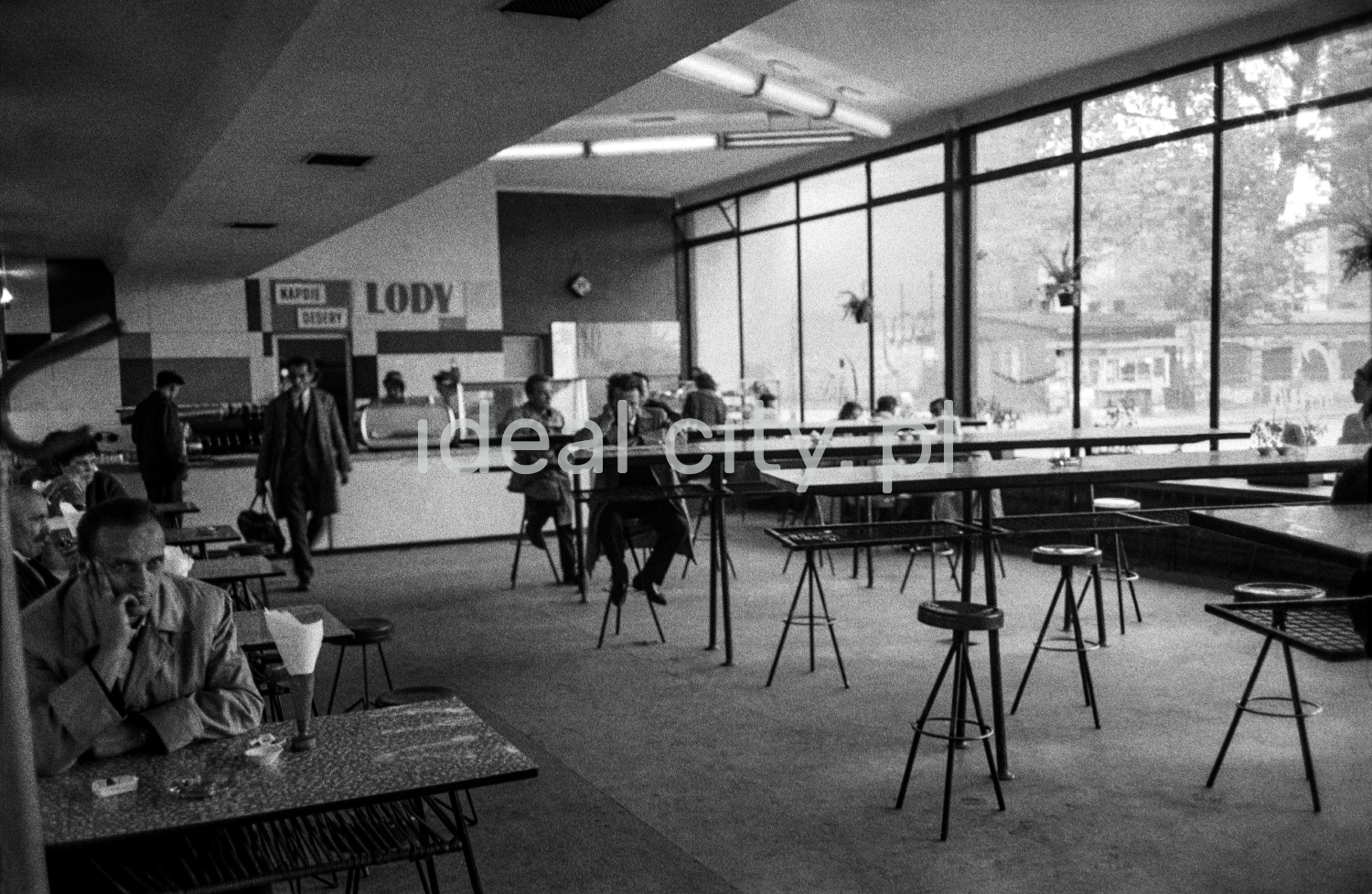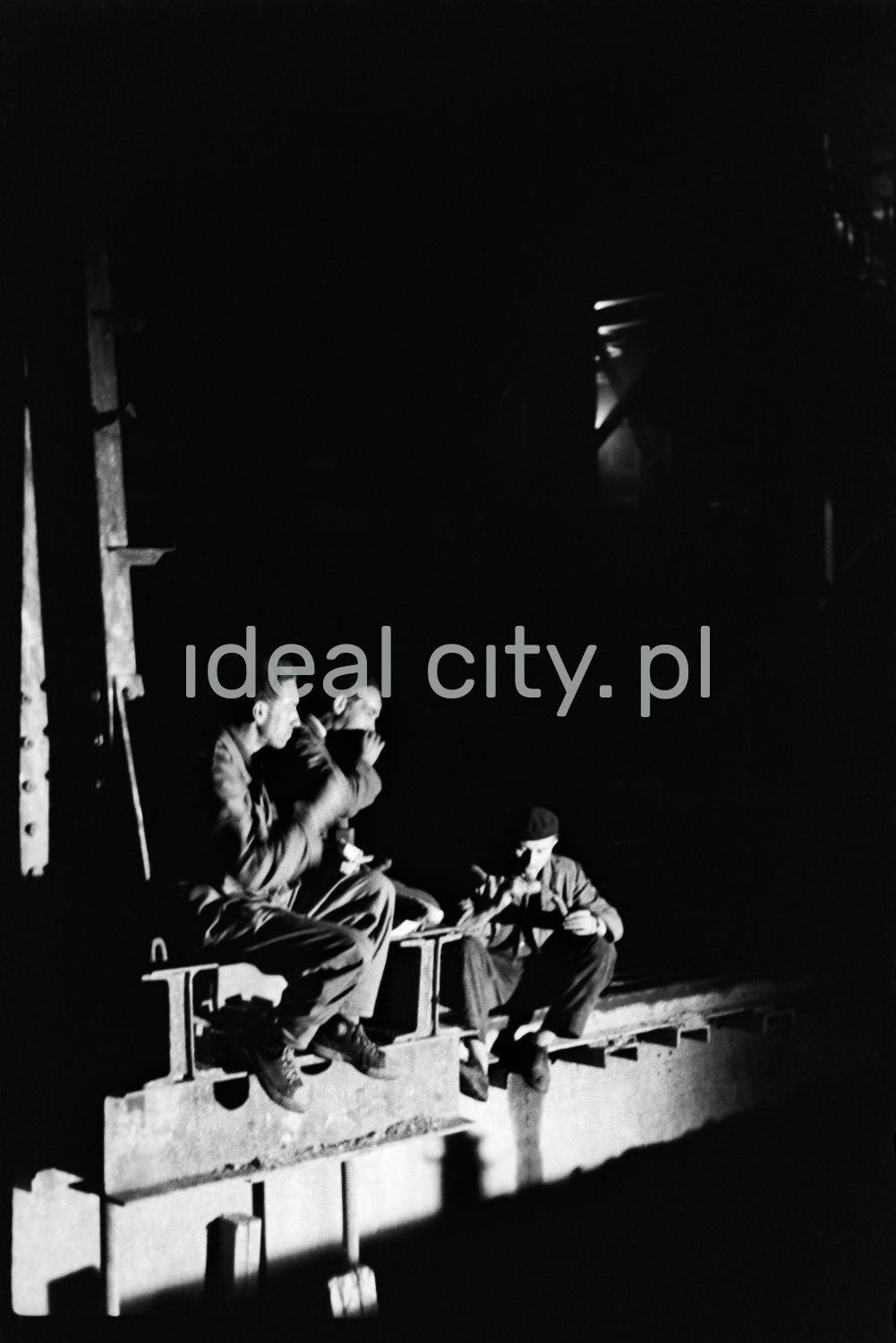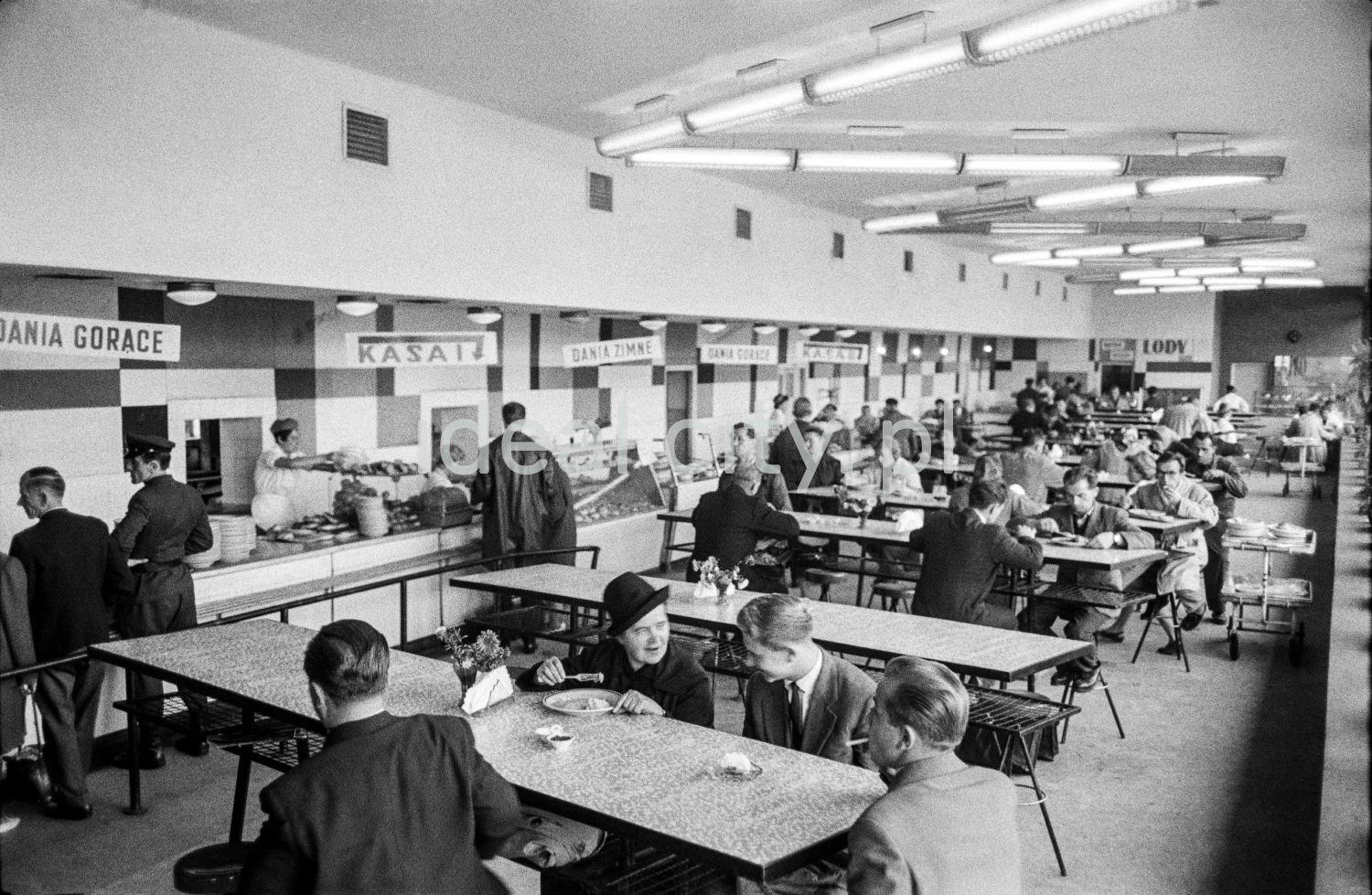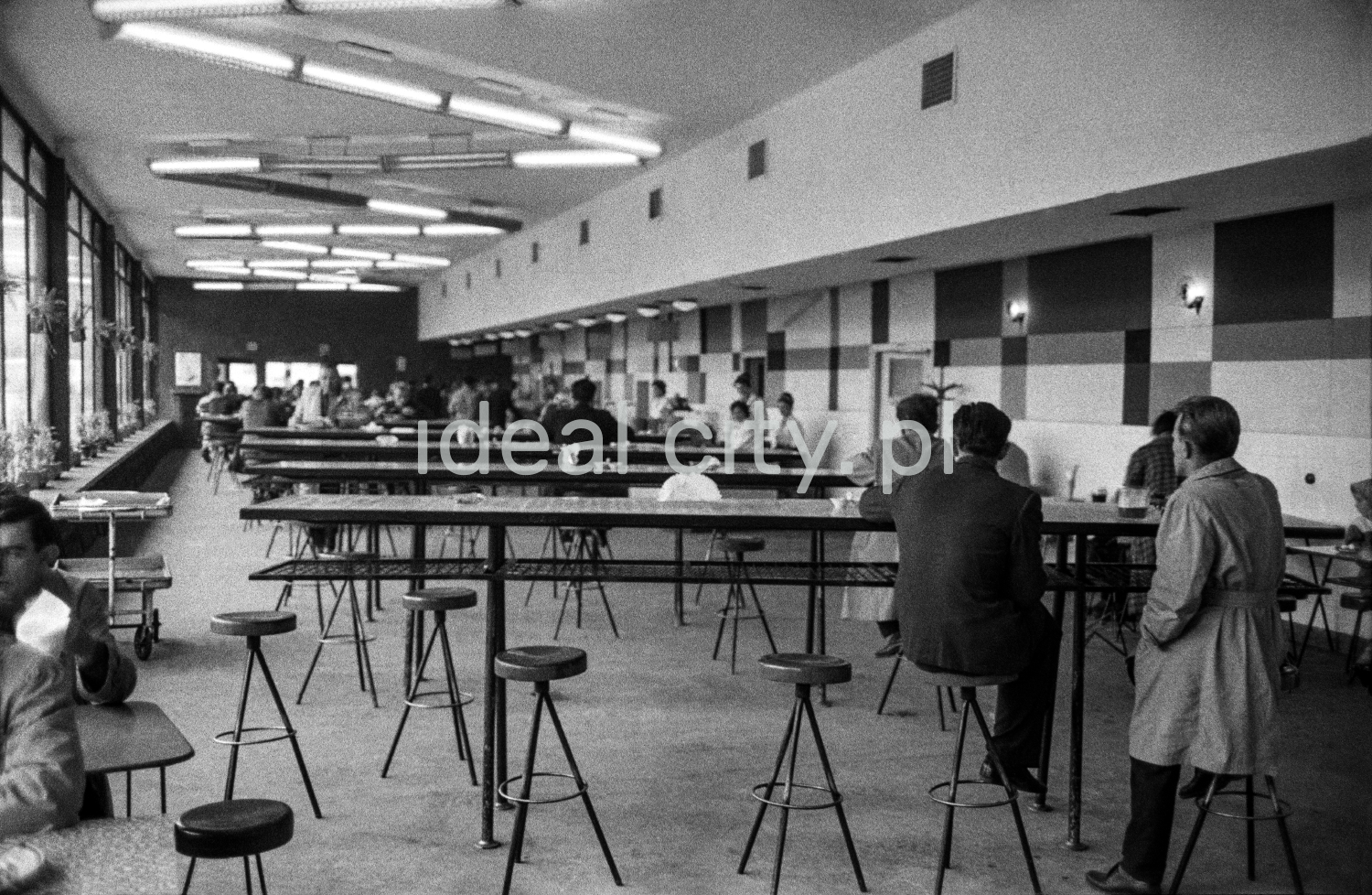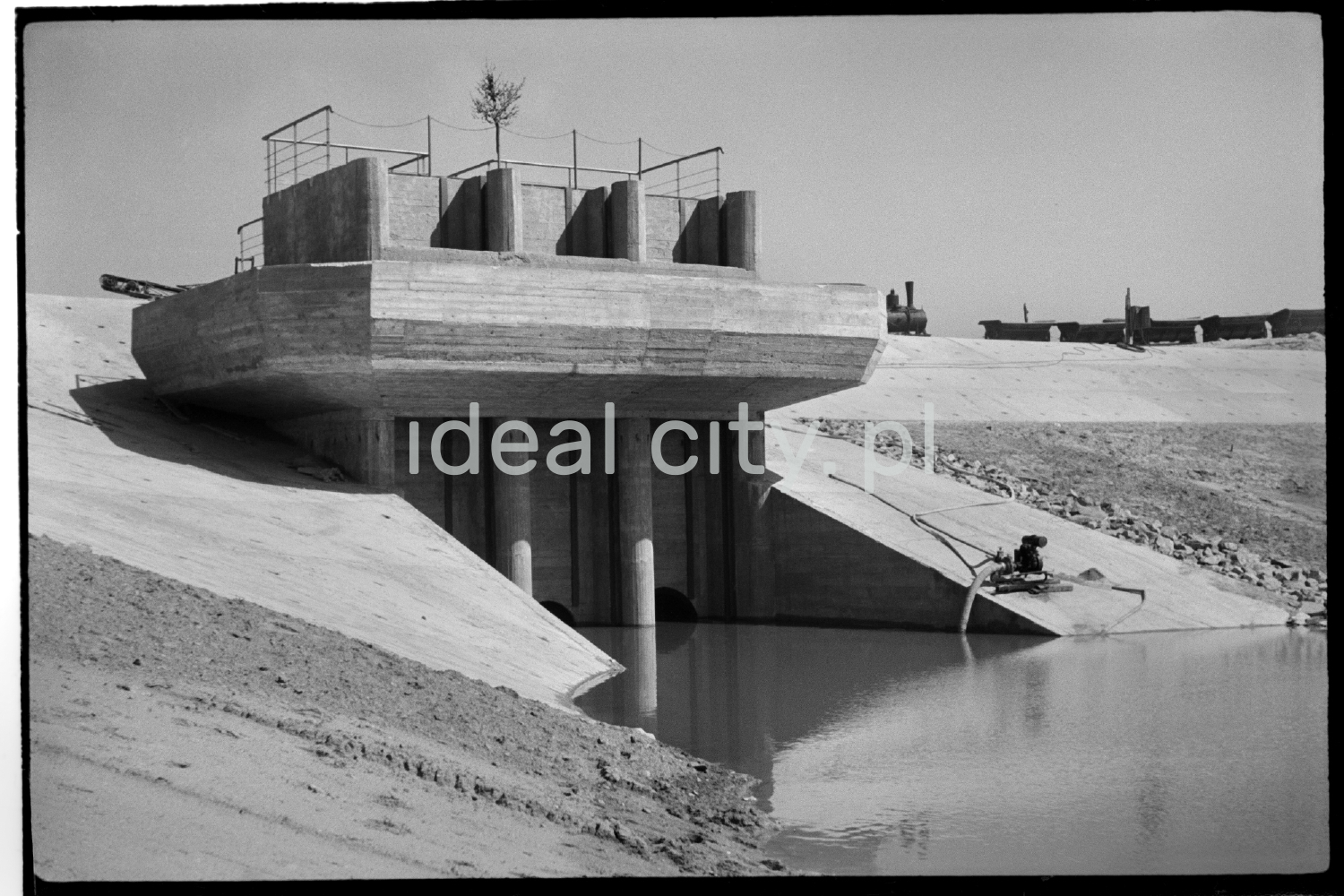THE COSTUME OF THE CITY, THE COSTUME OF HISTORY
From the cycle Nowa Huta Observations
The debate between “skin and bone” and “dresses” that we put on buildings constitutes a long series of changes in the history of architecture.
And there is another costume – the costume of history that we apply to the identity of the city which, thought we want it to stand for the present day and look bravely to the future, keeps getting gripped in the tongs of the faith in the sense of history.
***
The photograph depicts three workers (bricklayers) waiting for bricks which are suspended in cages/boxes. Waiting to use them instantly. Ready to unload the cages. One of them has stretched his arms towards the skies, in the orans position. A rain of bricks.
The threesome system of bricklaying allowed building houses in no time at all, and that was the primary objective pursued by builders. The most efficient workers competed on how many bricks they would lay in a specified length of time.
Aleksander Kobzdej’s painting Podaj cegłę (Give Us Another Brick; 1950, National Museum in Wrocław) is a social realist manifesto of the construction and reconstruction of Poland. One of the bricklayers is removing remains of the old mortar from a brick. Old bricks, obtained from cities that used to be German, such as Wrocław or Szczecin, were recycled for the re/construction of post-war Poland, but also for the building of new cities (Nowa Huta or Tychy).
The relaxation seen in the photograph from the Nowa Huta archive could be coupled with Andrzej Wróblewski’s Fajrant w Nowej Hucie (Time Off in Nowa Huta; 1953), one of the artist’s social realist paintings. But Wróblewski programmatically failed in social realism. His pictures are formally correct, but they contain – like his other works – sadness, uncertainty, and lack of affirmation which was one of the defining features of social realism. The social inferno.
***
Architecture and its body was given costume throughout its history. At the turn of the 19th century the term architecture parlante – ‘speaking architecture’ was coined. French Neoclassical architects, including Claude Nicolas Ledoux and Étienne-Louis Boullée, claimed that the style of a building should match its function. That was why most churches built in the early 19th century were in the neo-Gothic style, believed to be the right choice for the religious thought of the time (its propagation in the days of emerging industrial societies), Orthodox churches in the Byzantine style, and public buildings monumentally Neoclassical.
Although postmodernism did away with formal obligations and styles can be used at will, some buildings still exhibit forms stereotypically linked to their functions: corporations’ headquarters have the “skin and bone” of a glass skyscraper, and offices are supposed to look dignified thanks to ancient-looking columns, etc.
Social realist architecture was meant to be functional in the first place, to satisfy residential needs.
Functionality and simplicity soon yielded to badges – signs of the system. Classical solutions in social realism were decreed by Zhdanov quite early. They were clear, they showed hierarchies, and relations of power.
In June 1949, the first block of flats was ready. That moment is regarded as the starting point of the construction of the whole district. The address – 14 Wanda Estate. The costume was plastered brick. Buildings that came later grew more and more similar to the architecture of such blocks in the 1960s-80s. Bricks were replaced by the ‘dress’ of painted panels. In Nowa Huta the colour was olive, yellow, greyish, and even pink. In the 1960s and 70s dirt and dust turned Nowa Huta into a grey town.
I mistrust all systematizers and avoid them. The will to a system is a lack of integrity” (Friedrich Nietzsche, Maxims and Arrows).
The ideas that gave rise to the city as well as the whole system (every system actually), were to generate hierarchies, order, systematics.
But:
In broken mathematics
We estimate our prize
Vast – in its fading ratio
To our penuriouys eyes!
(Emily Dickinson, 88: “As by the dead we love to sit”)
The will to rules in the process of the building of Nowa Huta was not a feature of this side of the bloc. Blocks (sic!) made of bricks or cement were raised everywhere.
In his text Slum Construction, Situationist André-Frank Conord writes about Le Corbusier’s dreams coming true:
Within the framework of the social policy program of the past few years, the construction of slums as a means of dealing with the housing crisis is continuing at a fever pitch. One cannot help but admire the ingenuity shown by our Ministers and our town-planning architects. […] Their preferred building material is reinforced concrete. With this material, which lends itself to the supplest of forms, they construct only square buildings. […] a style develops that sets the standard of thought and civilization for the mid-twentieth century. It is the “barracks” style. The 1950s house is a box.
Decor determines gesture: we will build passionate houses.
***
Apparent ‘humanisation’ of architectural rules as close relations and similarities between the forms of stars or crosses into which the schematic human figure is inscribed is another question. In Vitruvius’s anthropometric ideas, Leonardo da Vinci’s Homo quadrates, Francesco di Giorgio Martini’s ‘organic’ anthropomorphism, or Le Corbusier’s Modulor, the proportions of a prepared and ideal human body served as the basis for construction on a human scale, for instance, “temple proportions according to the human body” (di Martini). In fact, contrary to the ideas of anthropocentrism, they became tools of disciplining man in a normatively established system.
This problem – in relation to the history of aesthetics – was largely explored by Polish artists, especially in the 1980s and 90s. Zofia Kulik’s cycle The Archive of Gestures (1987-91), comprised of monumental compositions with recurring decorative arrangement featuring a naked male figure, was the most extensive investigation of the kind. Studied, practised, modelled, and photographed poses. At the same time, anthropometry found its way into Jerzy Truszkowski’s paintings as well, and the red sign painted on a black background brought suffering and torment for the white figure, causing it to writhe most intensely.
A fit body is treasured by ideology. Sports and military service were perfect for the socialist system. Houses as barracks, people as soldiers of the system.
Nowadays, as you’re travelling from the touristically attractive districts of Kraków to Nowa Huta, you pass through Czyżyny with its post-modern mammoth of a castle – erected in the 1990s according to the design of Krystyna Sołchaj-Janczykowska, Joanna Matuszek and Kazimierz Węglarski. In 2011, the cooperative Spółdzielnia Goldex Poldex carried out the famous action Anty-Wawel with Andrzej Szpidler and Daniel Rumiancew. As it was entering modernity, the new era of transformation paradoxically chose to use a costume reflecting the older ones, and historical ideas.
***
History provides costume to the city as well.
A city collects histories like museums do. It takes those out of the closet that are fashionable at a given time. In this sense, city histories tend to be conformably up-to-date. Pasts are assembled, collected to be used on particular occasions.
The very act of collecting and processing a collection is symptomatic of the Homo sapiens species. Civilisation was originated by hunter-gatherers (!), and next came those societies that turned culture into “the infinity of lists” (Umberto Eco), in an attempt to systematise knowledge. Excessive accumulation suggested chaos and infinity, on the one hand. On the other, bringing an order to it, listing and cataloguing with reference to qualities created the impression of apparent control, which remains one of the basic scientific methods. Manfred Sommer concludes in his book Sammeln: “Nowadays, we’ve developed a conscious and rational way of life, involving the generation of knowledge by scientific research, the preservation of it in writing, and the ordering of it in the form of a system. Collecting experiences means gathering facts and data, and making them available in the printed form in libraries, and in the audiovisual form – in computer memory.”
***
The ‘brick’ costume has received its own historical narrative. Years after Kobzdej’s painterly apologia, Andrzej Wajda took a different, critical approach to the history of Nowa Huta in his film Man of Marble (1976). Mateusz Birkut, the main protagonist, is a symbol for many: model workers, those who had gone up in the social hierarchy, full of hope, the apparent beneficiaries of the system who turned out to have lost in the end. Wajda used old photographs and cinema newsreels in his work, presenting a sort of found footage.
The question of using found footage in films is an important problem related to copyright and public domain, especially in a historical movie in public cinema, a tool of social engineering.
Every cult, or myth, needs a founding moment, a foundation act usually setting historical policy into motion (but we should remember that history is an attitude to the past chiefly in the Western culture, and not in every culture), or so-called “practical past” in historiography (a term proposed by Michael Oakesshott) – a way of seeing bygone days adopted by groups, individuals, or institutions in everyday activities. It is by no means free of political conditioning, and every representation of it is characterised by irremovable relativity.
Film has always played a prominent role in the practice of ‘employing’ history, frequently in the service of a dominant ideology (also for economic reasons – cinema, as well as architecture, are so-called “expensive arts,” impossible without substantial financial input), with few exceptions in contemporary historical cinema made in an emancipatory vein. A film history of humankind and its social reception could no doubt constitute a separate subject of study. Lenin’s famous statement – “cinema is the most important of the arts” is intentionally put into effect by all sort of authorities and discourses.
The case of Nowa Huta demonstrates how old historical costume (workers’, communist), a handy instrument and the driving force behind an era at first, has eventually turned into ballast and was hidden in the closet. Today, the ‘dress’ of ‘anti-communist’ identity has been taken out.
We have no direct access to the past. Representation is the clou of the reception of history. Art history develops from recording content to recording form, and performing a critical analysis of the latter. The past is not something that exists independently from its representations; it is a “place of fantasy,” according to Haydan White, an American historian of historiography. And so there is no one history, but a variety of meanings imposed upon us by past occurrences. All we can do is compare diverse versions of it, accepting the one that is most persuasive. Cinema is a perfect place for persuasion. “It doesn’t give you what you desire – it tells you how to desire,” to quote Slavoj Žižek.
Created histories have determined the shape and function of the city. As though the people of Nowa Huta were not supposed to alter or use the potential of the city as they liked. Anyway, the old Kraków or the ‘Jewish’ district of Kazimierz are also stuck in the trap of stereotypical thinking.
In his essay “The Value of Narrativity in the Representation of Reality,” Hayden White writes:
Now, the capacity to envision a set of events as belonging to the same order of meaning requires a metaphysical principle […]. In other words, it requires a “subject” common to all of the referents of the various sentences that register events as having occurred. If such a subject exists, it is the “Lord” whose “years” are treated as manifestations of his power to cause the events which occur in them.
There is a need of a central principle that organises discourse and is at once “realistic and narrative in structure.” This role is usually taken by the figure of a saint, a lord-demiurge, whose actions are justified by historical necessity.
***
In the photograph we can see enthusiasm about the load of bricks. The process of putting the brick costume on the city was in fact its foundation. Workers – orantes, like a sect of early Christians or the first punks, form a still informal group of those who believe in making order, putting on the costume of architecture and history.
It was still too soon to discuss the murky side of the genre…
